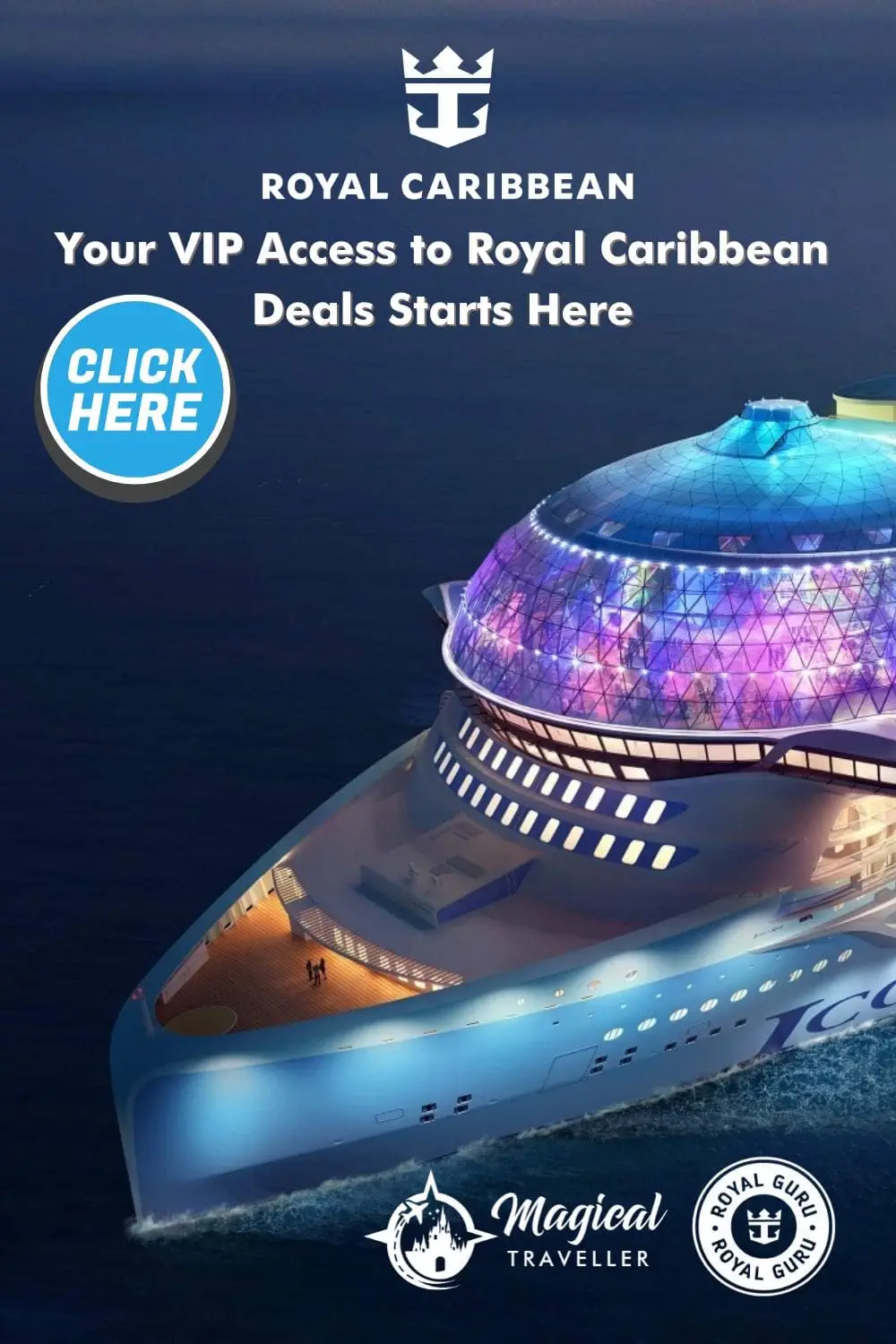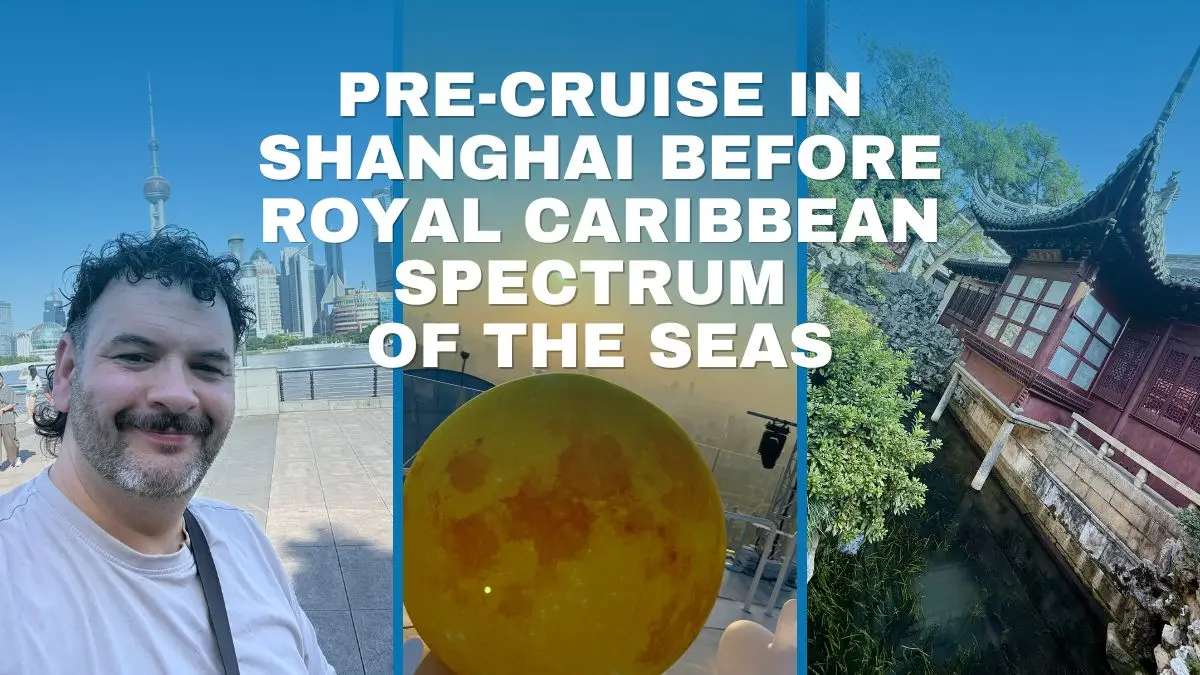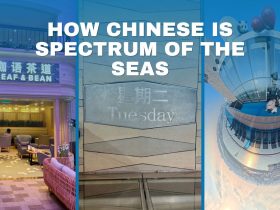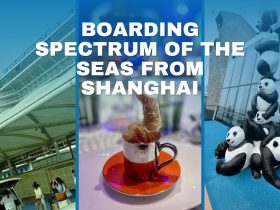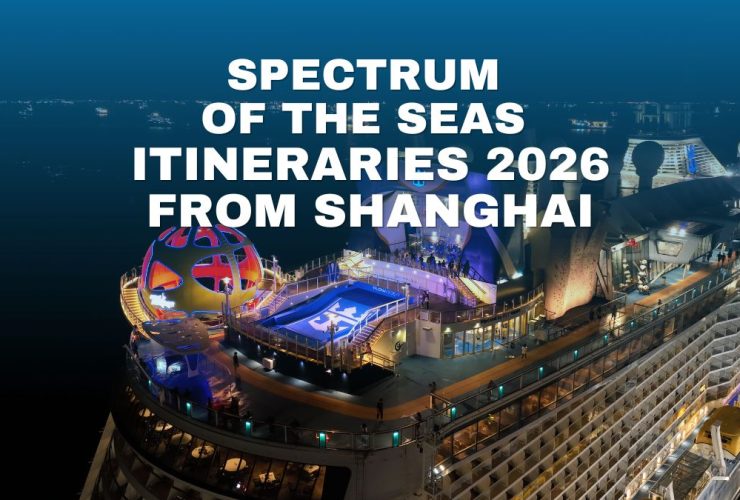This trip was something truly special. I was invited to China as part of a partnership between Royal Caribbean China and Travel Weekly UK, a programme created to give ten British travel agents the chance to experience what it’s really like to travel to China and sail onboard Royal Caribbean’s Spectrum of the Seas from Shanghai.
For me, it wasn’t just another work trip; it was the opportunity of a lifetime. Visiting China had always been high on my bucket list, but I’ll admit, it’s a destination that can feel a little daunting at first. There’s so much conflicting information online about visas, apps, payments, and how to prepare before your cruise from Shanghai. So when this chance came up, I jumped at it.
It was the perfect way to discover what a pre-cruise in Shanghai before Royal Caribbean really feels like, to explore the city, understand the logistics, and experience first-hand how easy it is to start your Royal Caribbean cruise from China.
What followed was one of the most memorable, eye-opening, and rewarding trips I’ve ever taken.
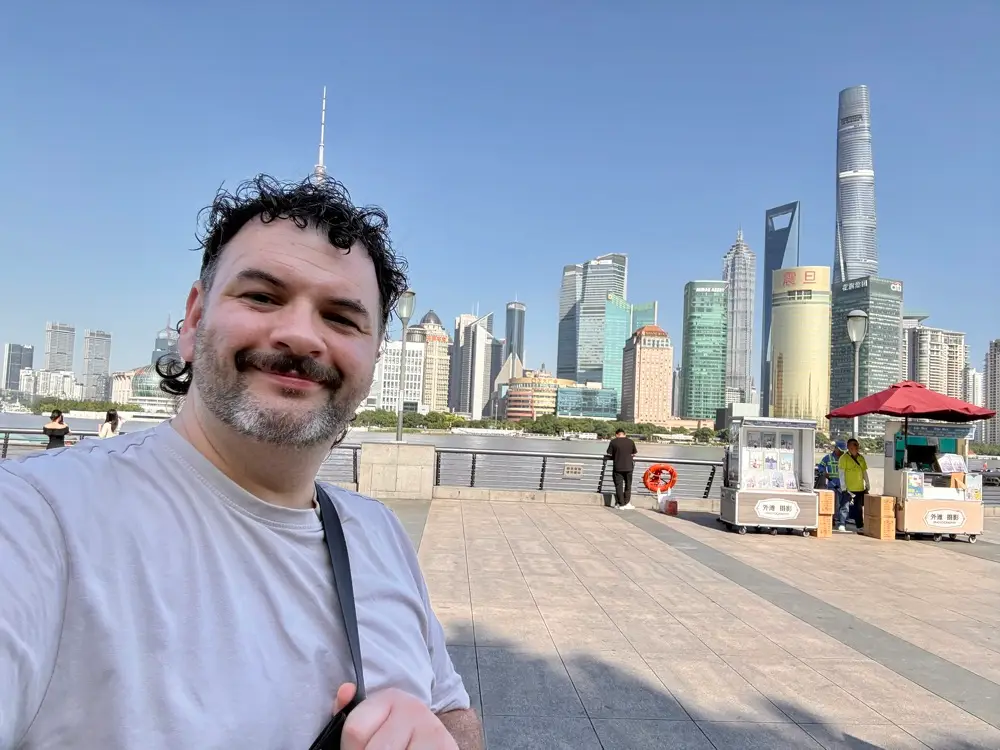
✈️ Flying from the UK to Shanghai with China Eastern
Our journey began at London Gatwick with a China Eastern Airlines flight direct to Shanghai. China Eastern is one of the few airlines still flying directly between the UK and China, using air routes through Russian airspace. This makes it a more efficient journey than other airlines currently taking indirect routes. British Airways does offer a direct route, but has to avoid Russian airspace, adding another 3 hours to the flight time.
The experience was smoother than I expected. China Eastern sits somewhere between a traditional long-haul carrier and a low-cost airline. I’d describe it as premium low-cost. You won’t find every frill you get with a Western airline, but it’s clean, reliable, and perfectly comfortable for an 11-hour flight.
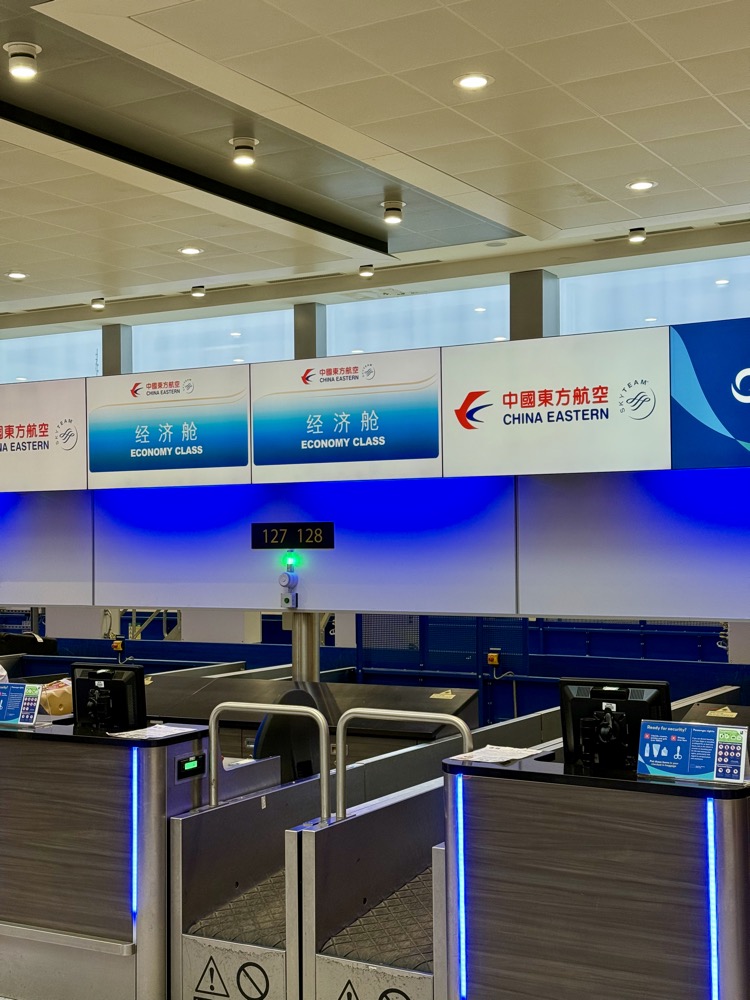
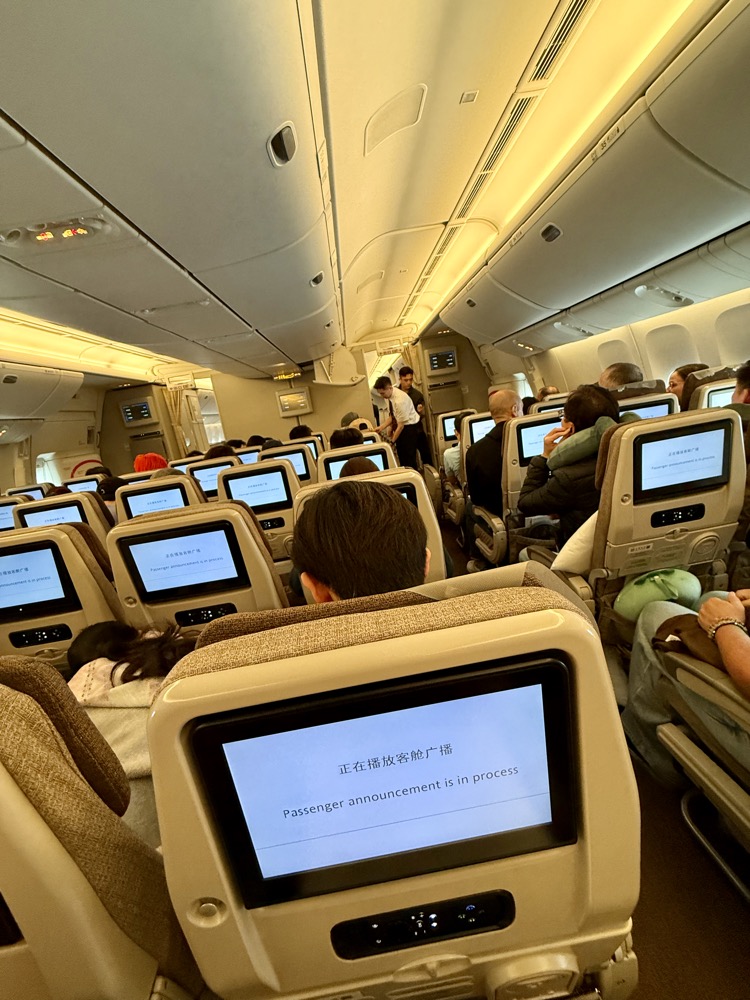
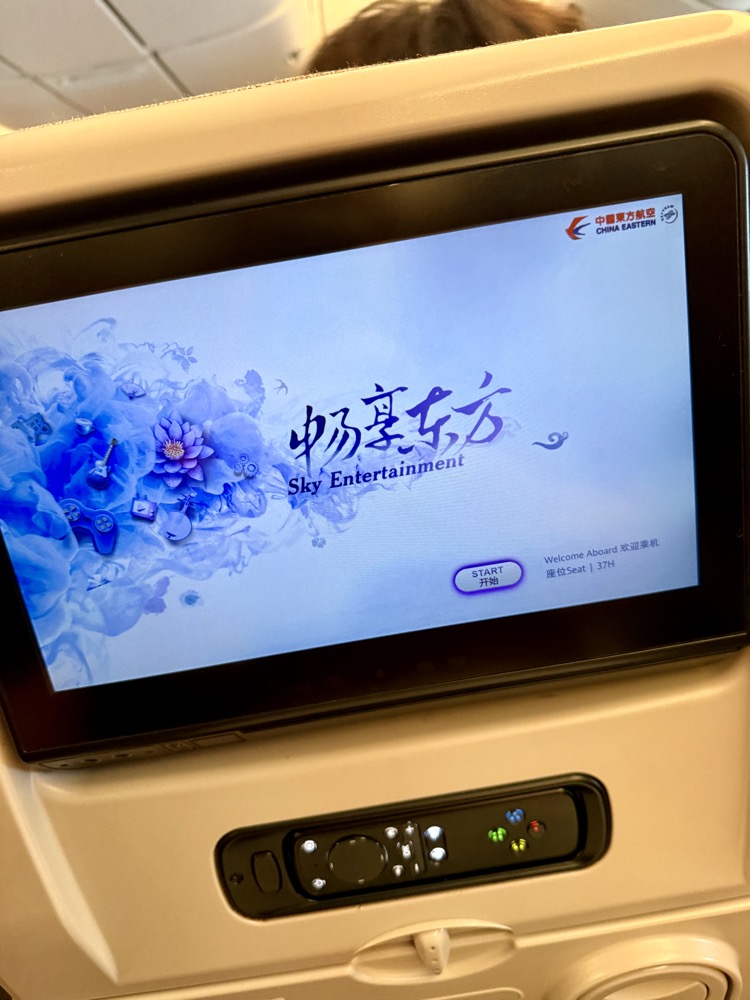
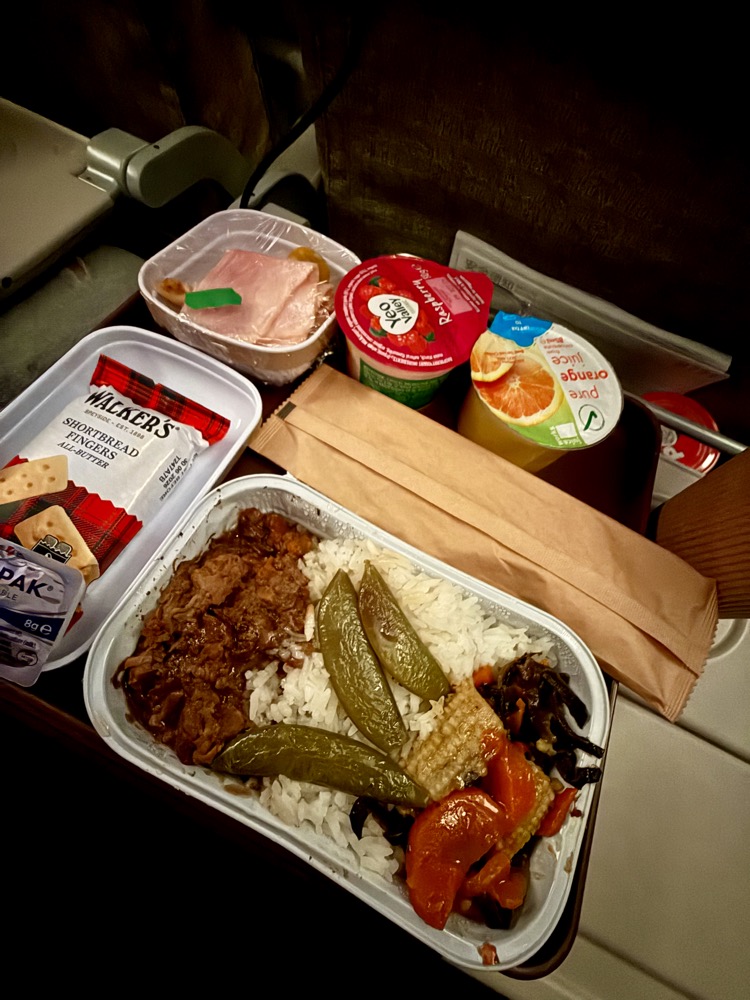
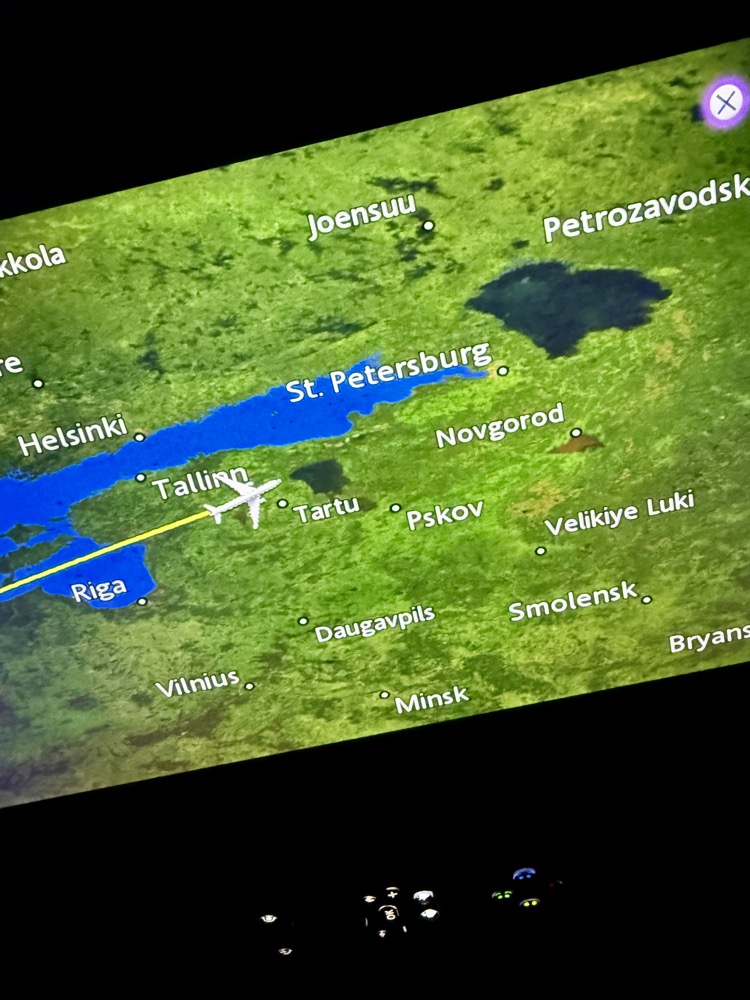
Meals and soft drinks are included, and the crew make regular rounds with water and juice. Alcohol isn’t advertised, but beer and wine are available for a fee. There are two main meals plus a snack, so if you like to graze, bring a few extra snacks from home. I packed crisps and sweets at Gatwick, which turned out to be a smart move.
The in-flight entertainment was better than expected, too, with plenty of Marvel and Disney titles. I usually download shows to my iPad or bring my Nintendo Switch on long flights, so IFE isn’t as much of a selling feature for me as it used to be, but at least there is a choice for those who use in-flight entertainment.
We left London in the early afternoon and landed in Shanghai around 6am local time the following day. It’s an overnight flight, and jet lag hits hard, so if you’re doing this yourself, arrange early check-in at your hotel.
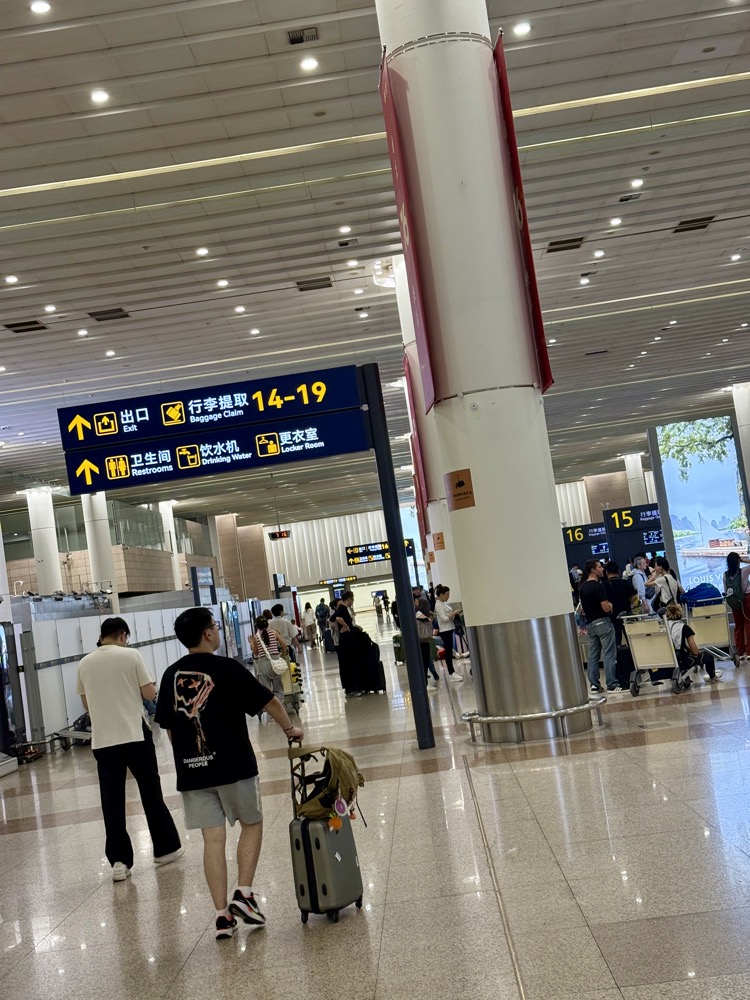
🏨 Checking In – The St. Regis Shanghai Jingan
After landing, our group was met by representatives from Wendy Wu Tours, the leading name in escorted travel throughout China. They would be looking after us during our first day here in Shanghai, and from the moment we met them, I knew we were in good hands.

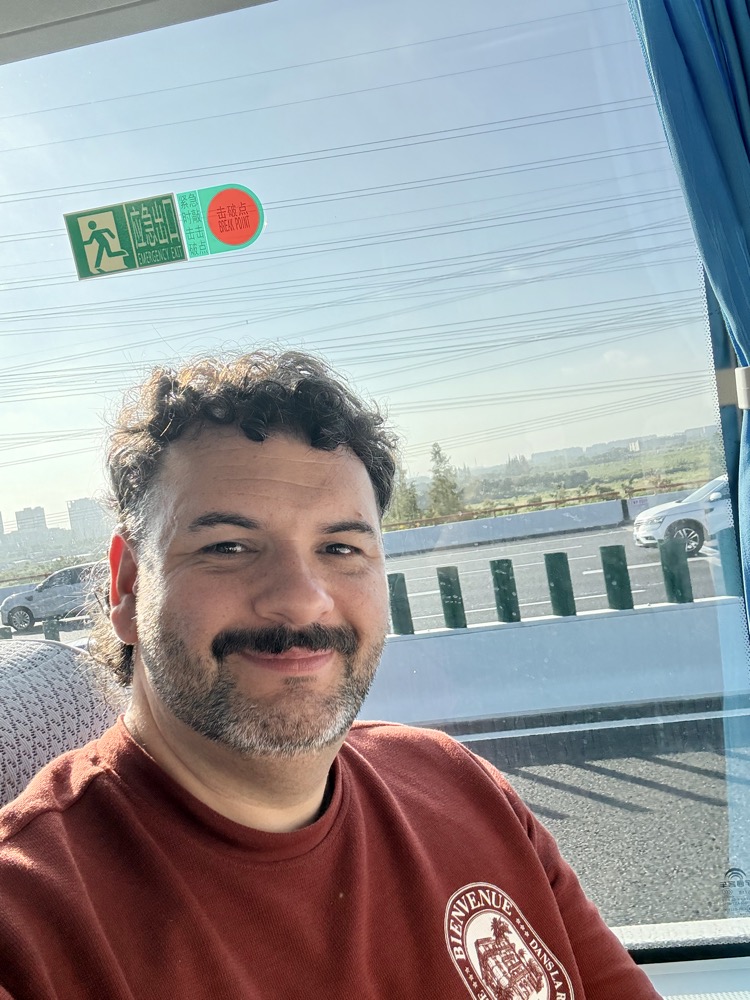
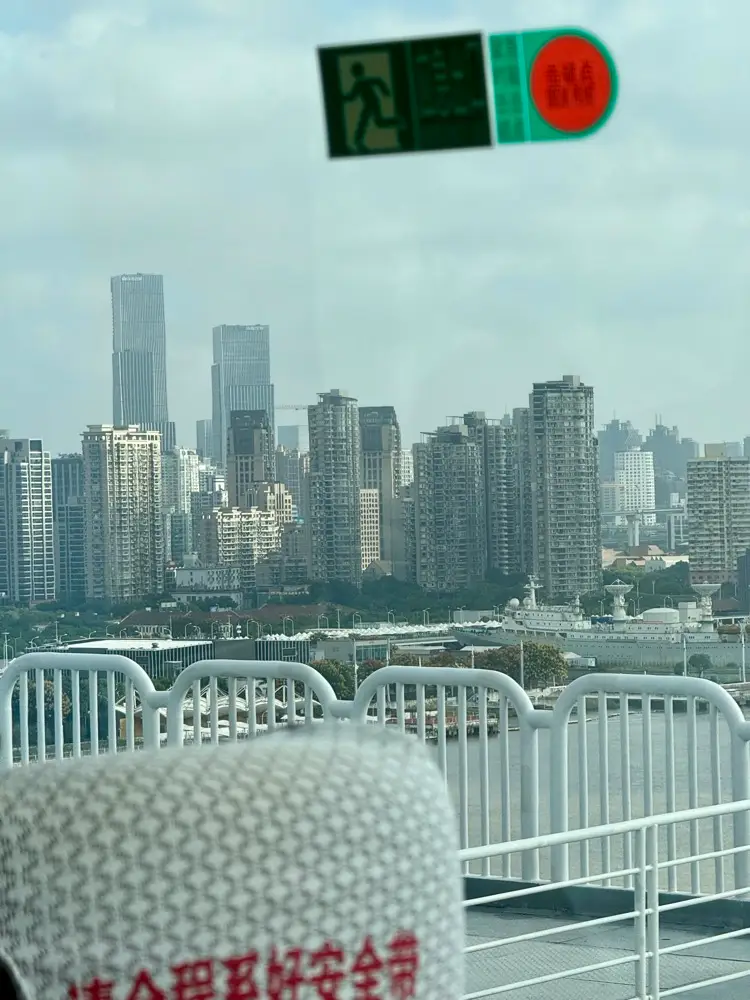
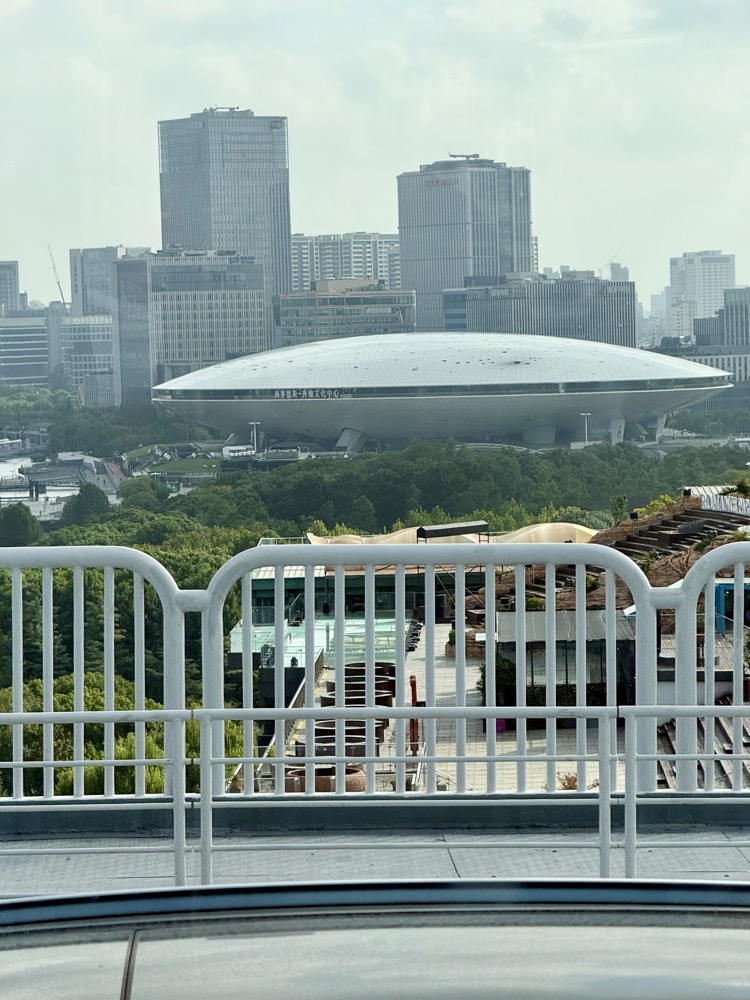
They whisked us straight to our hotel, the St. Regis Shanghai Jingan, where rooms had already been arranged so we could check in immediately. After 11 hours in the air and no sleep, walking into a cool, quiet room was a true luxury.
The St. Regis is stunning, but the view was what really caught me off guard. My room was high up, overlooking the Shanghai skyline, and it completely stopped me in my tracks. I filled the enormous bath, opened the blinds, and watched the city wake up. It was one of those moments that makes everything feel real.
After a soak and a two-hour nap, I felt like myself again and ready to explore.
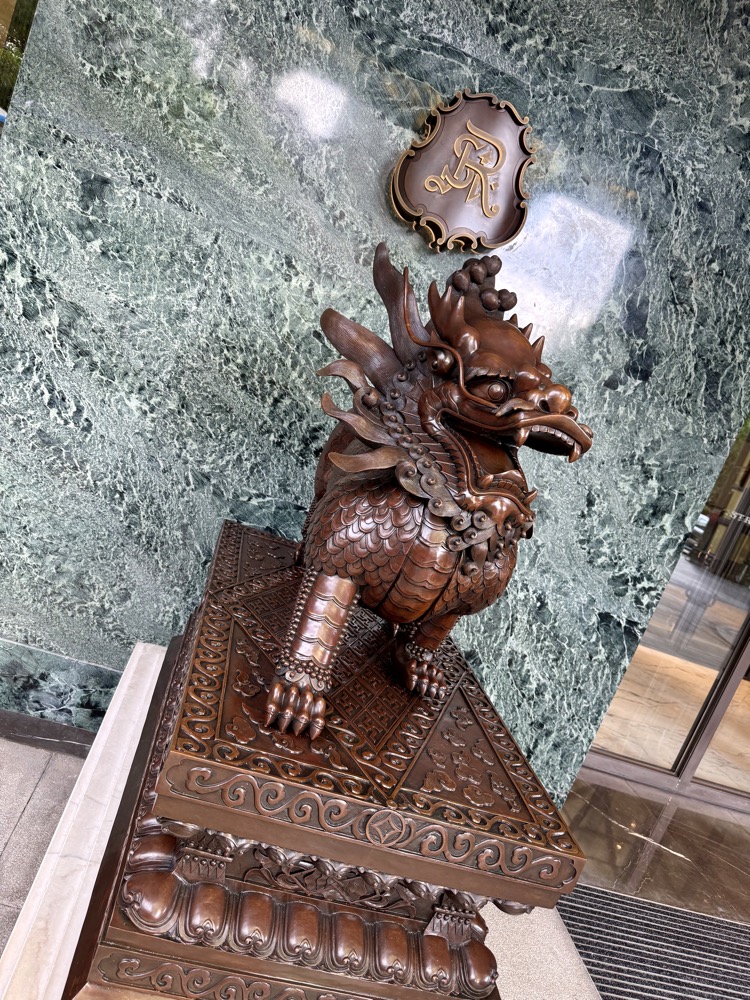
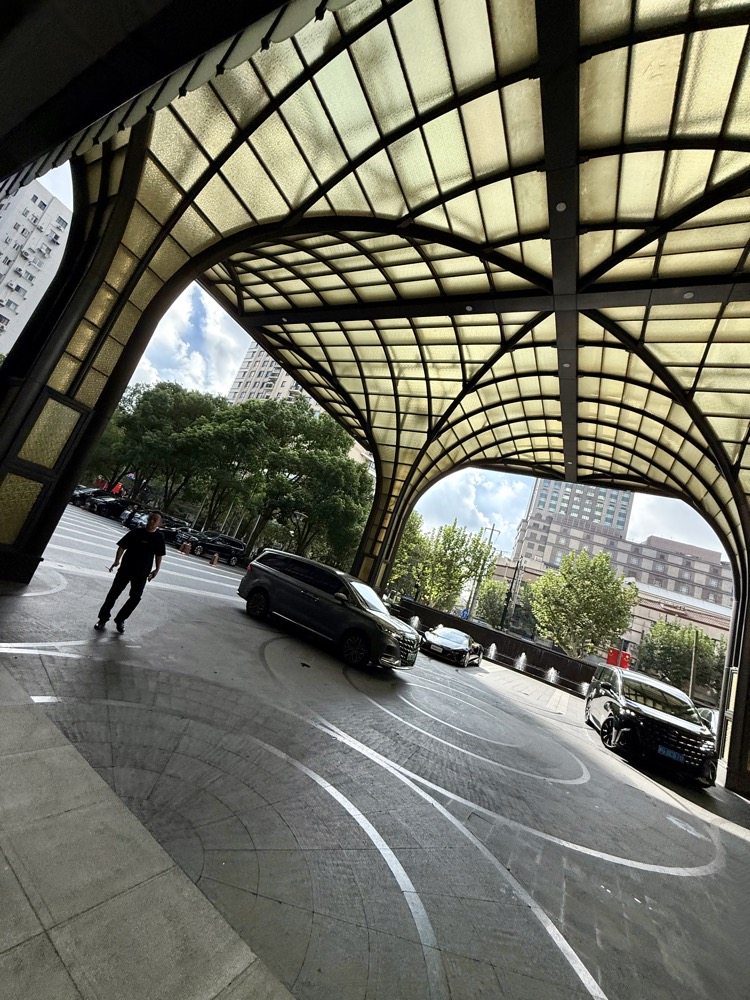
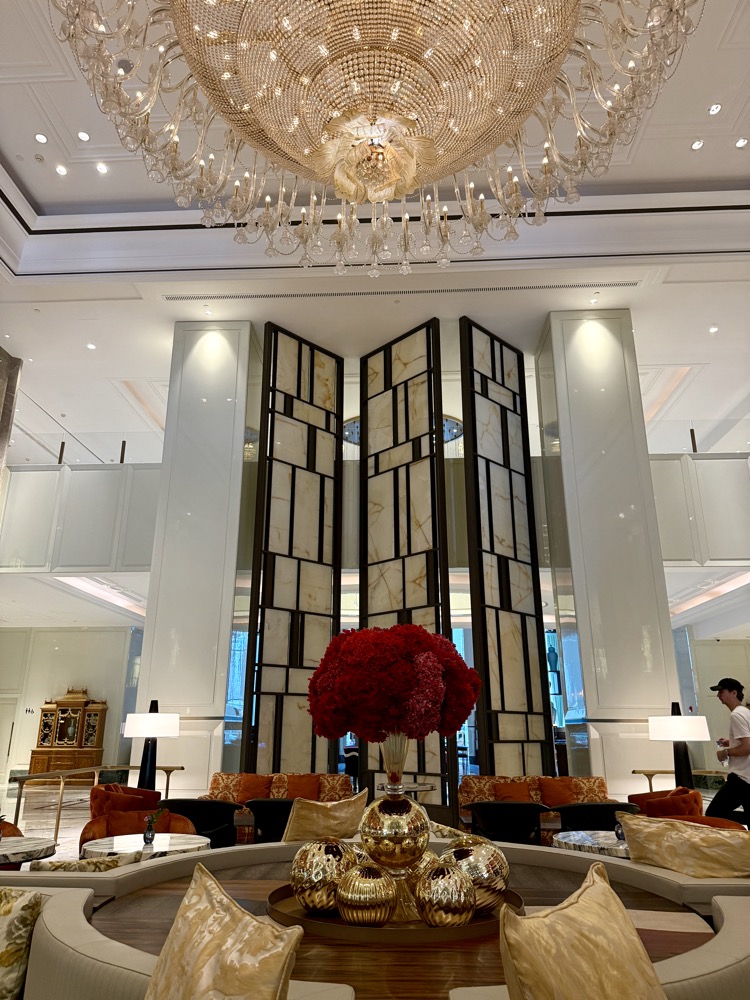
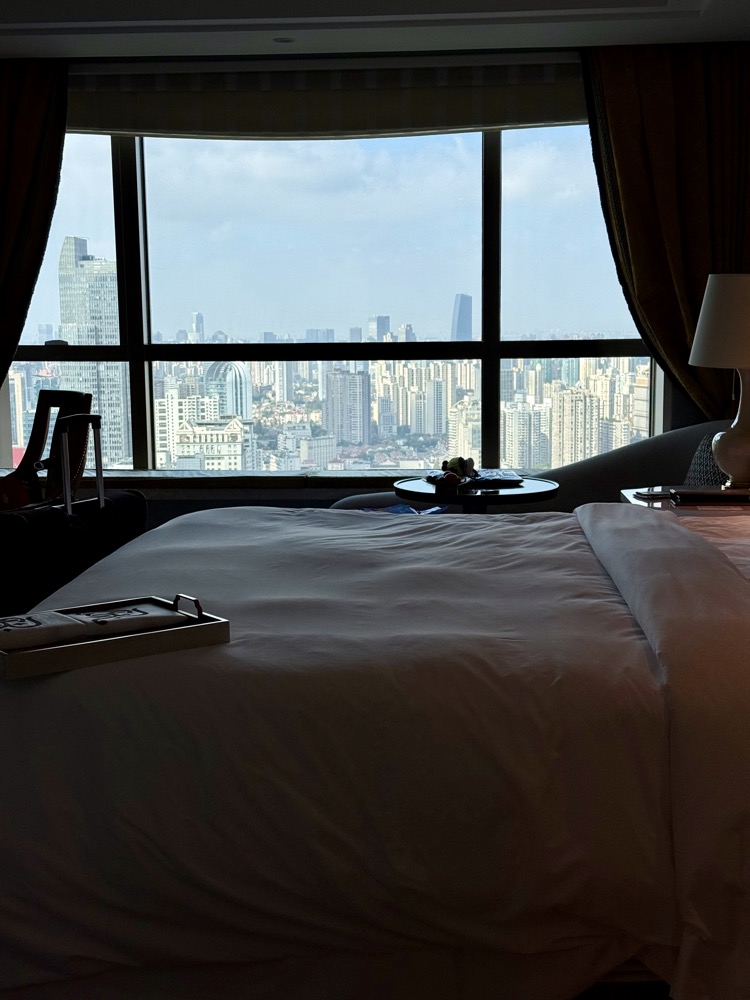
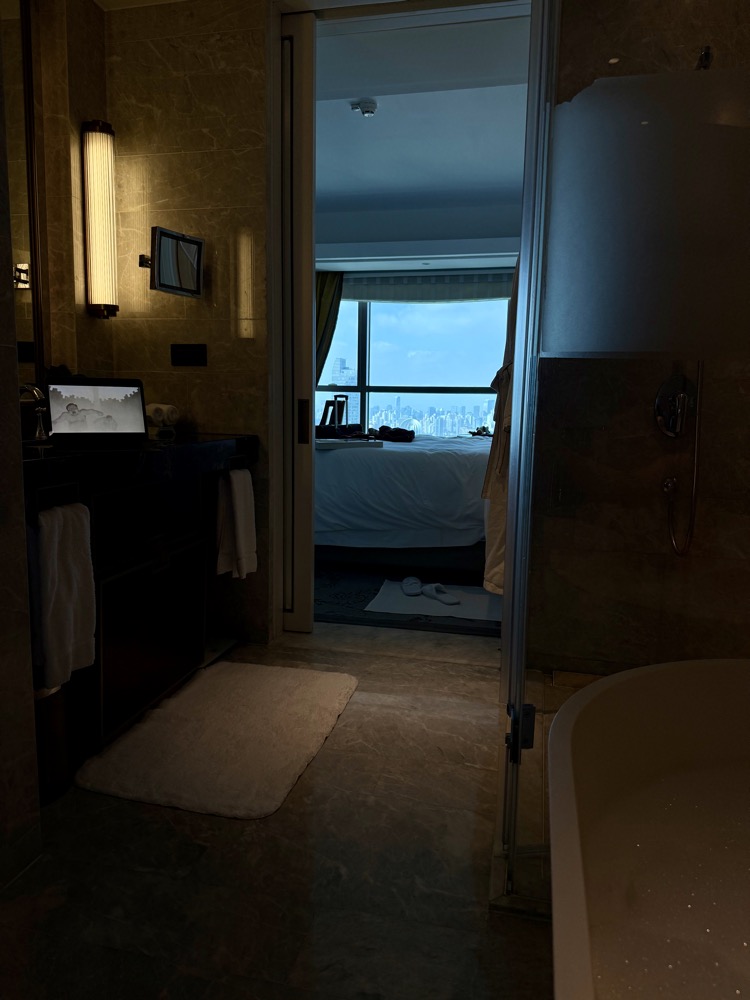
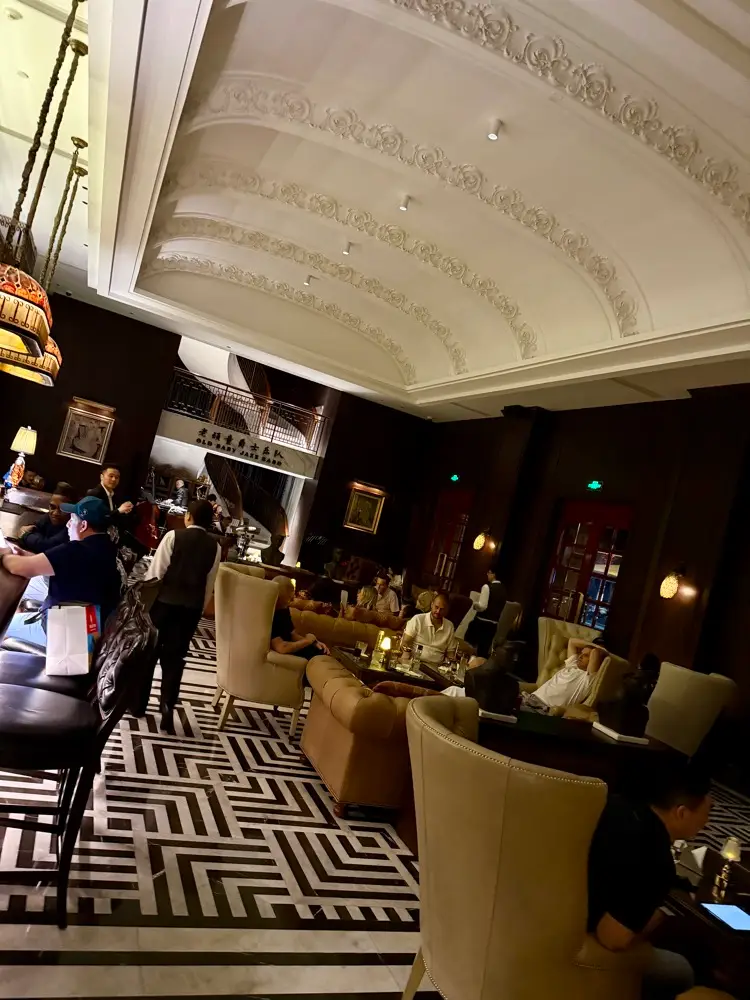
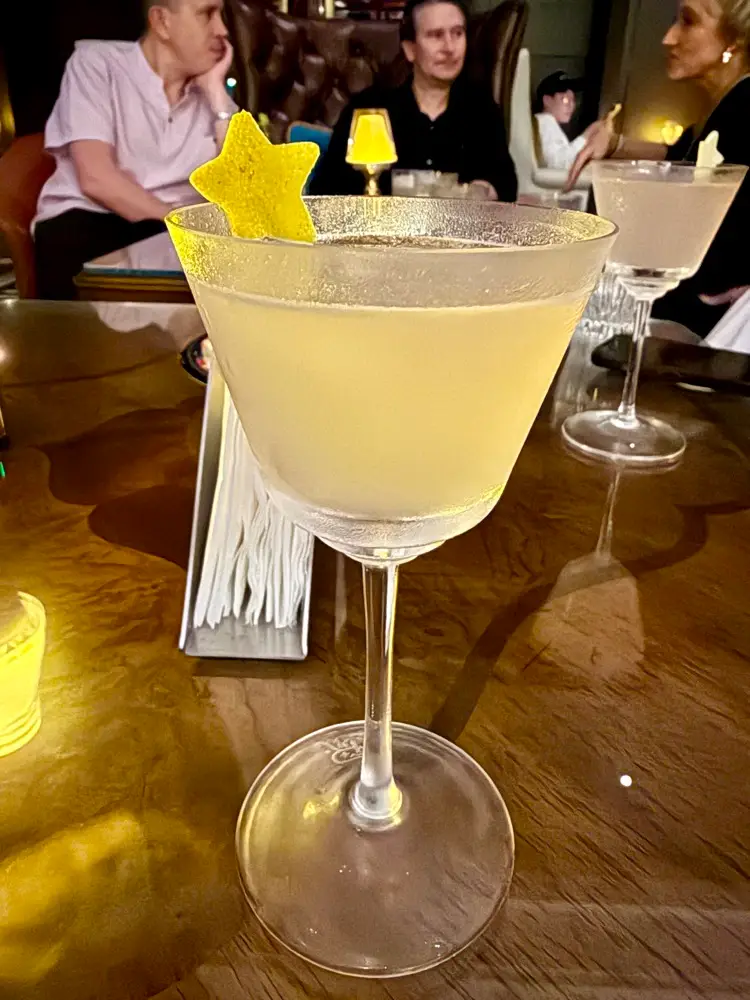
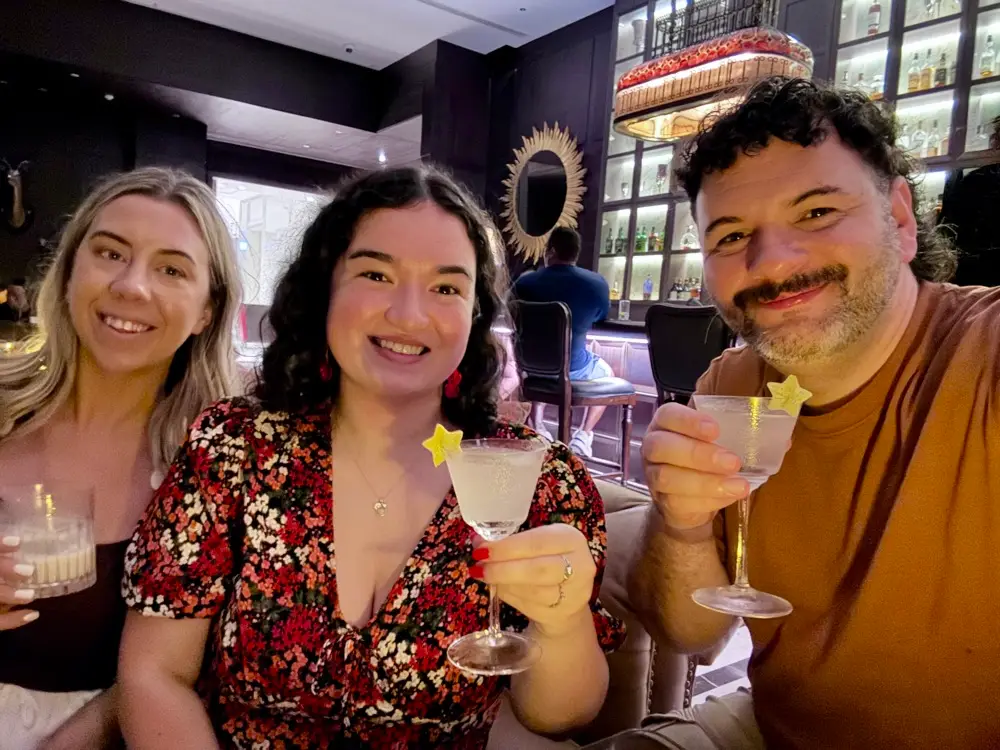
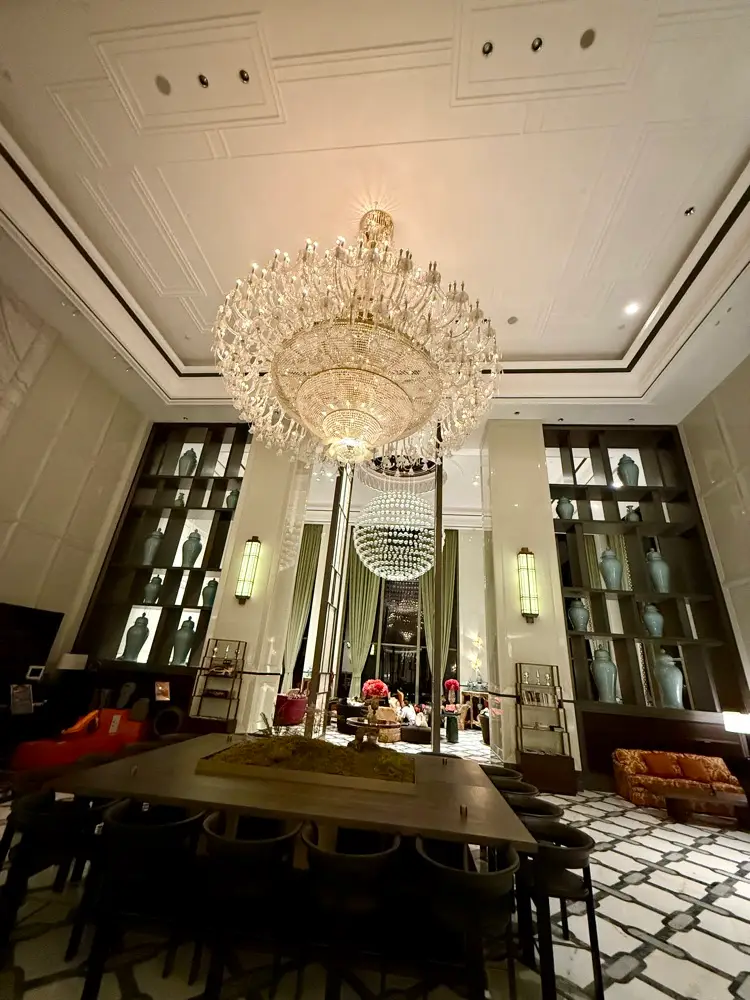
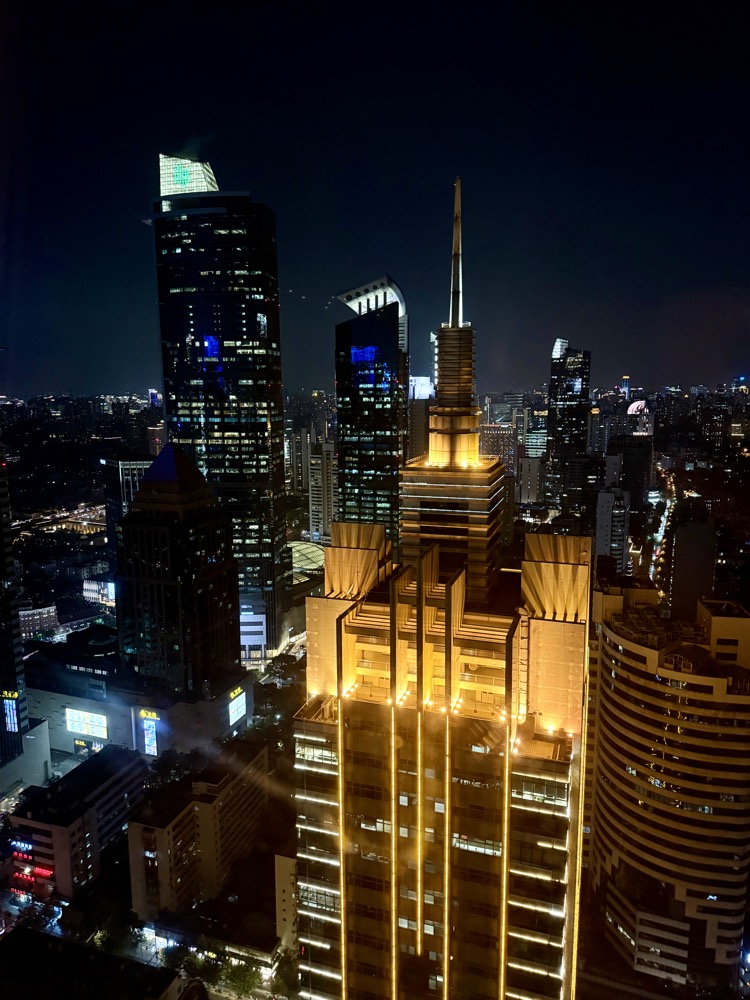
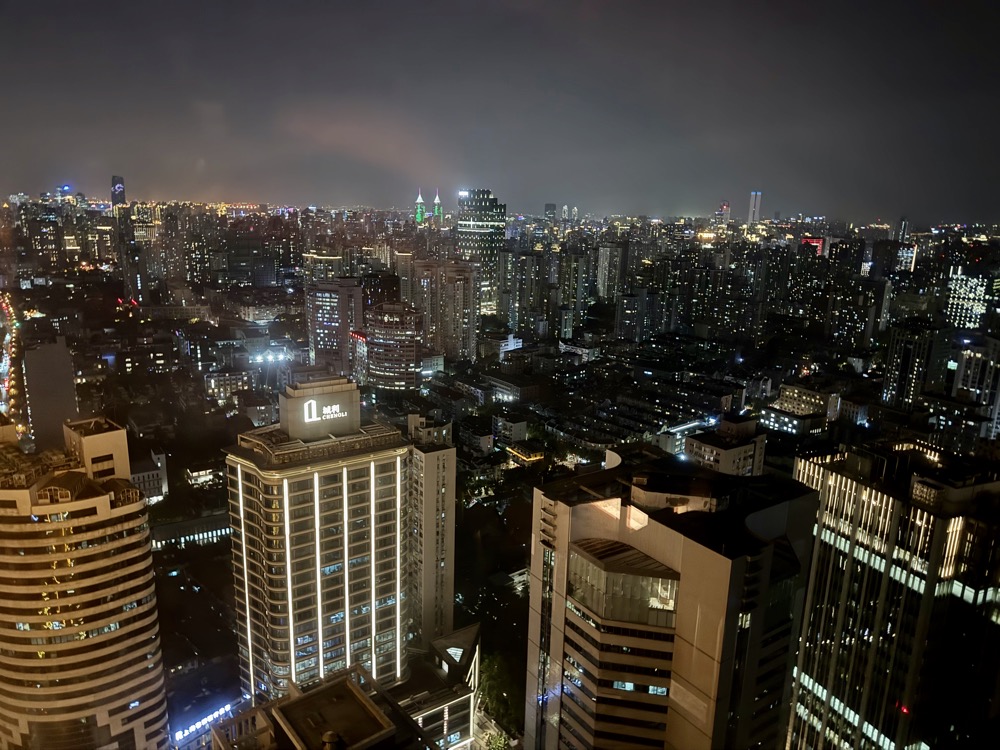
Watch our room tour of the St Regis Shanghai Jingan Deluxe Room
🚐 Exploring Shanghai with Wendy Wu Tours
Our first afternoon was spent with the incredible guides from Wendy Wu Tours. They’re true experts when it comes to China, and their local knowledge added so much depth to our visit.
Having a guide or organised tour here really makes a difference. They help you navigate the city, understand the culture, and avoid the little travel hiccups that can catch you out in a destination this big. If you’re planning to combine Shanghai with a cruise, I’d definitely recommend using a local specialist or having your hotel arrange a driver and guide.
We are working with Royal Caribbean and Wendy Wu to offer a longer 3-day option for those who may be interested in following a similar path to our trip pre cruise.
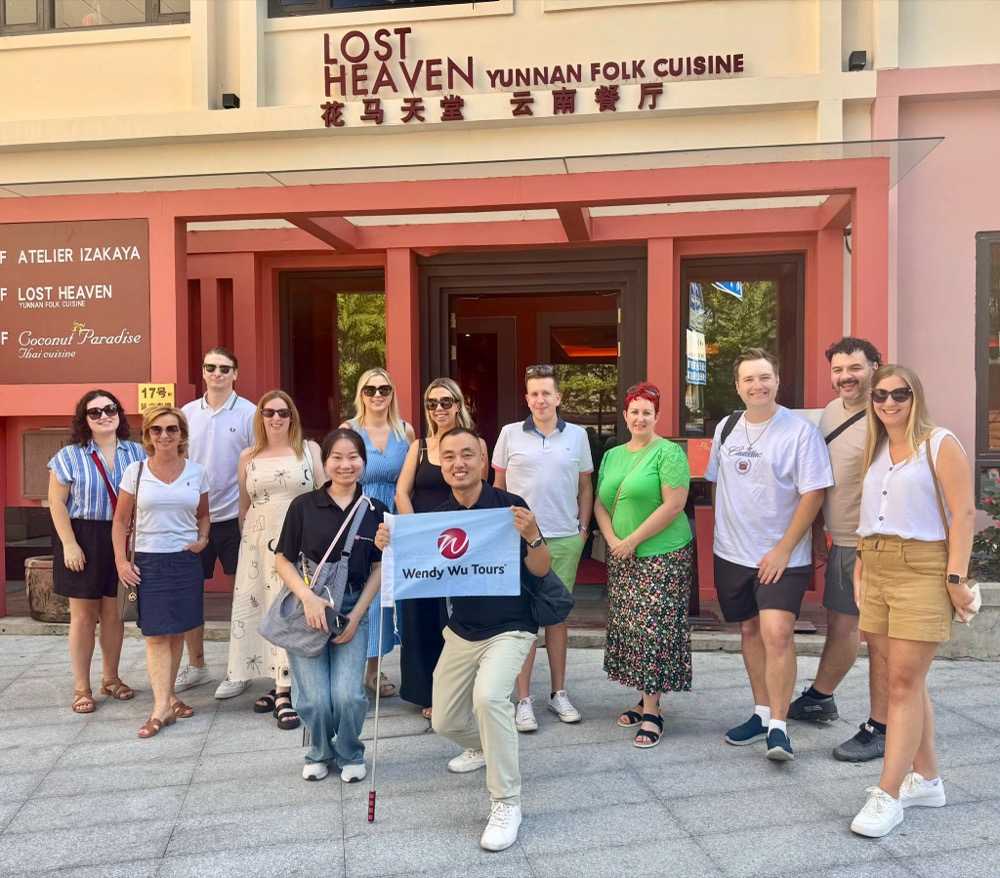
🍜 Lunch at Lost Heaven – A Taste of Yunnan Cuisine
Our first meal in China was at Lost Heaven, one of Shanghai’s most popular restaurants for travellers and locals alike. It’s known for its elegant setting and focus on authentic Yunnan cuisine, a regional style from southwest China celebrated for its bold spices, citrus notes, and fresh ingredients.
This was our first proper introduction to Chinese dining. We dined family-style, with plates of the most popular dishes brought out to our table to share. Before long, a steady flow of colourful plates began to arrive, each one offering something new to try.
The flavours were vibrant and beautifully balanced, with just the right mix of savoury and spice. It was the perfect welcome to China and set the tone for everything that followed.
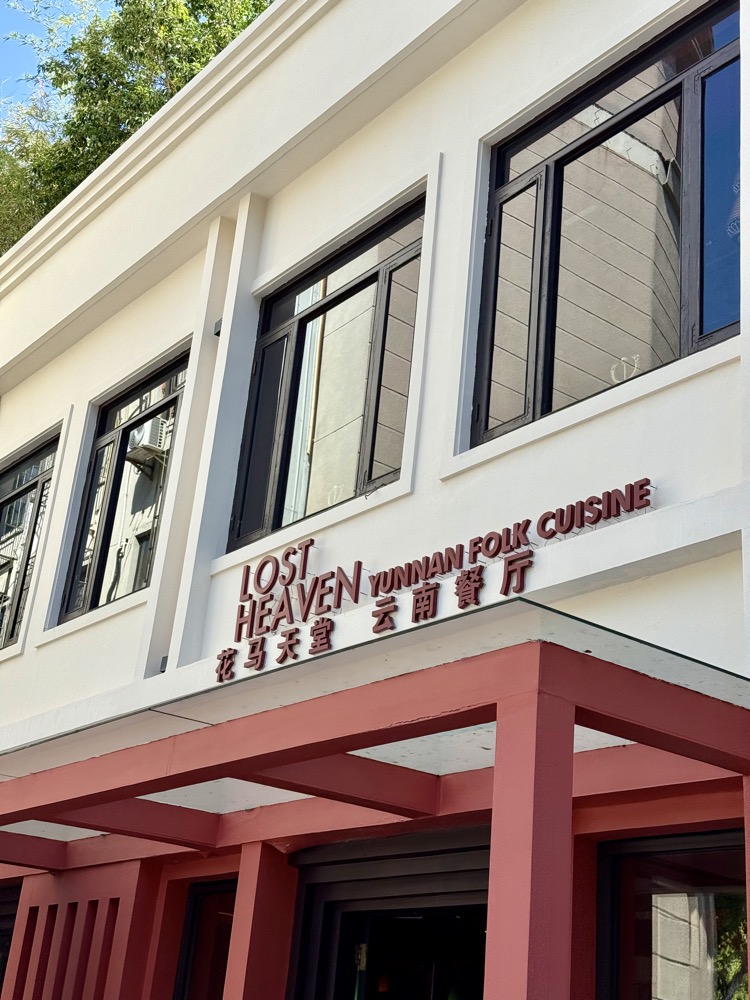
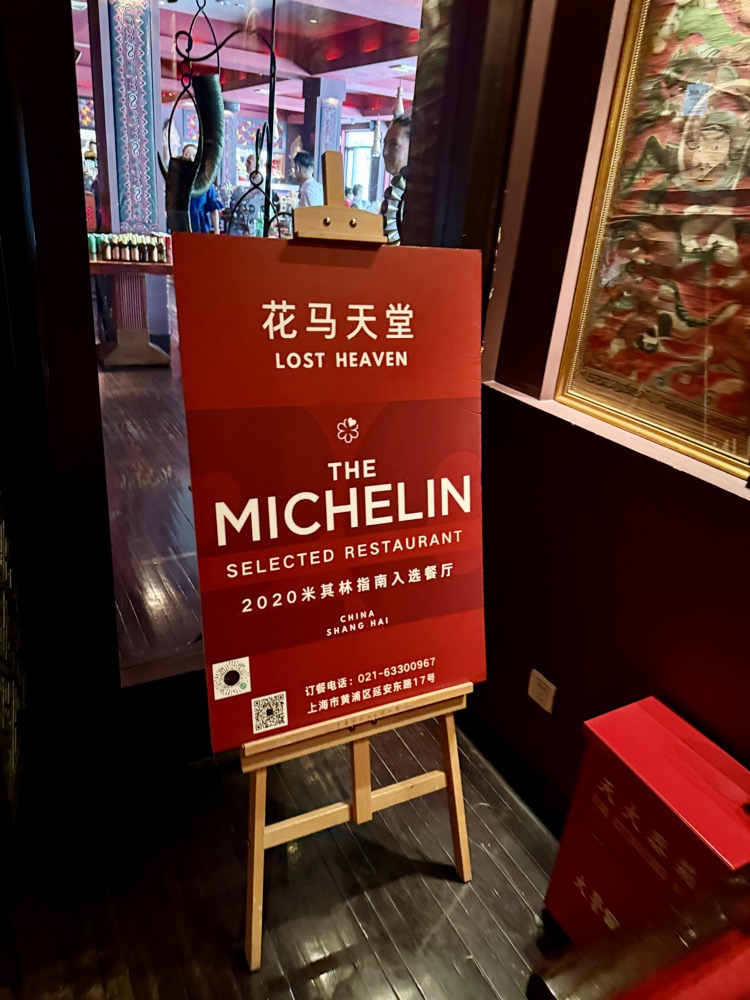
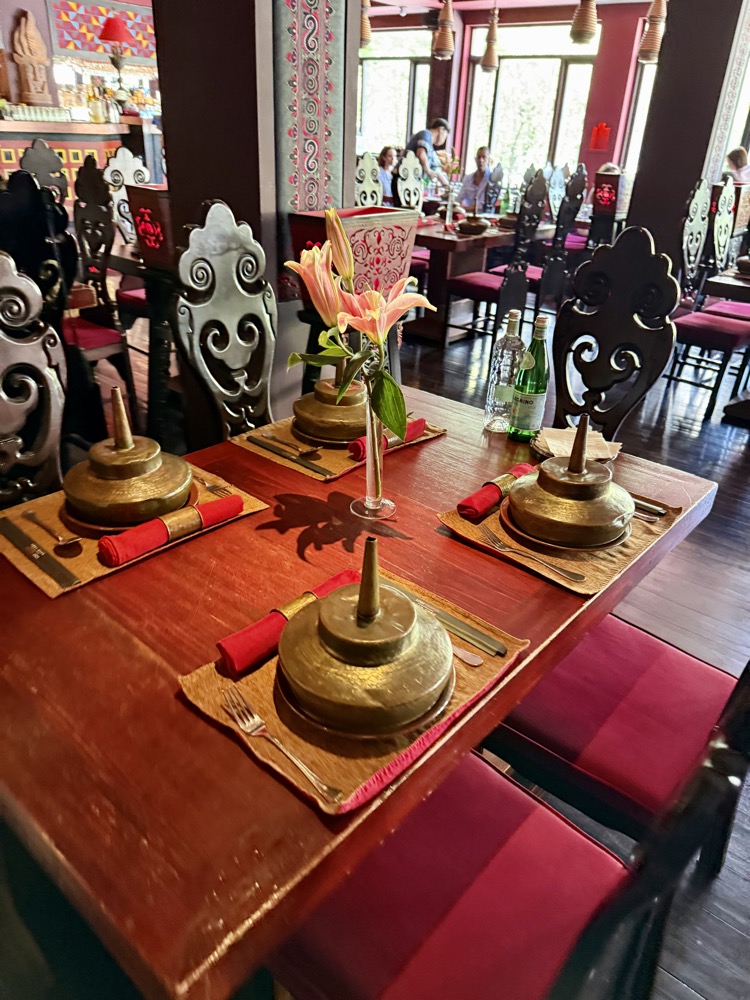
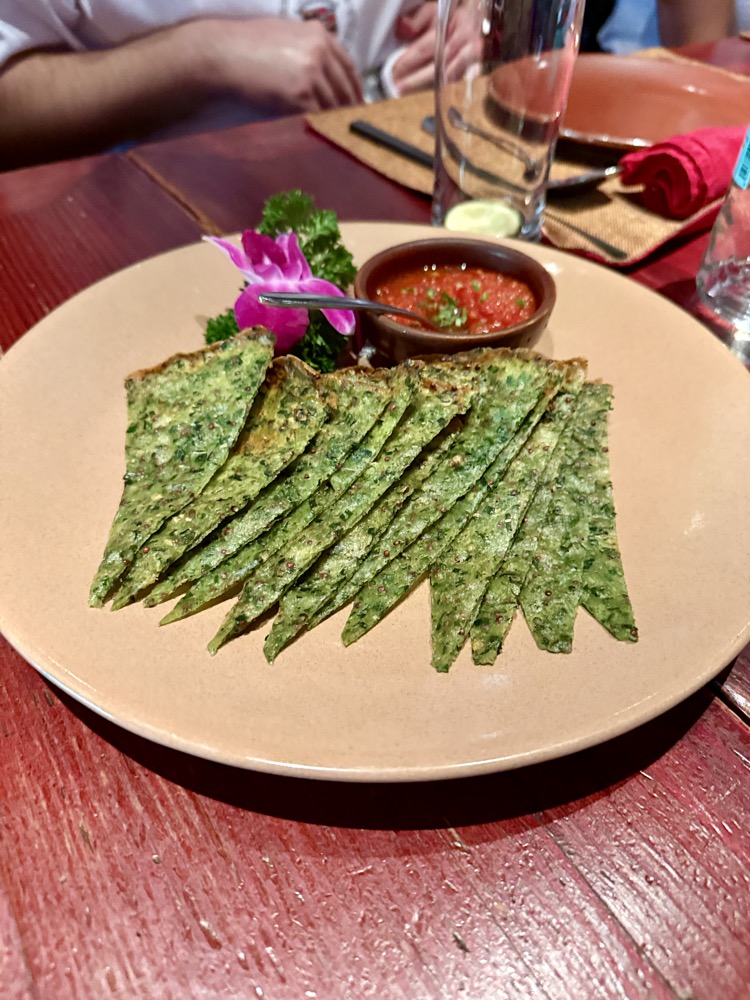
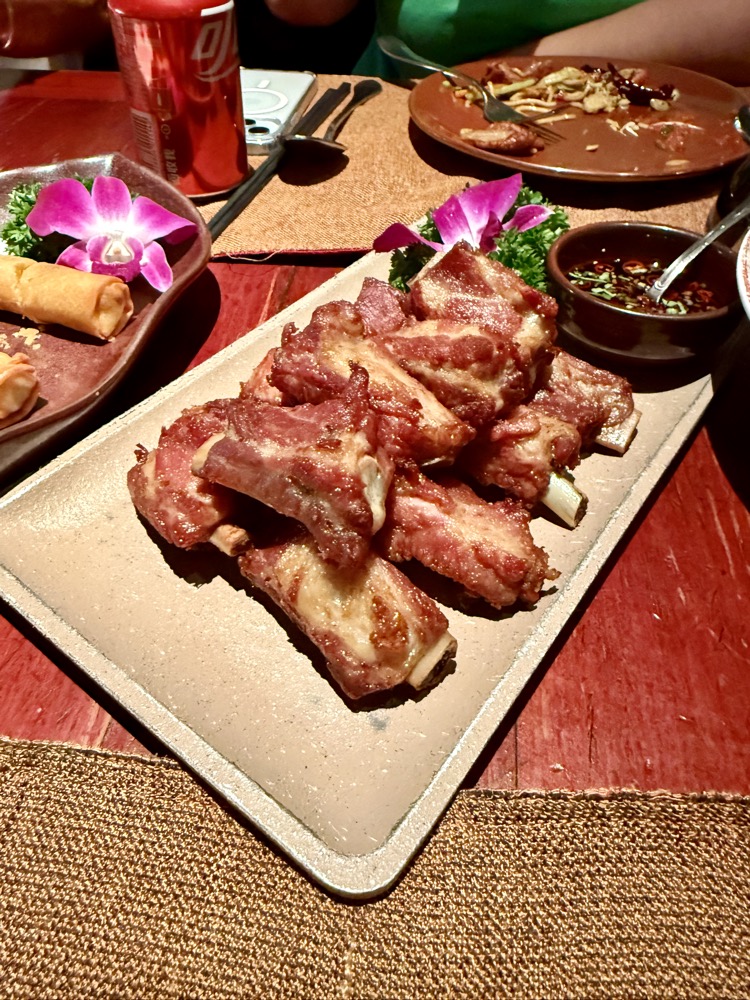
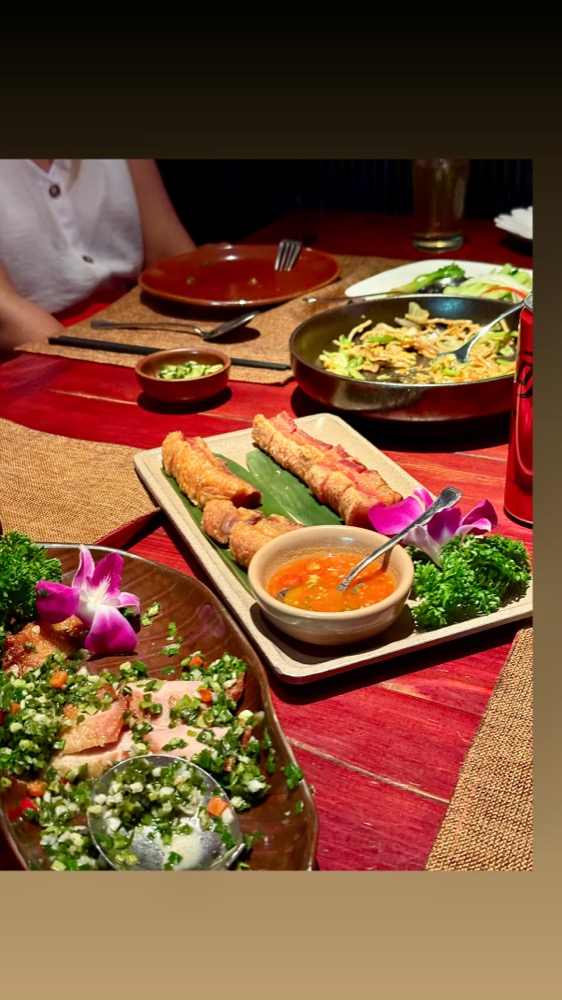
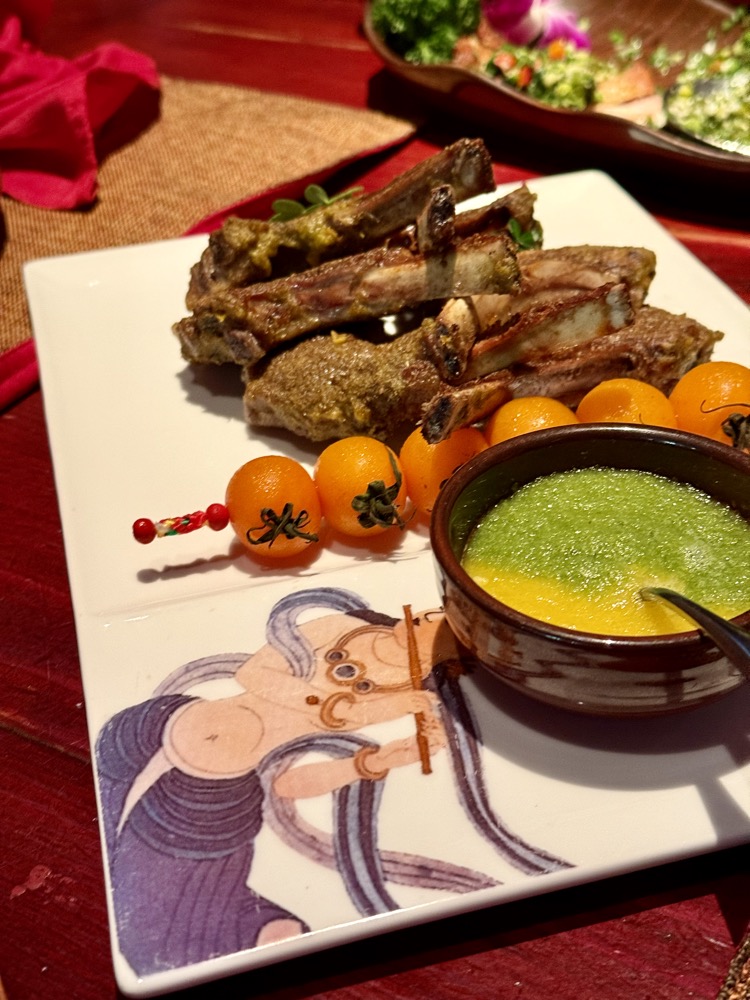
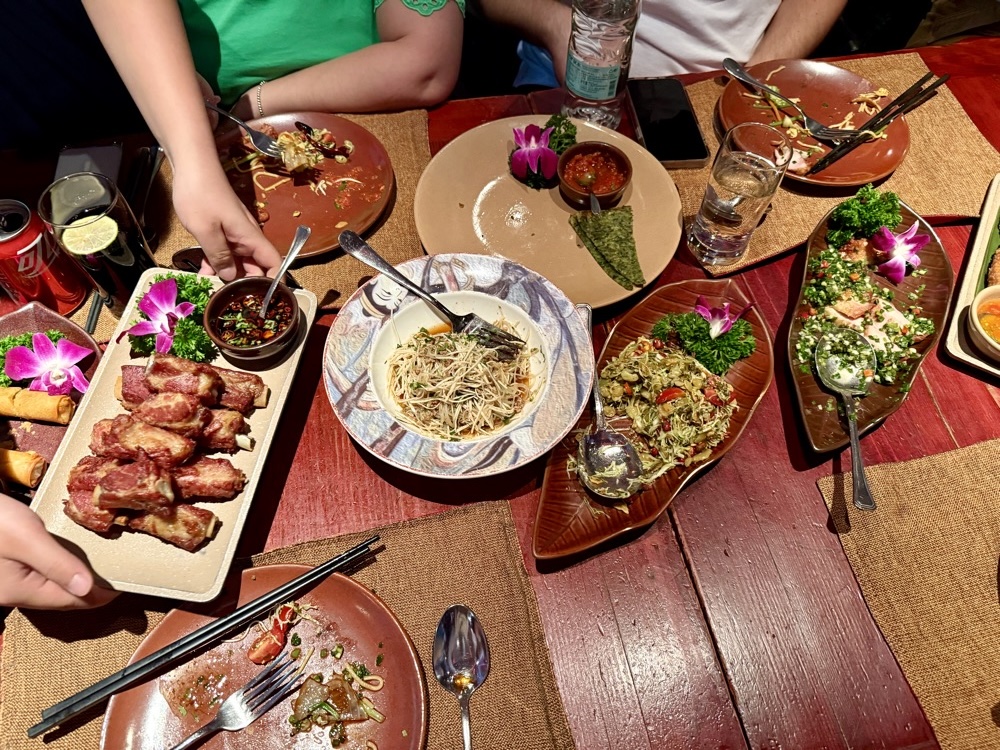
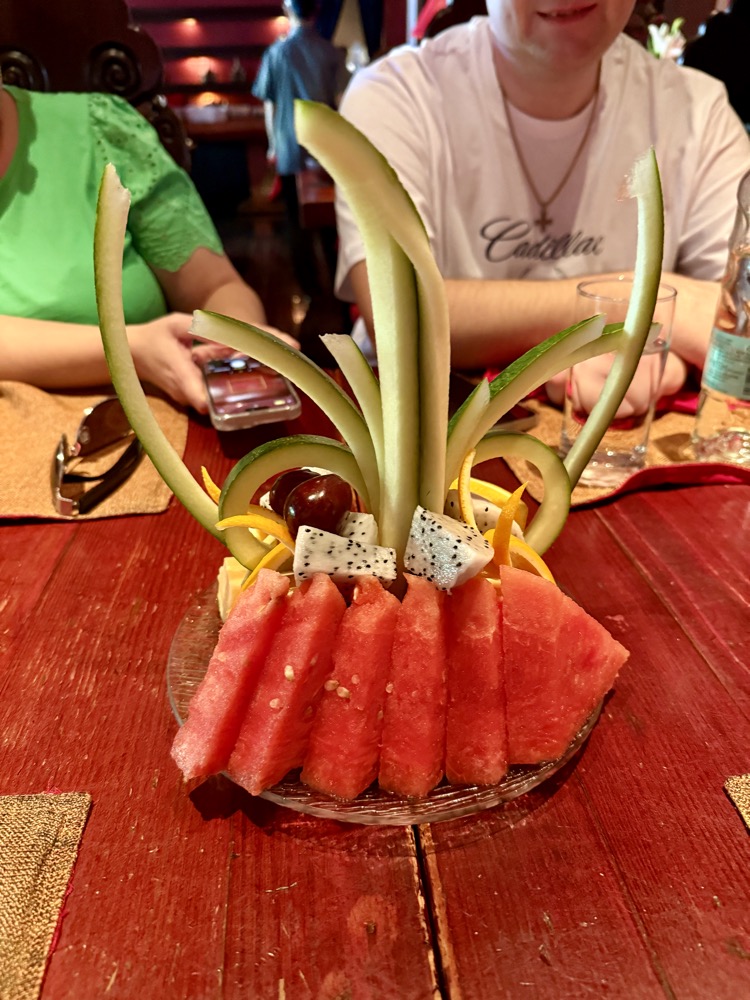
🌉 The Bund – Old Meets New
After lunch, we made our way to one of Shanghai’s most iconic landmarks, The Bund.
Stretching along the Huangpu River, The Bund is where Shanghai’s story really comes to life. On one side, the elegant colonial-era buildings recall the city’s days as an international trading port. On the other, the shimmering glass towers of Pudong rise up as a symbol of China’s modern economic power. Standing here, you can feel both the history and the ambition that define the city.
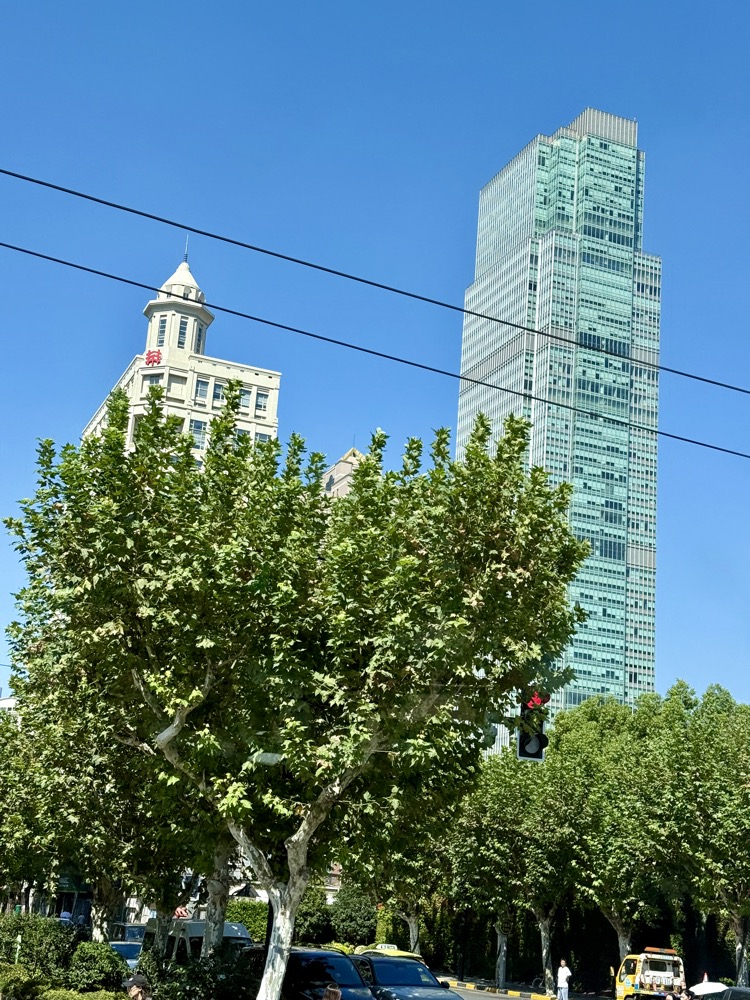
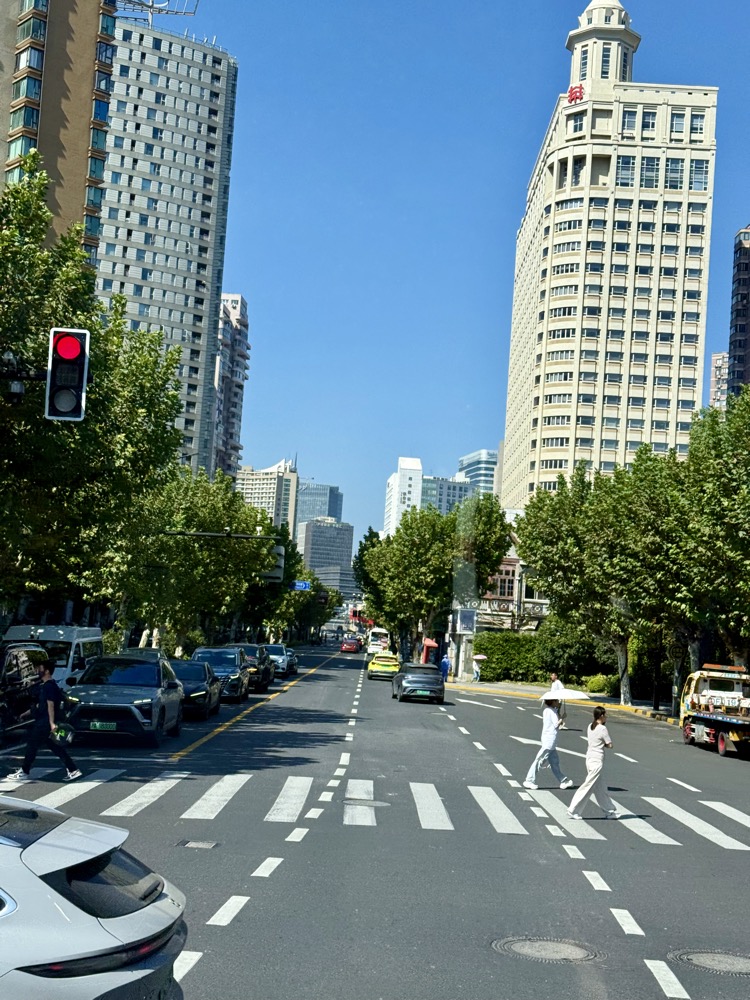
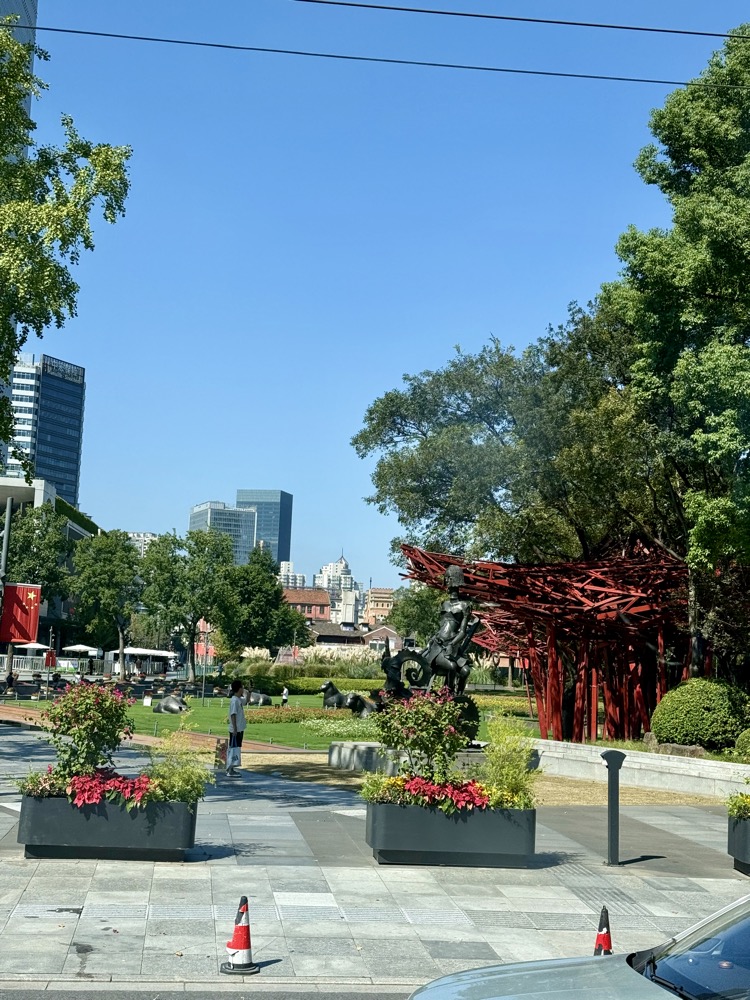
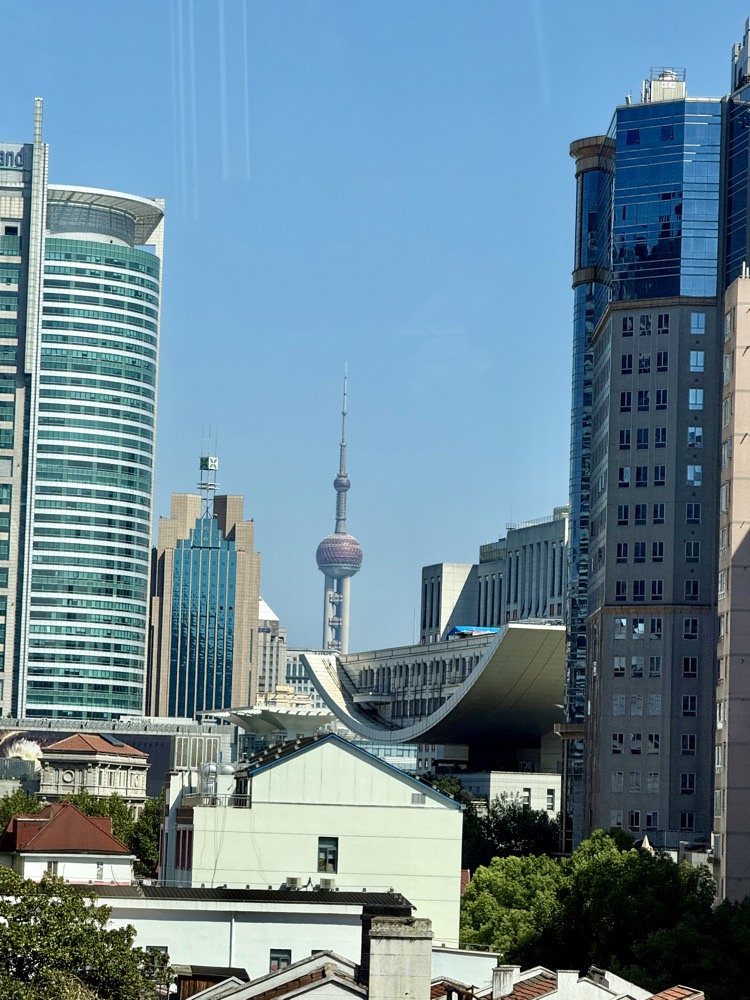
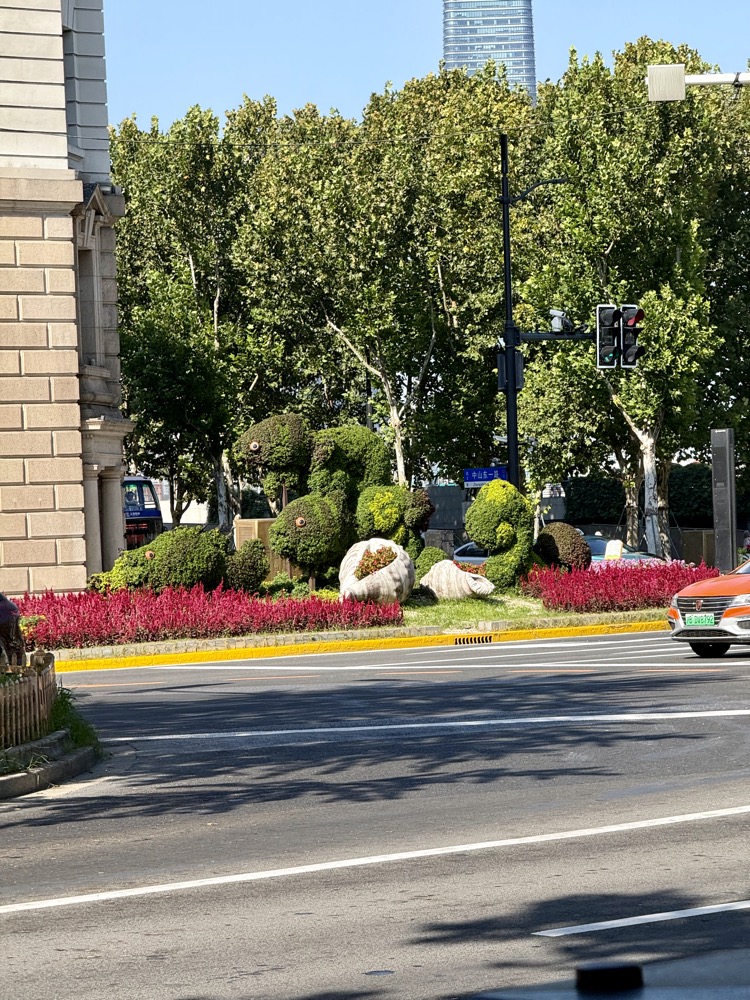
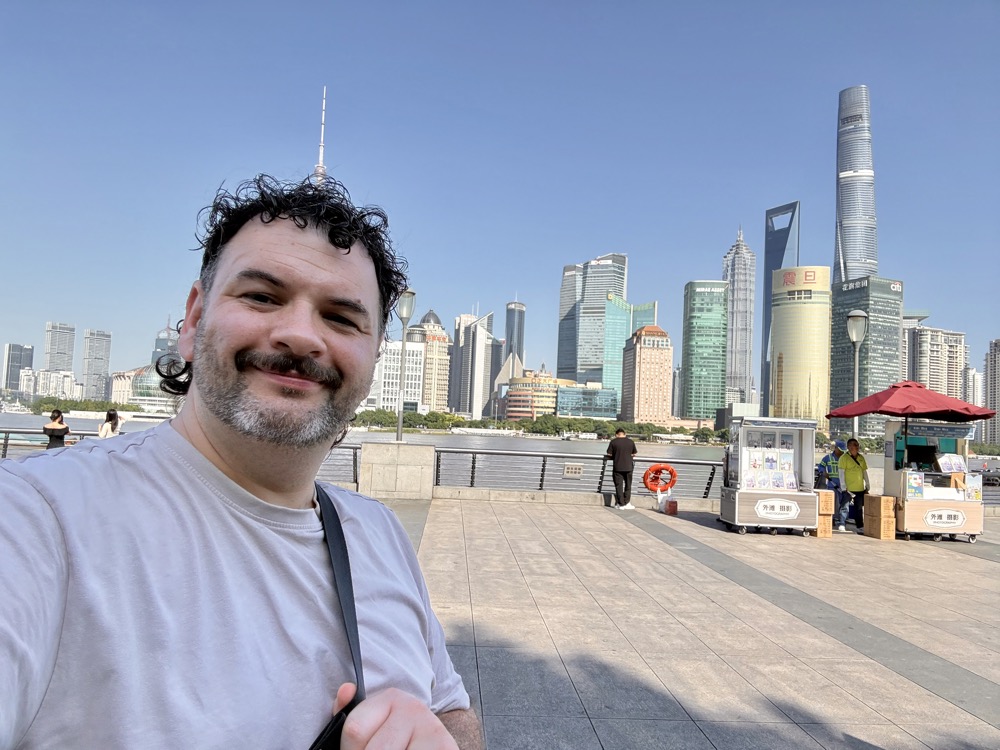
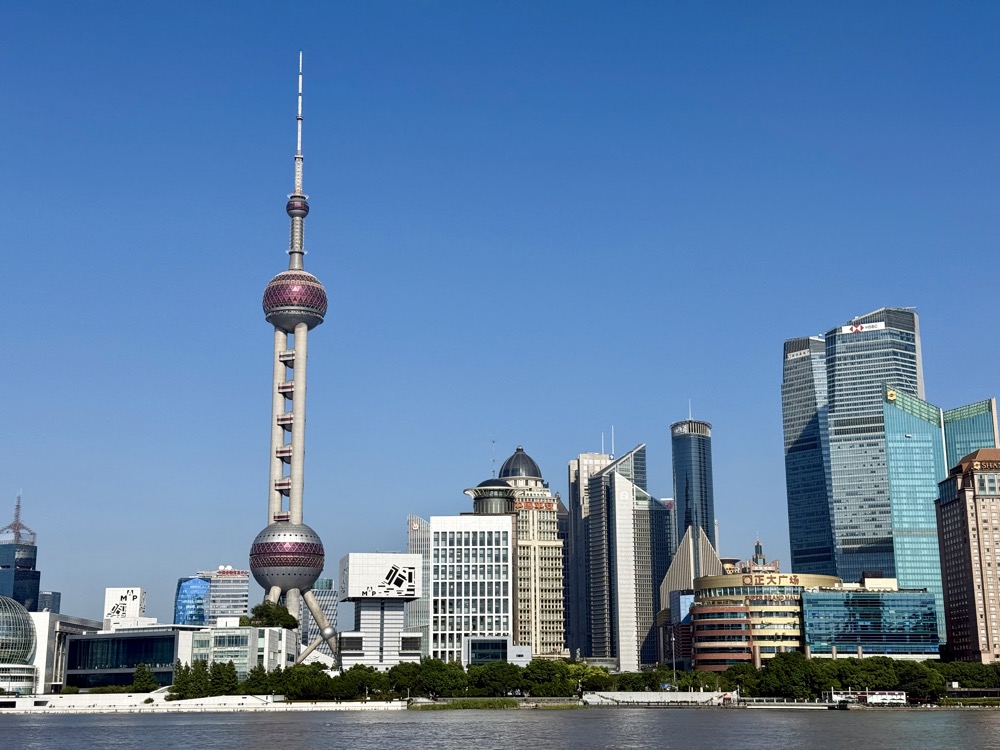
Shanghai’s global, welcoming energy stems from this duality. As China’s financial capital, it has long been open to the world, shaped by foreign influences during its wartime occupation and post-war resurgence. That blend of cultures is reflected in its architecture and atmosphere, familiar yet distinctly Chinese.
One of the highlights of our visit was stepping inside the former HSBC headquarters, a grand building dating back to 1923. Its soaring dome ceiling and intricate murals wouldn’t look out of place in New York or Washington, a reminder of how international Shanghai has been for over a century.
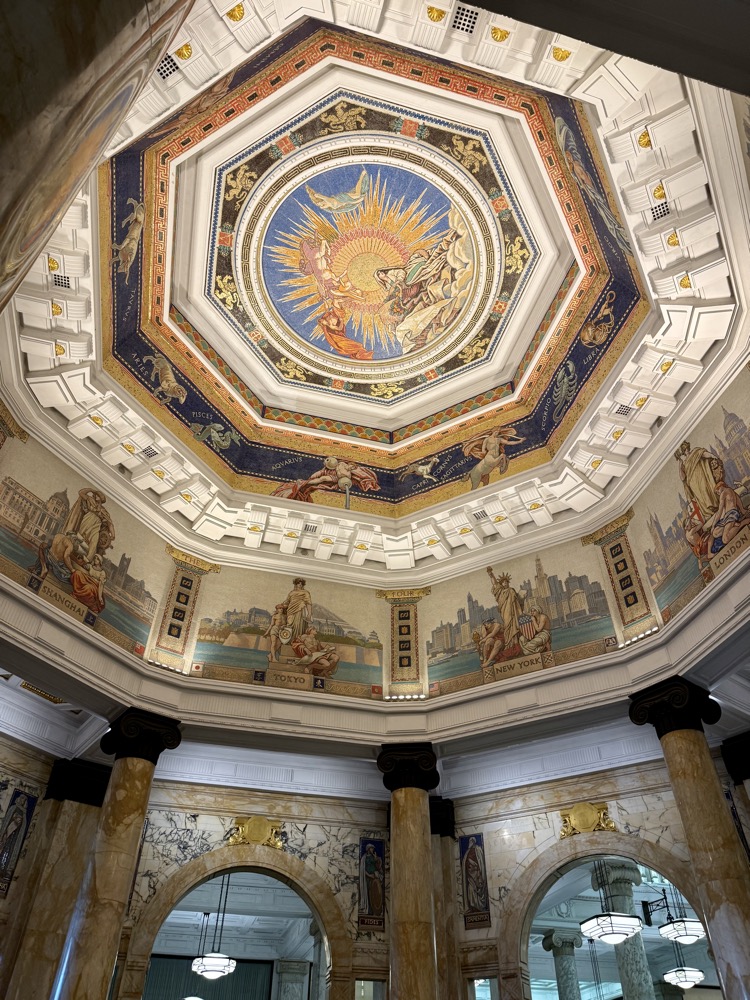
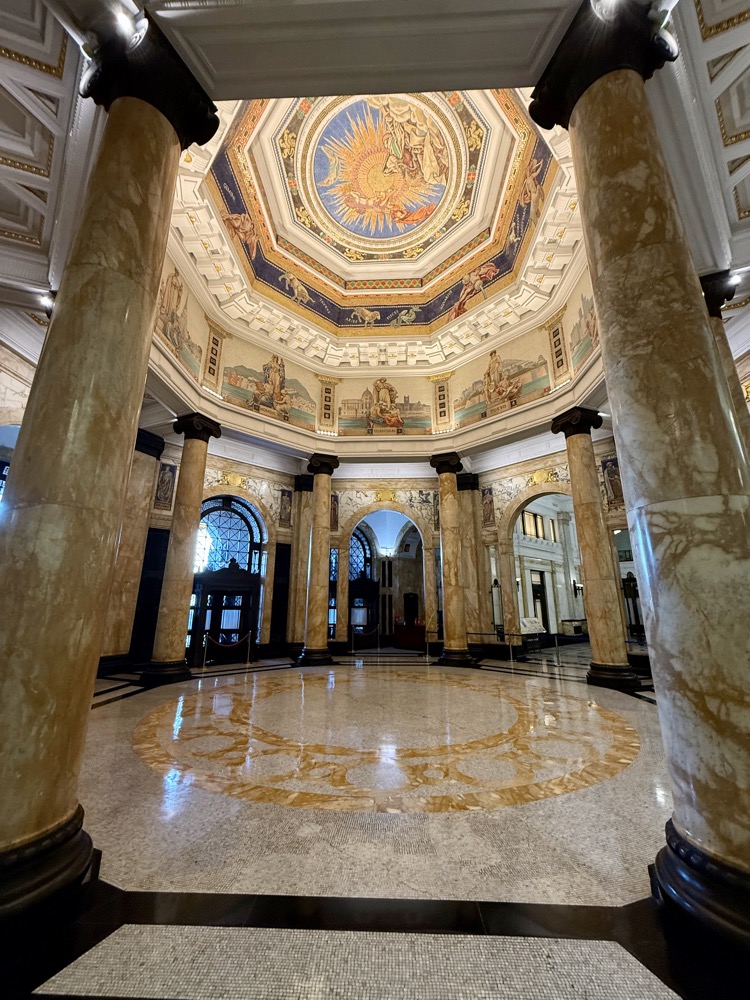
The Bund itself feels like an open-air museum and city park combined. Along the riverside promenade, vendors and small stalls line the walkway, adding life and colour to the scene. As evening falls, the atmosphere transforms again. The skyline of Pudong begins to glow, and both sides of the river light up in a choreographed display that celebrates the city’s modern identity.
It’s a view that perfectly captures Shanghai’s spirit, historic, international, and always looking forward.
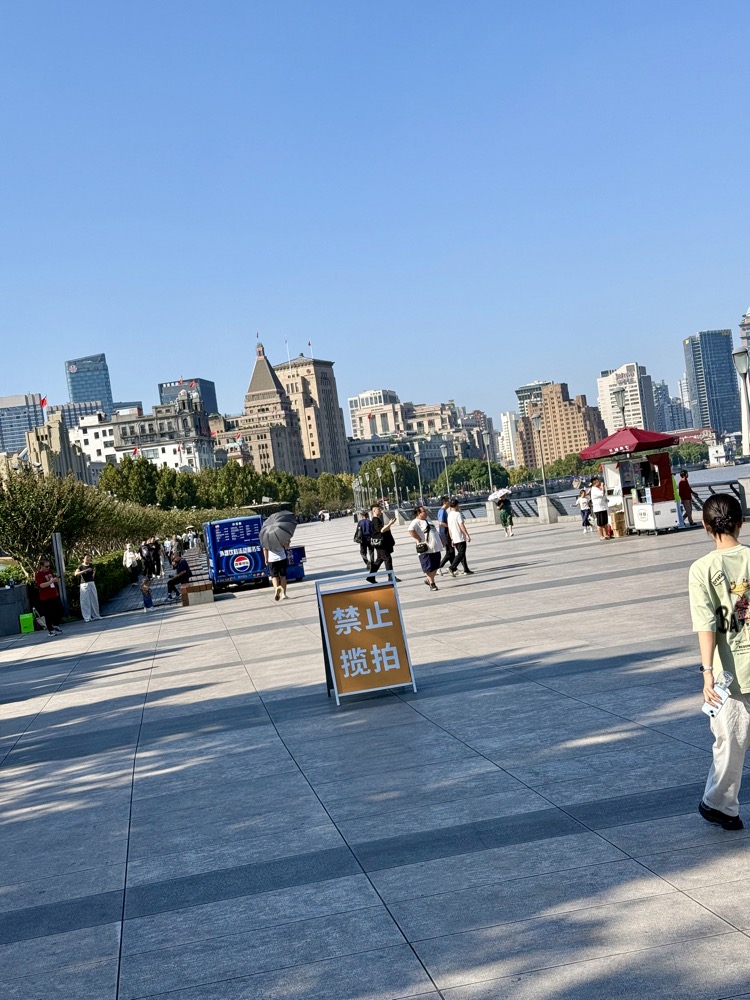

🏯 Yu Garden – A Living Window into Old China
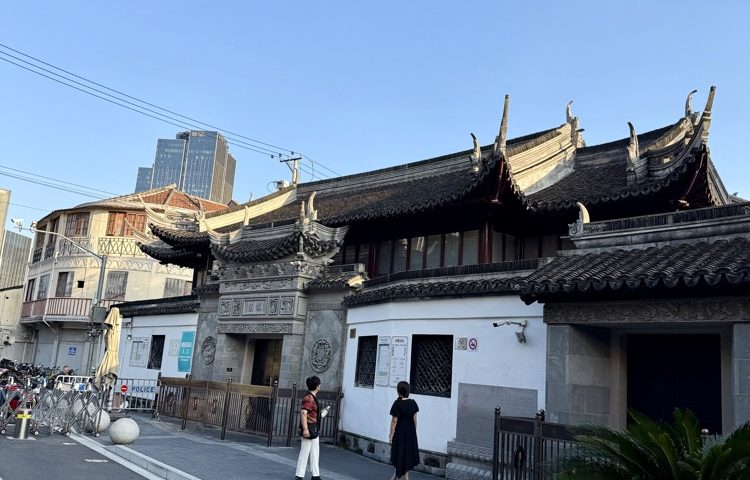
Next, we visited Yu Garden (Yuyuan Garden), one of Shanghai’s most treasured historic sites. Built during the Ming Dynasty in the mid-1500s, the garden has changed hands several times over the centuries, with each owner adding new pavilions, courtyards, and decorative touches that reflect the styles and values of their era. Our Wendy Wu Tours guide shared how the garden evolved organically through time, almost like a living story of Chinese history told through its architecture.
Inside, the garden feels like a tranquil world of its own. Winding pathways lead past carved pavilions, koi ponds, and stone bridges that have stood for hundreds of years. Each turn reveals a new vista, framed perfectly by trees and sculpted rock formations. The peace inside the walls is a striking contrast to the energy of modern Shanghai just beyond.
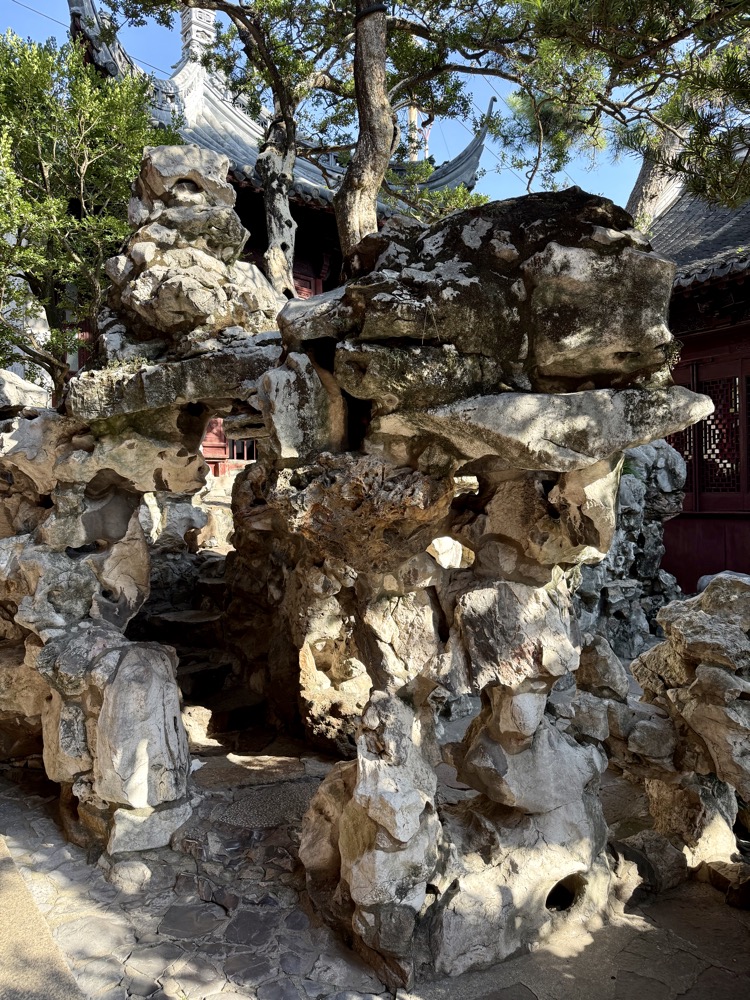
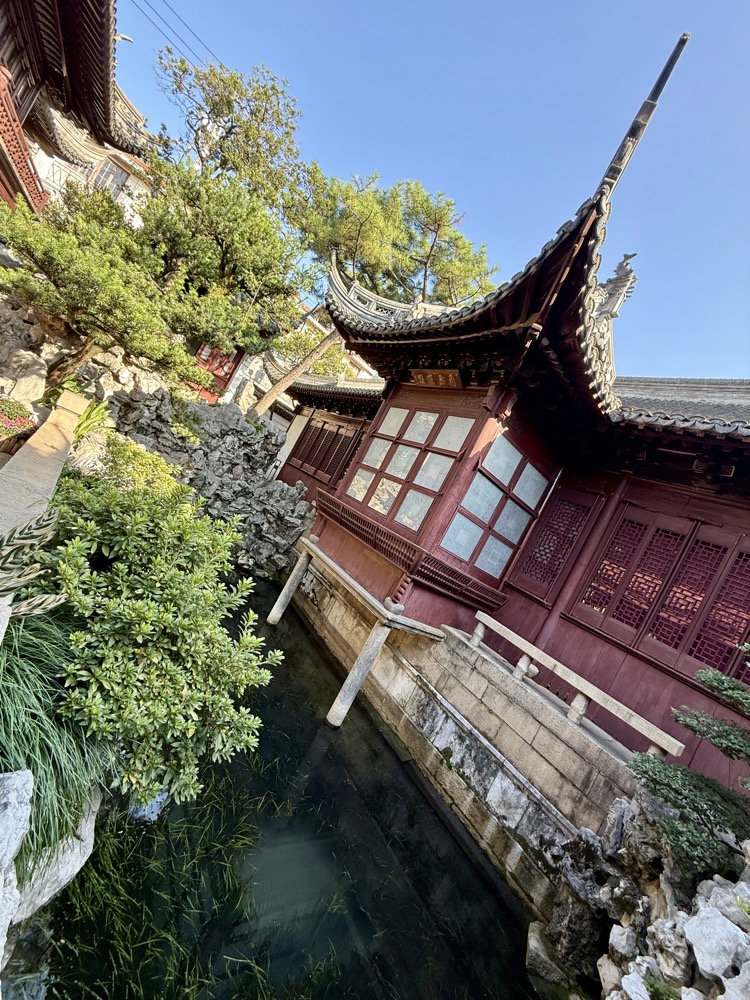
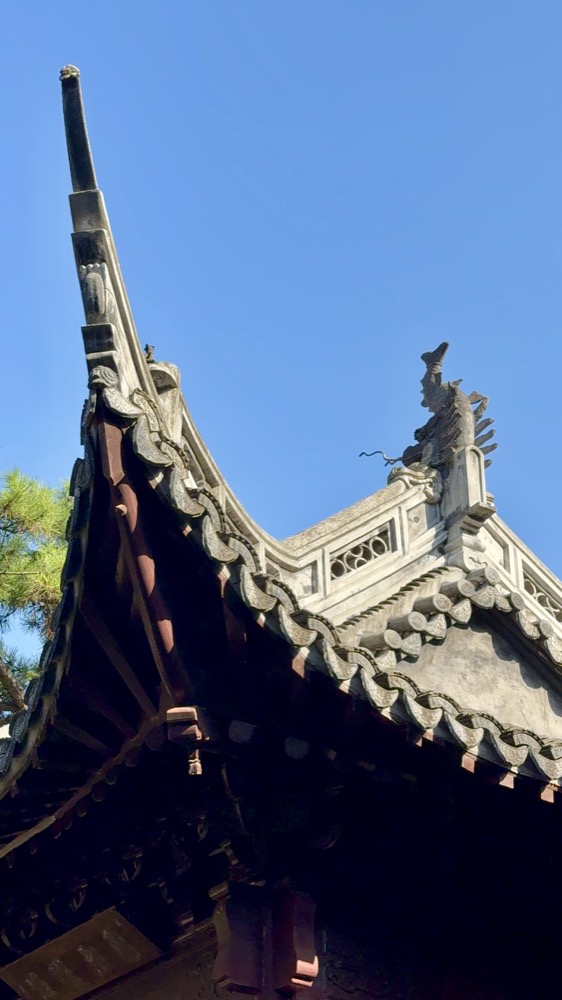
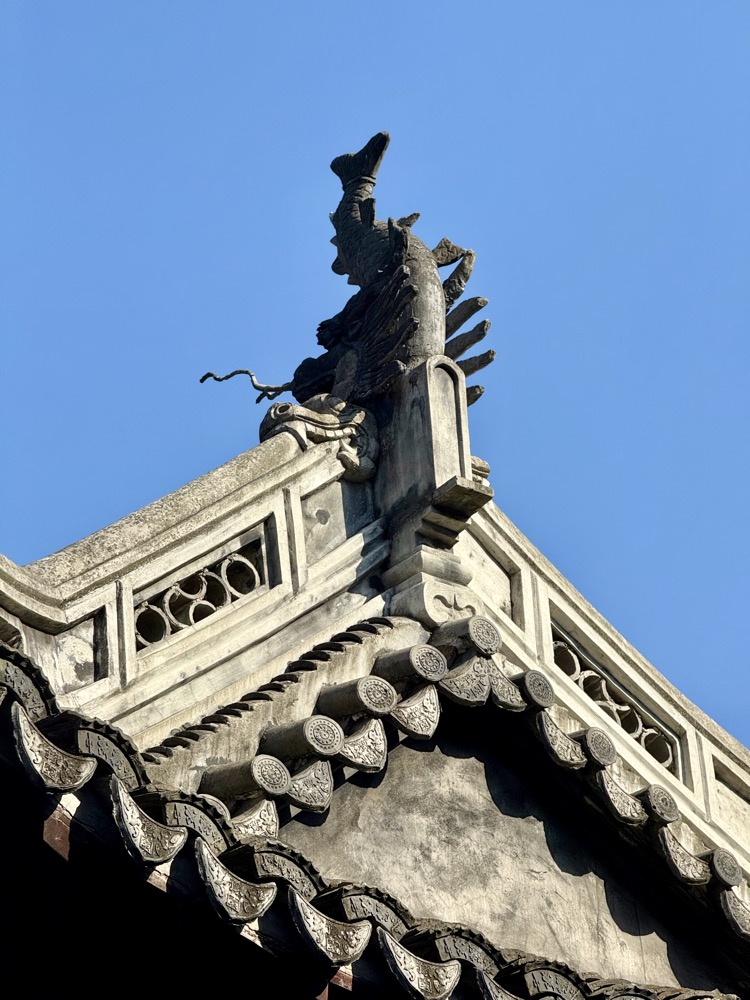
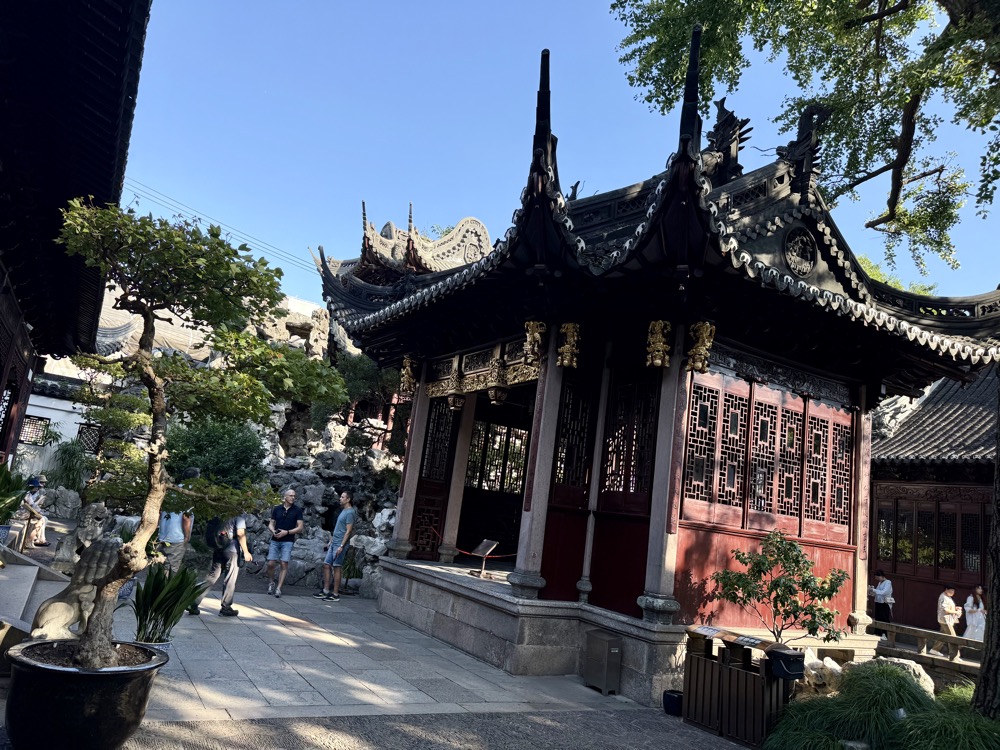
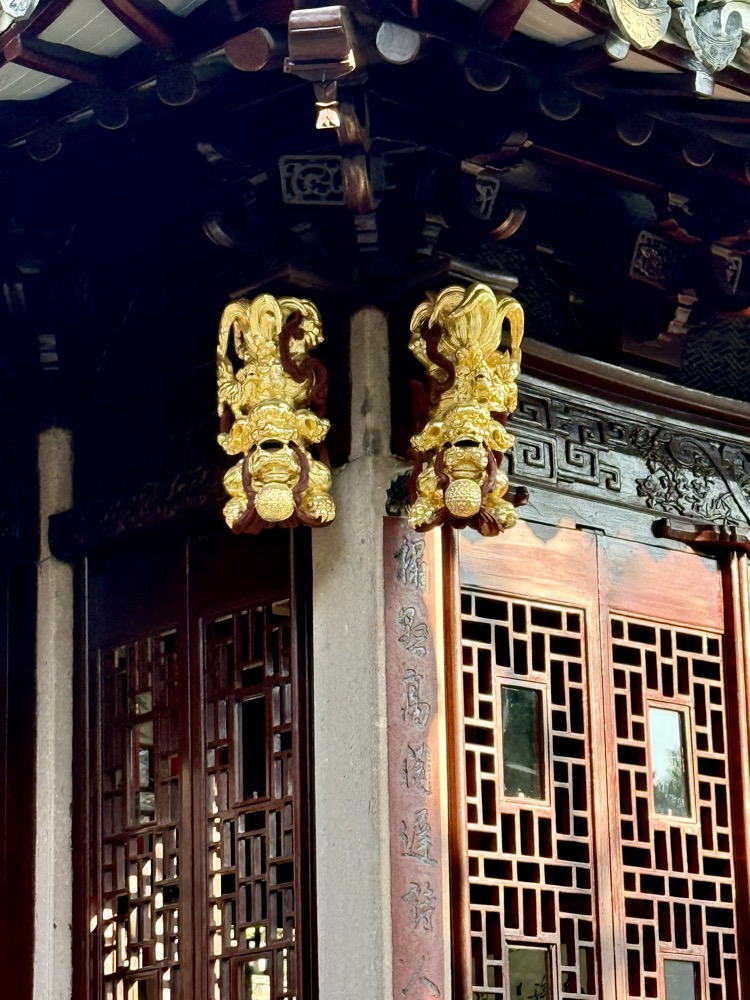
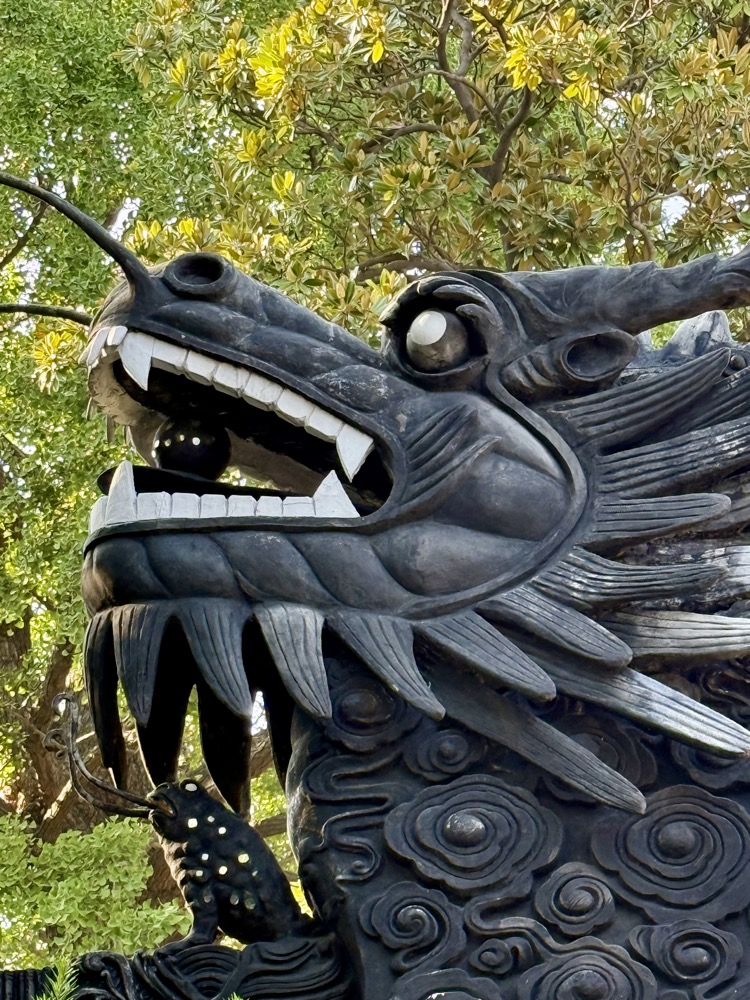
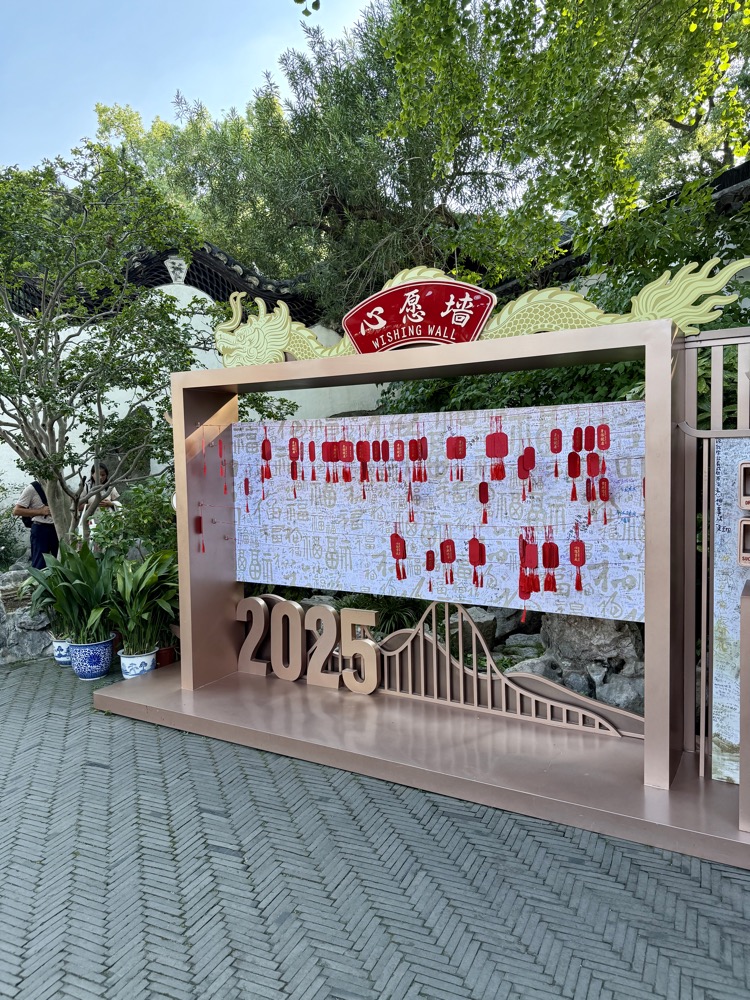
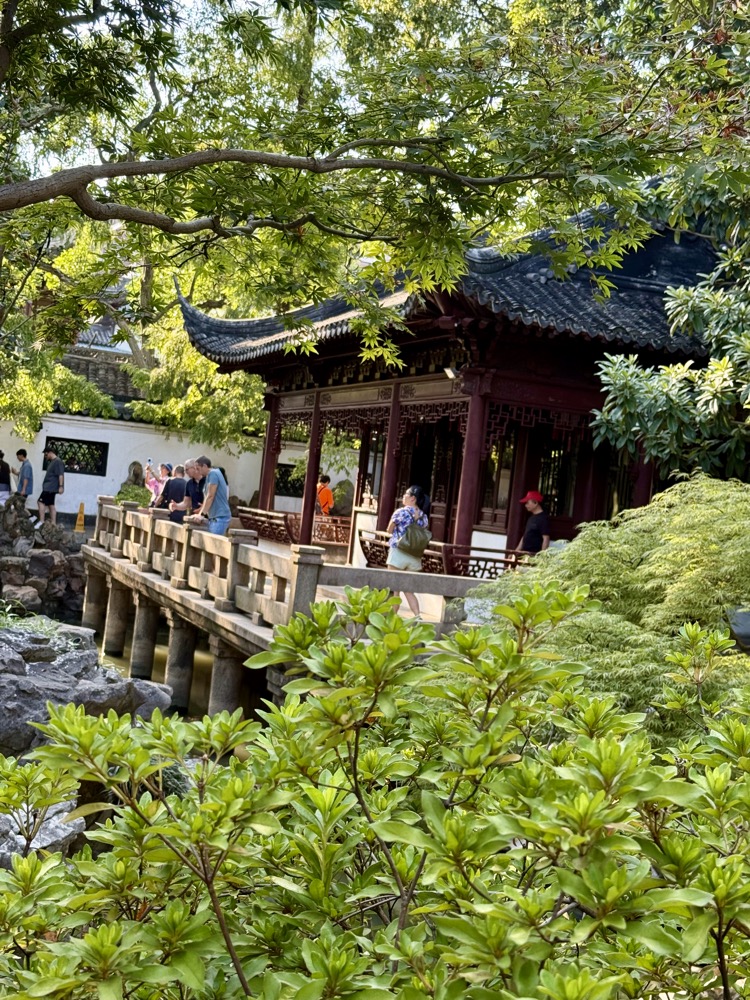
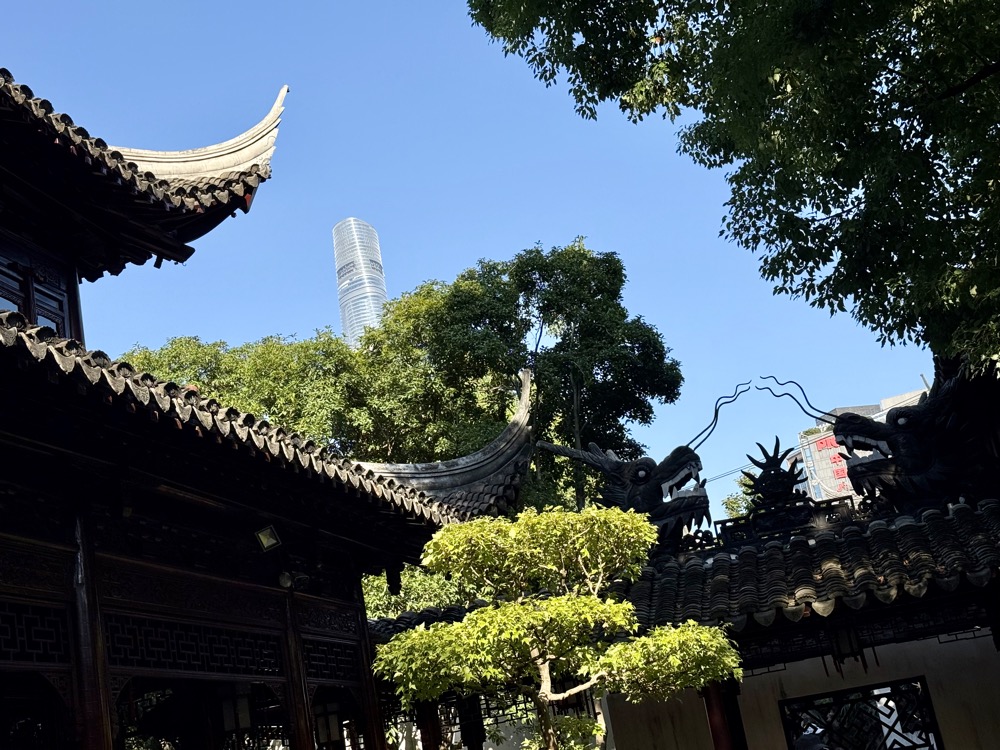
What fascinated me most were the details that reveal China’s long dynastic heritage. Two of the garden’s main halls display furniture from different periods: one from the Ming Dynasty, known for its ornate, hand-carved woodwork and rich detailing, and another from the Qing Dynasty, which came later and reflected a more restrained, minimalist aesthetic. The shift in style mirrors the changing philosophy of the time, from grandeur and power to modesty and refinement. Standing between the two, you can literally see how culture evolved from one dynasty to the next.
Our guide also shared the symbolism of the Chinese dragon, which features prominently along the garden’s walls and rooftops. I had always thought dragons were simply a sign of power and success, but it turns out they’re far more complex. The traditional Chinese dragon is said to be made up of parts from six different animals, including the whiskers of a catfish, the head of a lion, and the scales of a carp, symbolising wisdom, strength, and balance. Seeing these dragon sculptures curling across the rooflines suddenly felt even more meaningful, a proud symbol of prosperity and protection that has endured through the centuries.
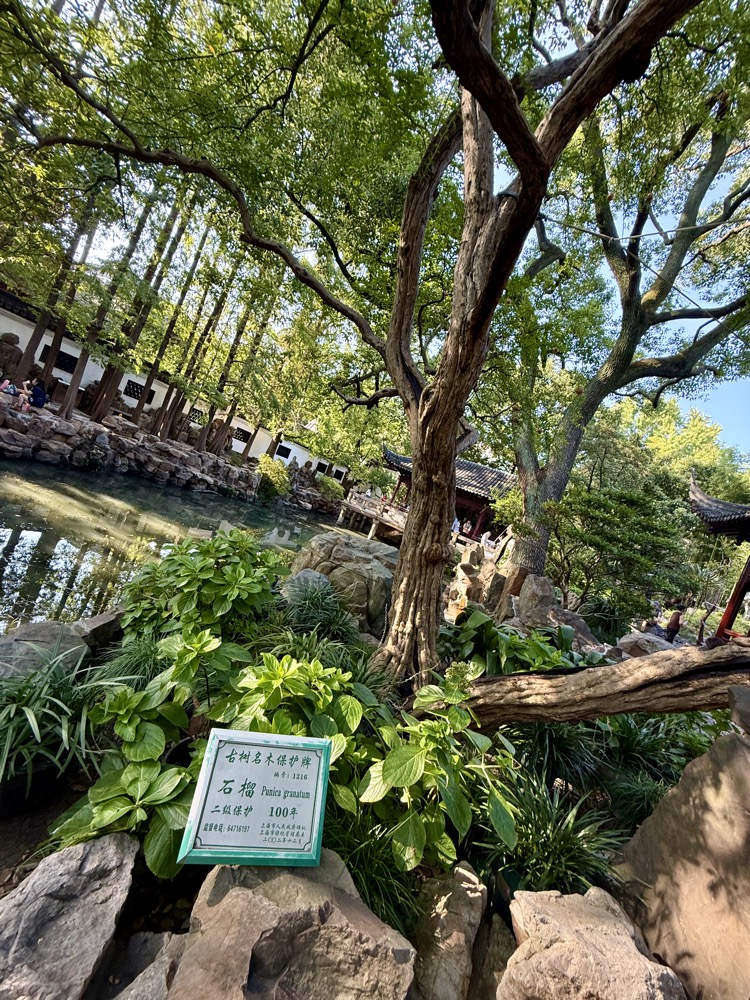
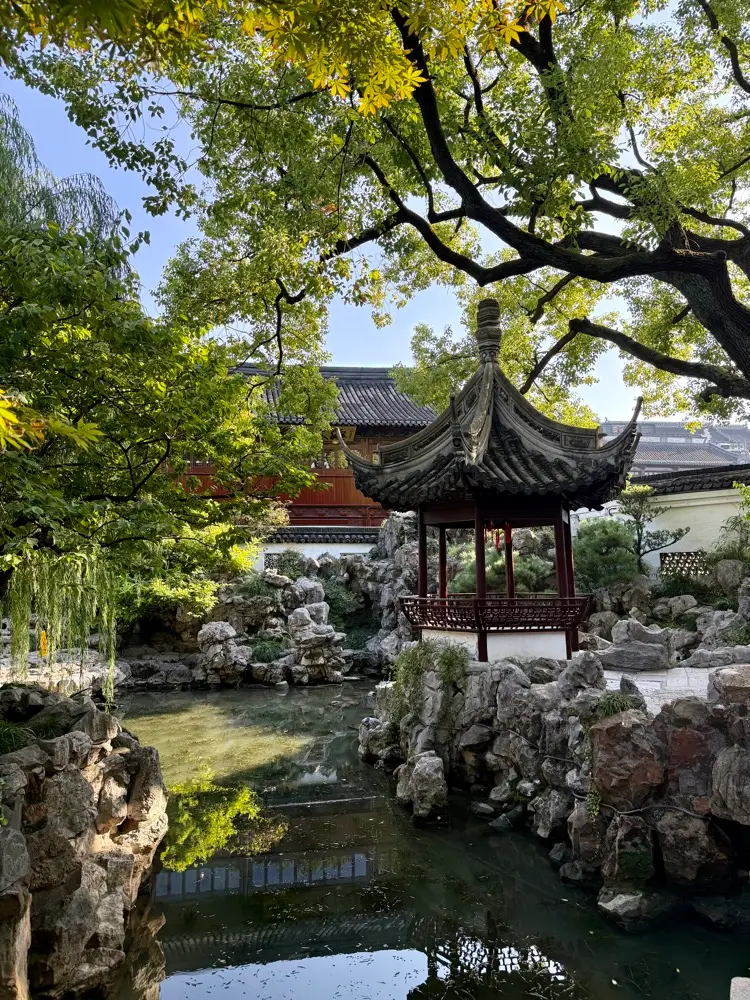
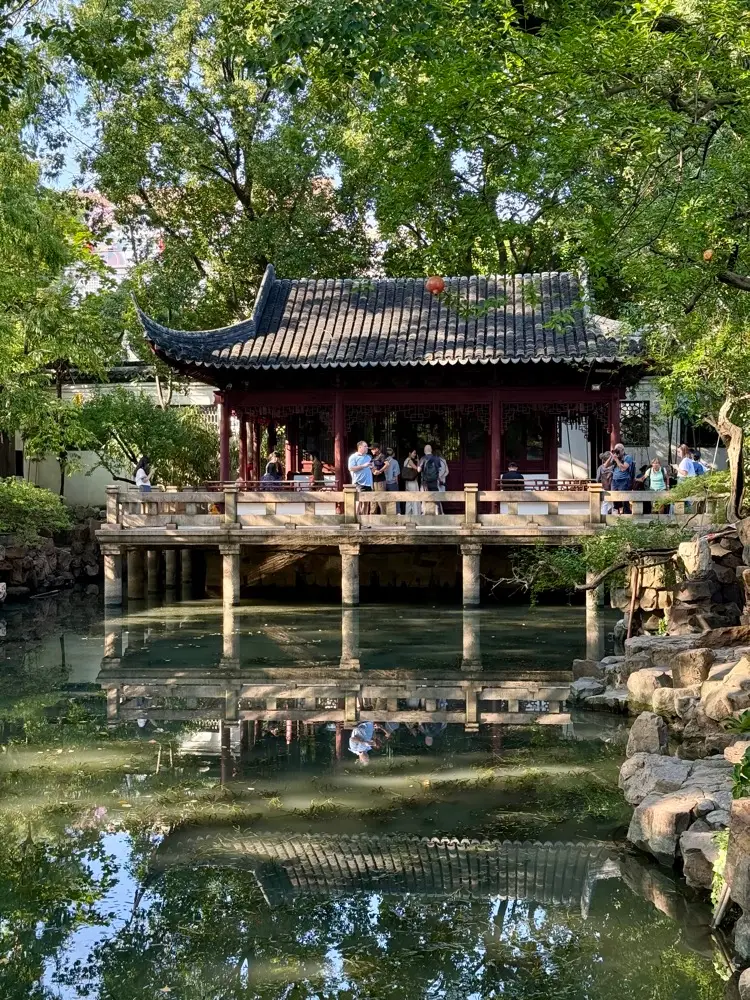
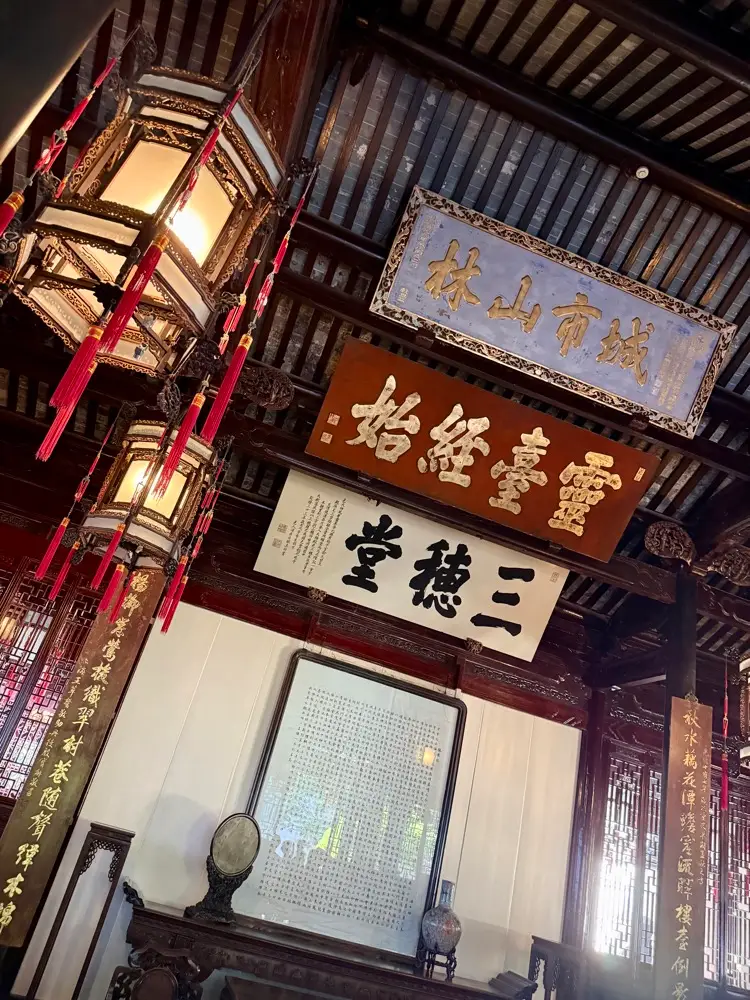
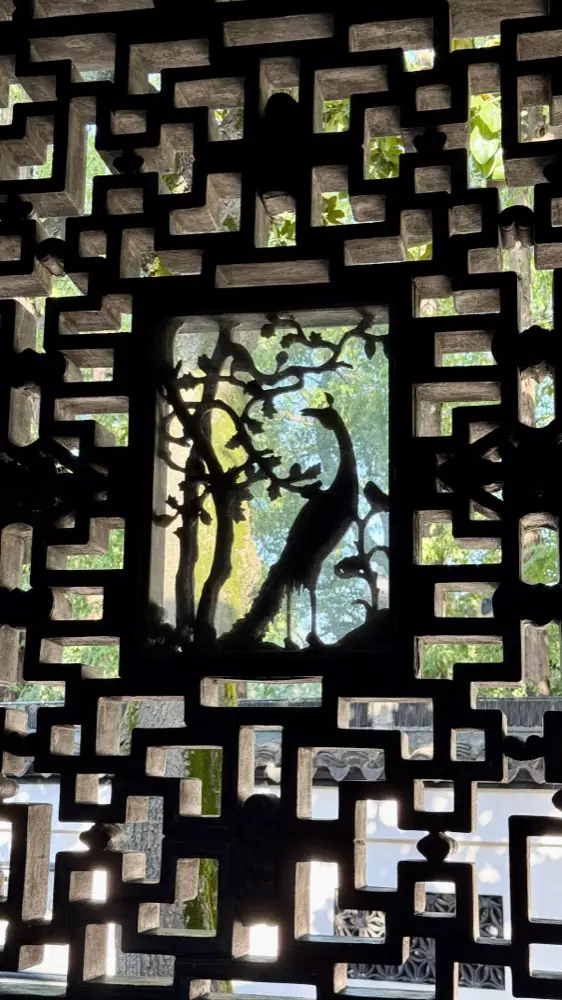
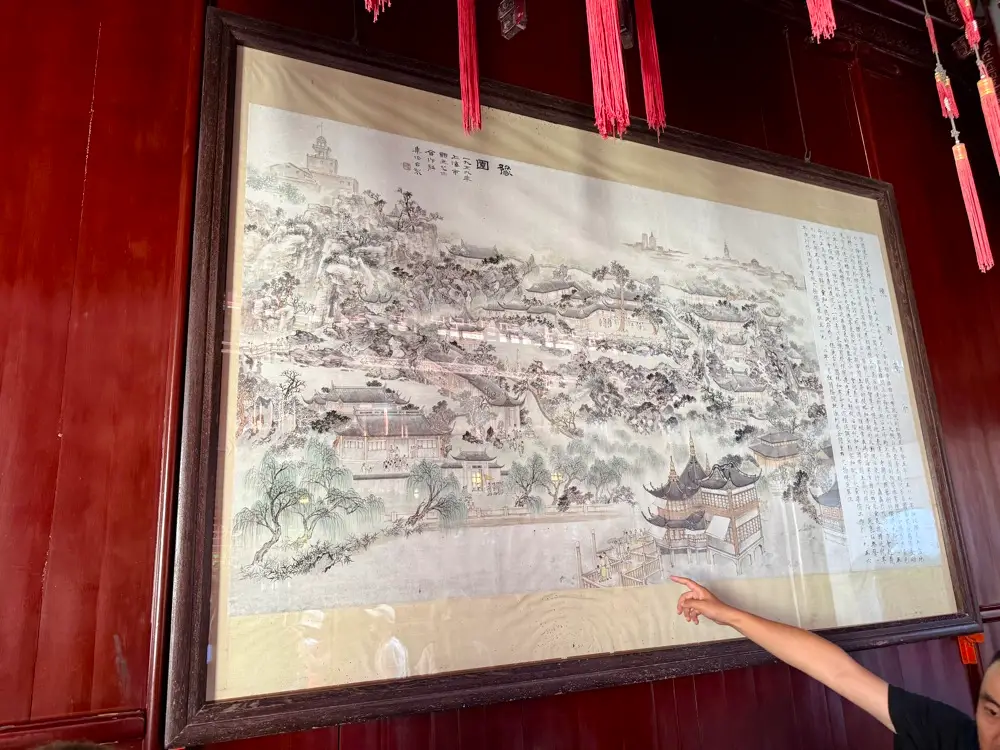
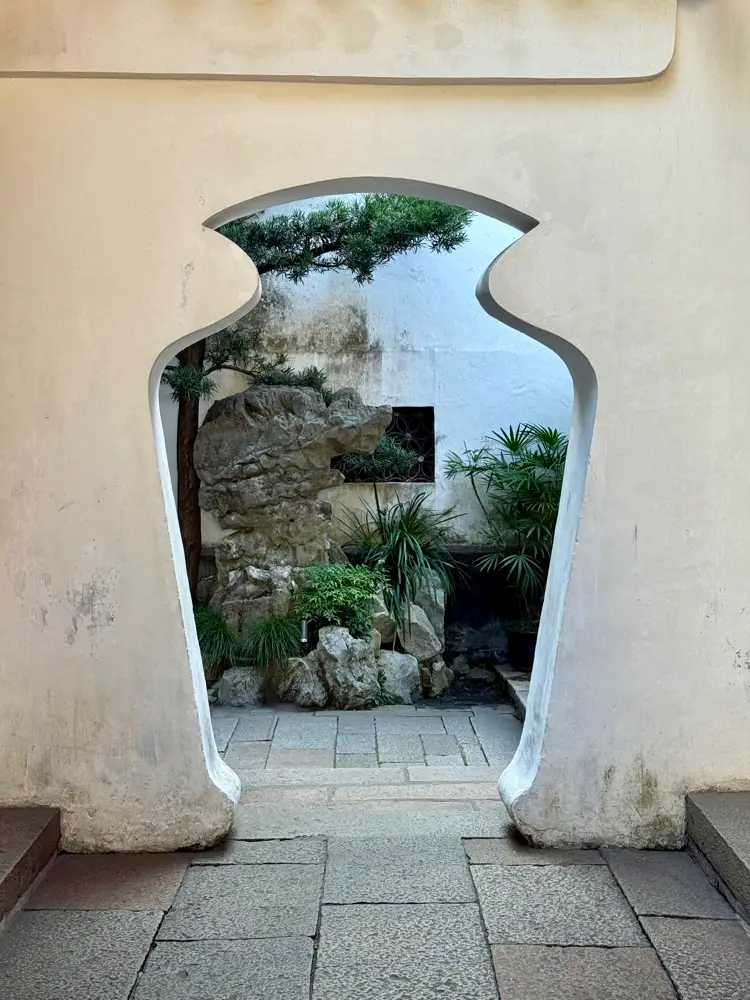
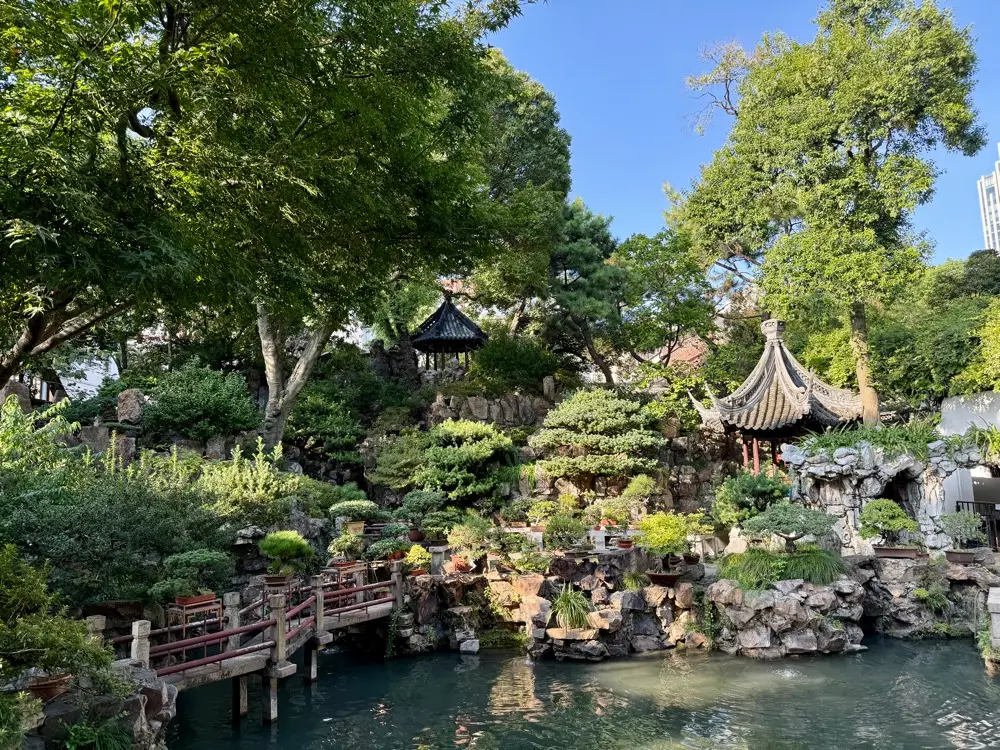
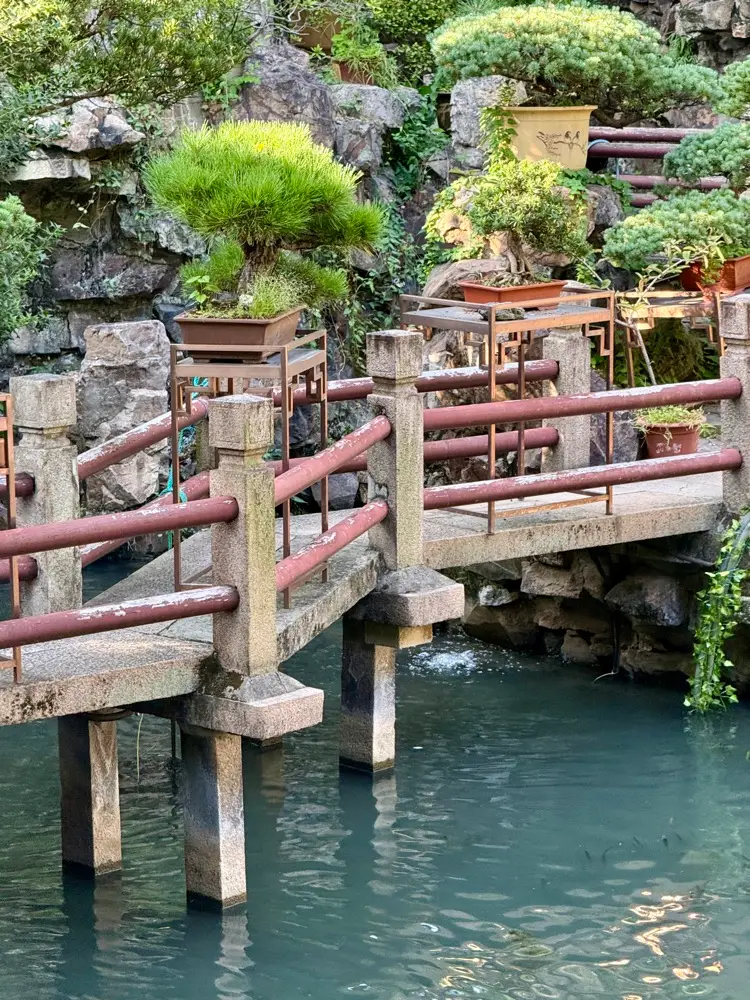
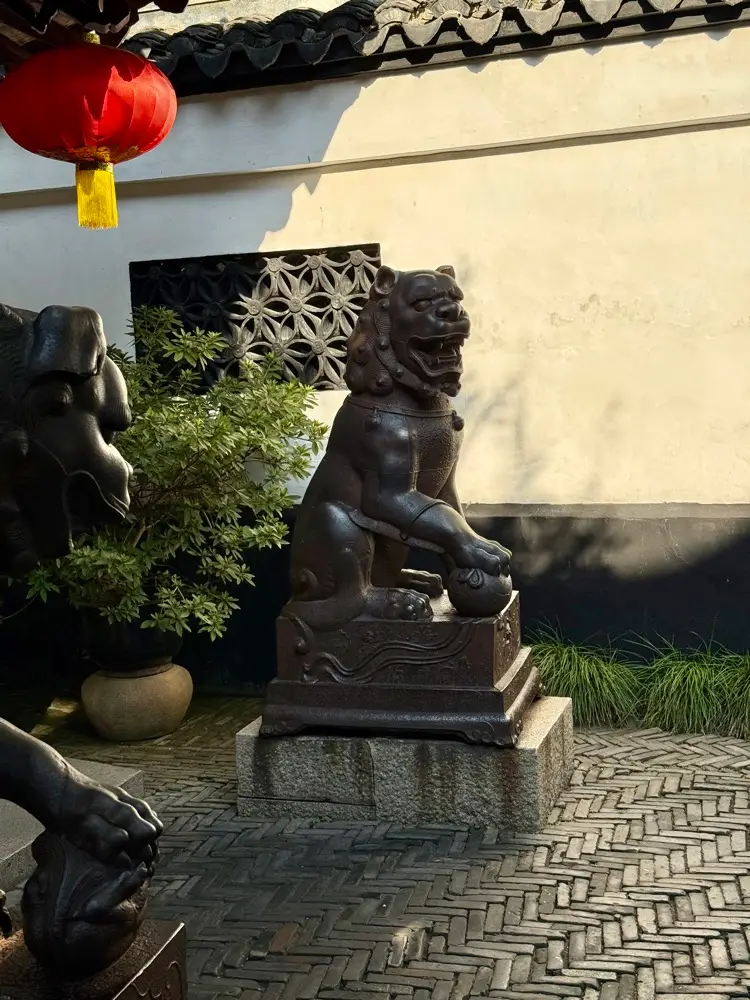
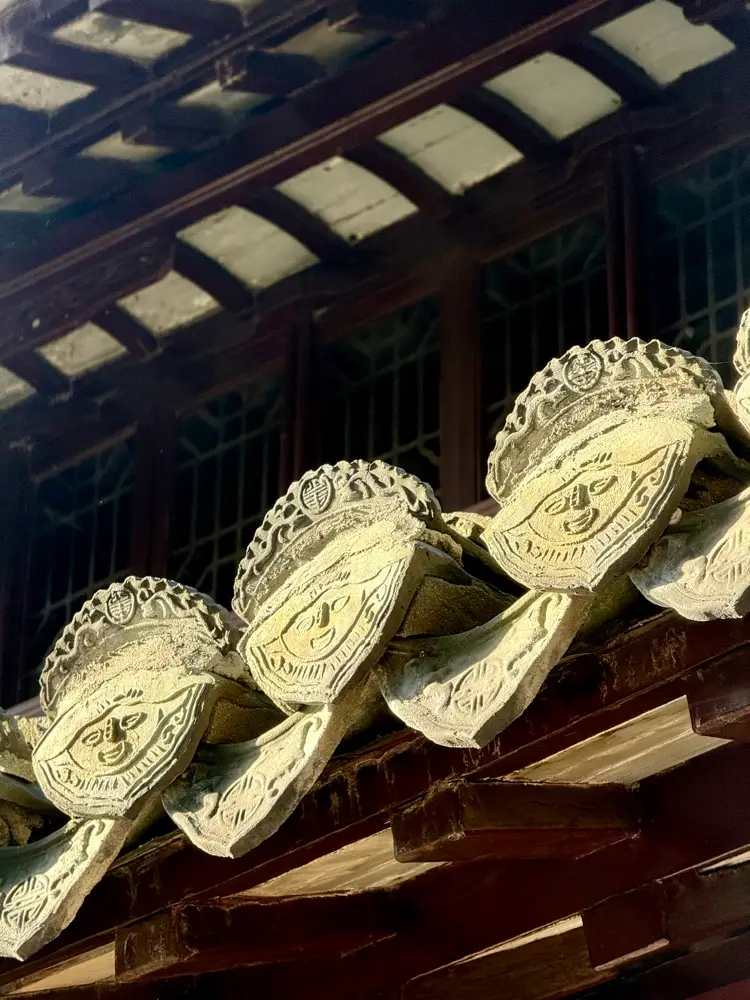
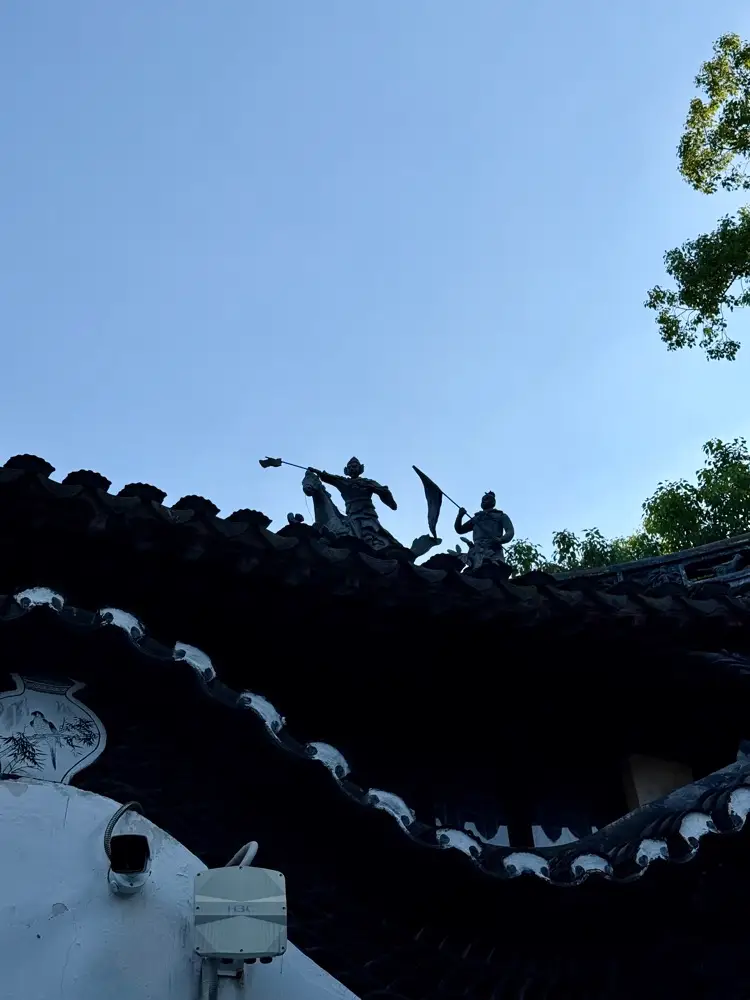
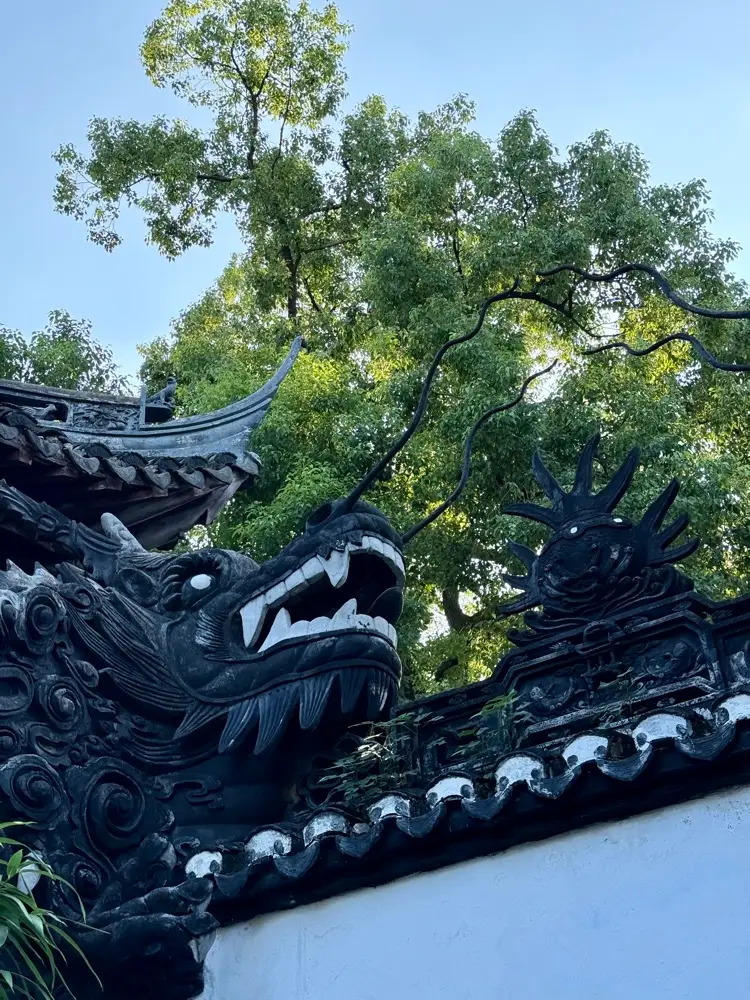
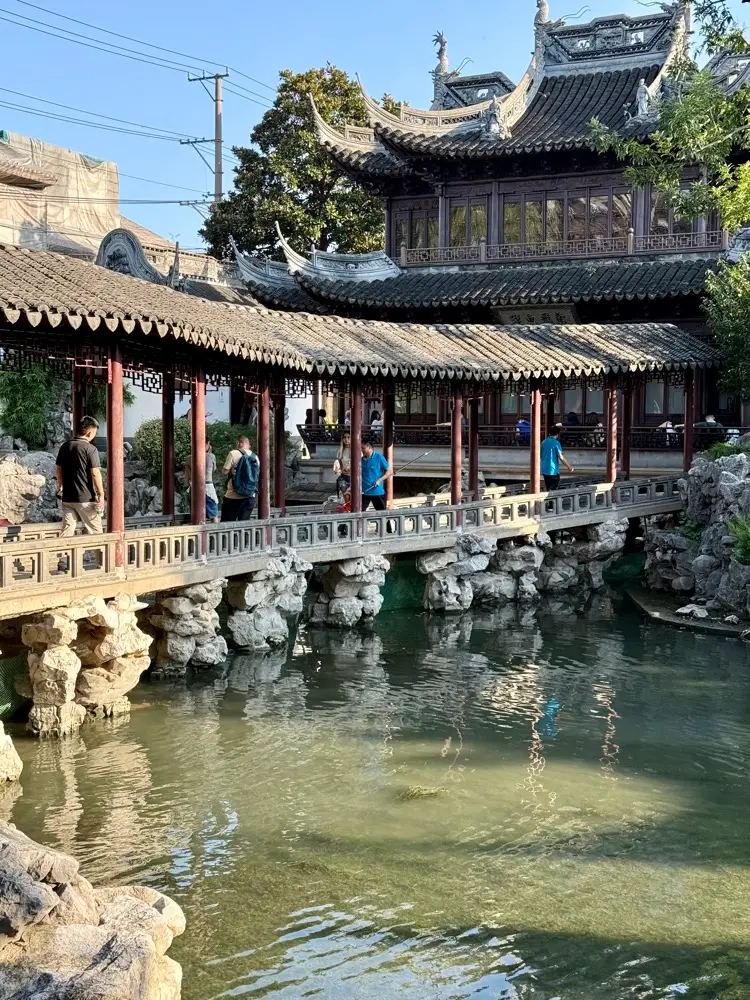
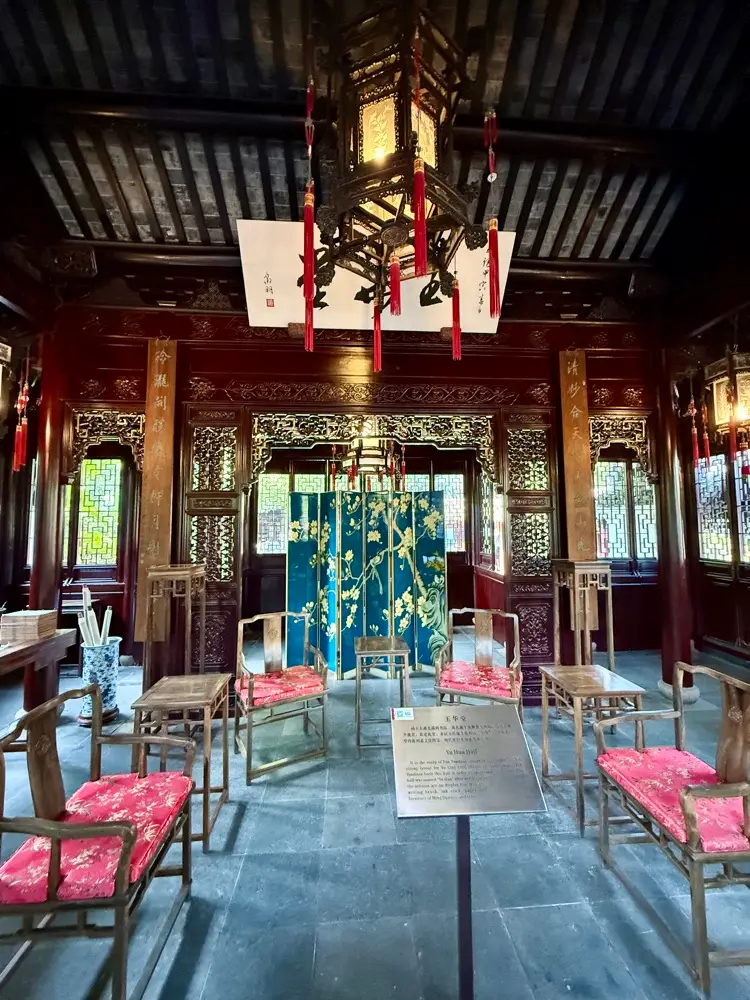
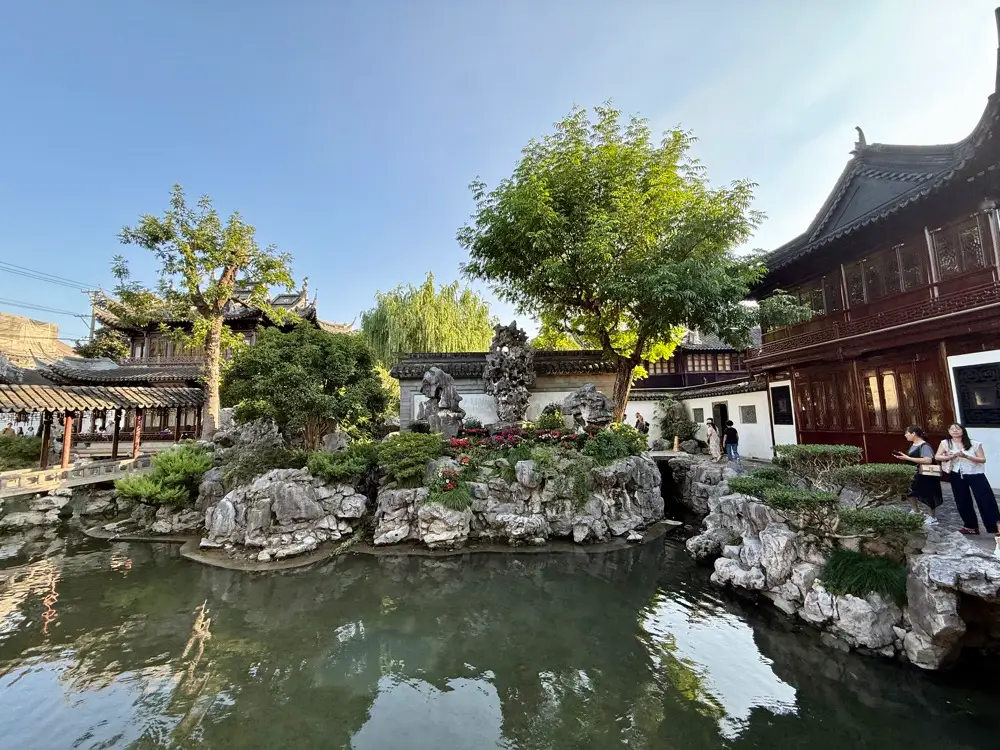
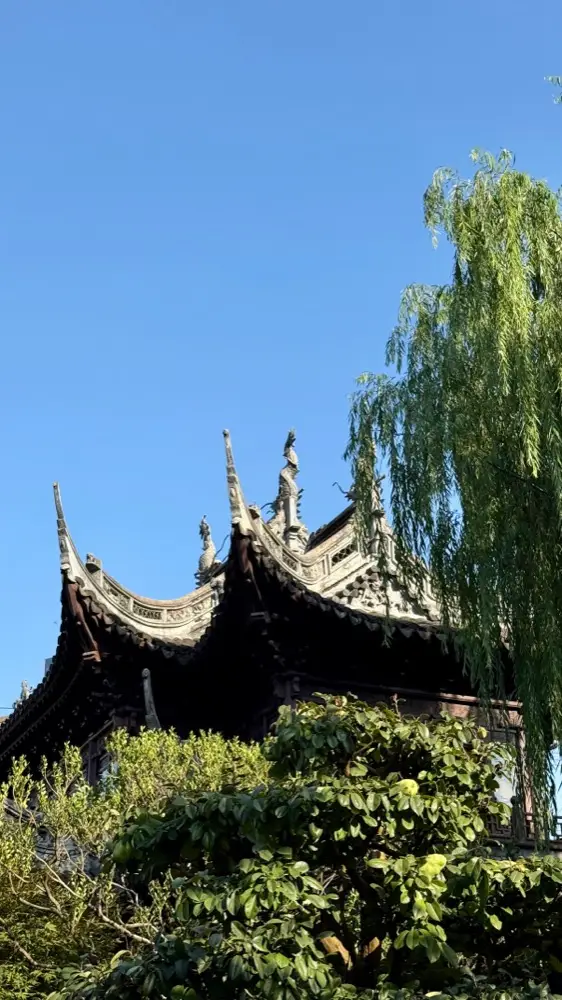
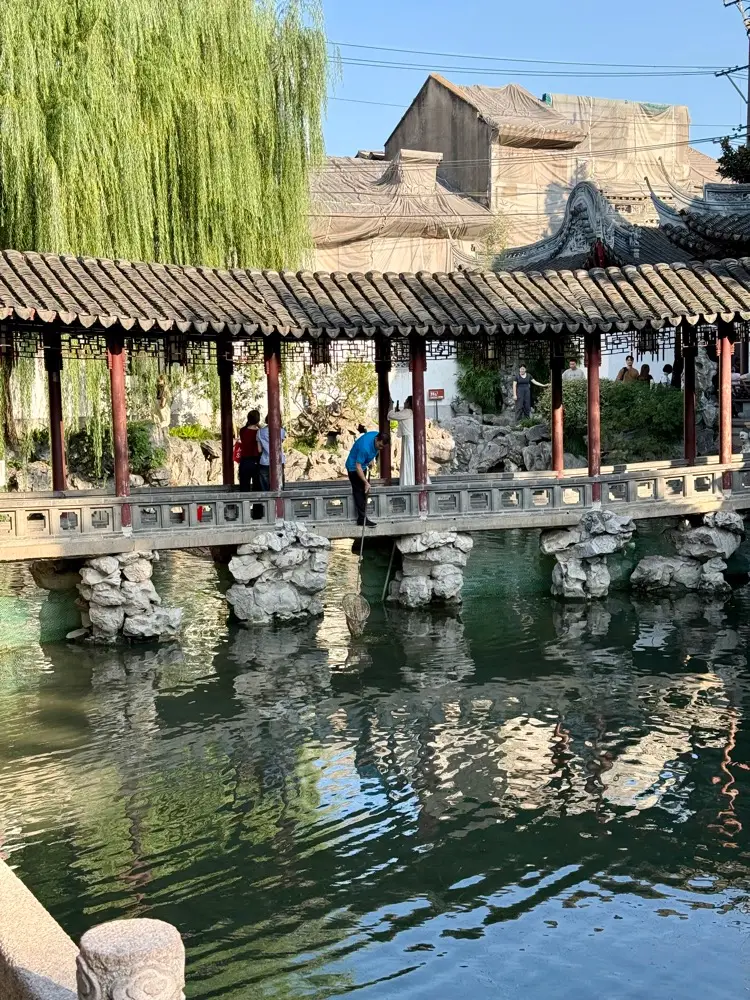
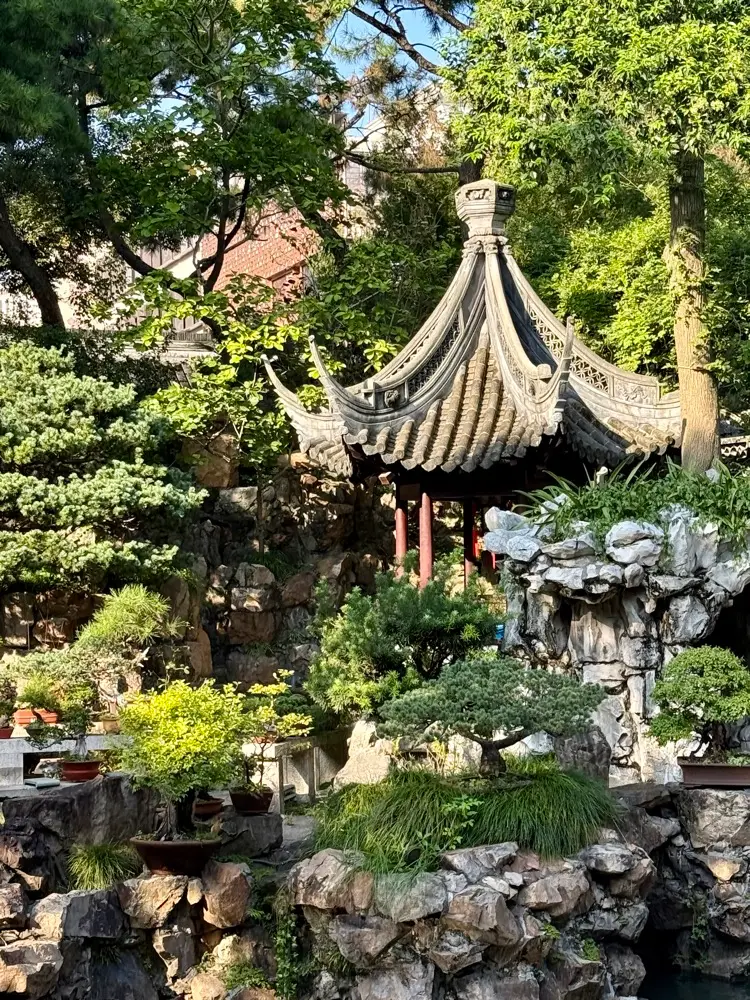
Just outside the garden lies the Yuyuan Bazaar, a lively network of alleyways where the old meets the new. Here you’ll find traditional artisans and tea houses alongside modern Chinese brands like Miniso and Pop Mart. It’s the perfect place to browse for souvenirs or grab a coffee, and Shanghai’s coffee scene is serious business, with more cafés per capita than any other city in the world. From Starbucks Reserve to tiny independent roasters tucked between shopfronts, there’s always somewhere inviting to sit and watch the bustle of the bazaar.
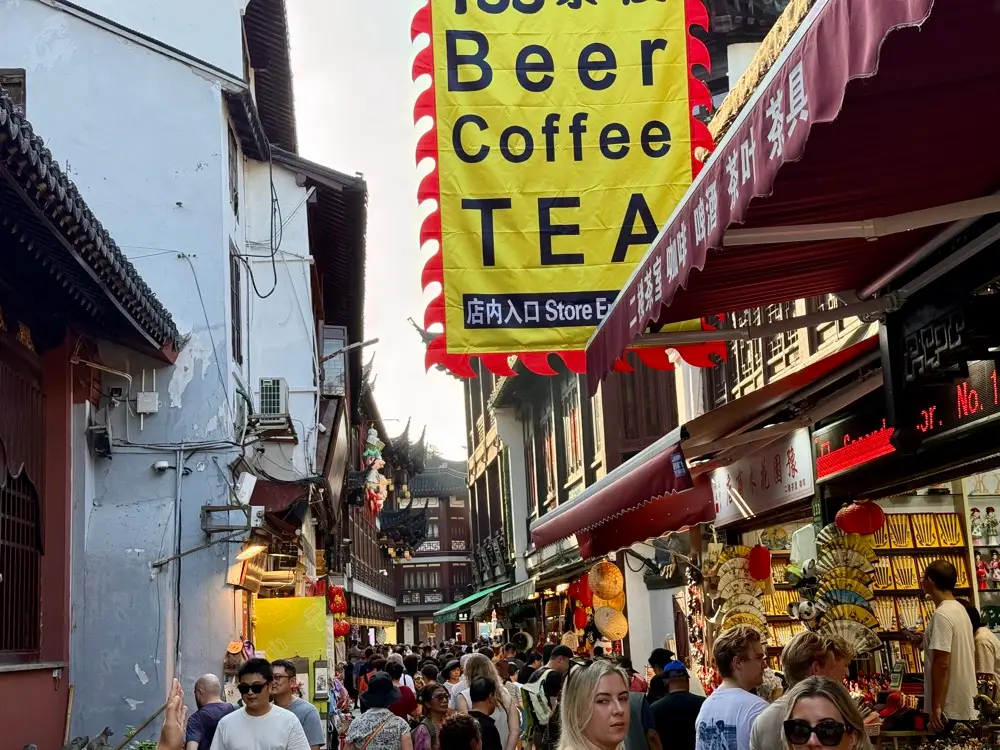
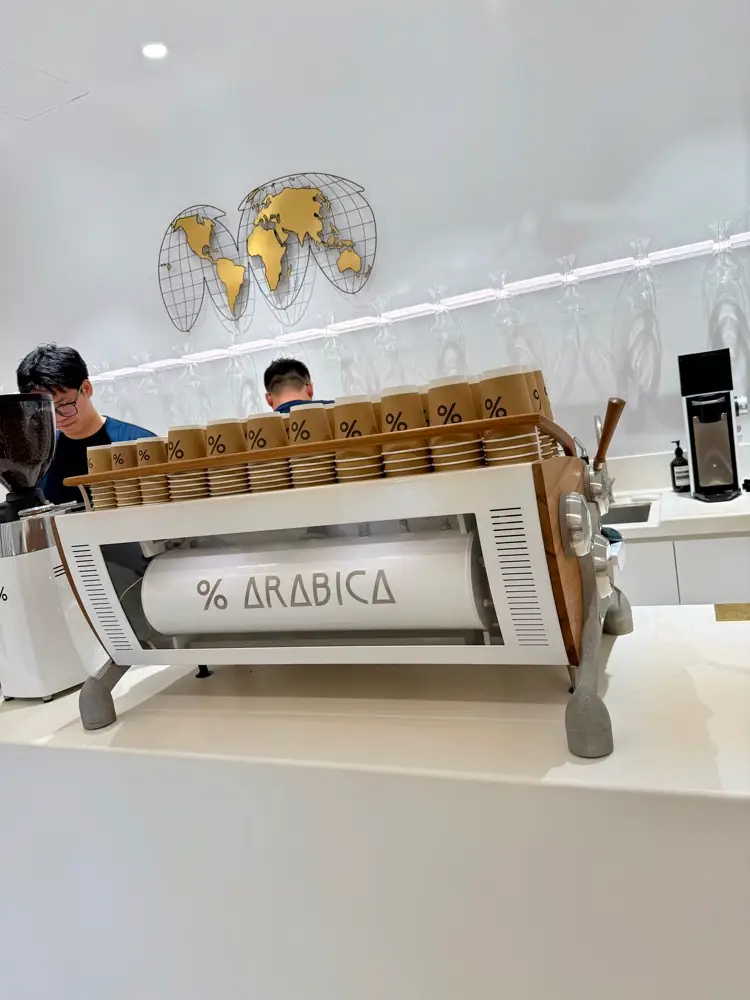
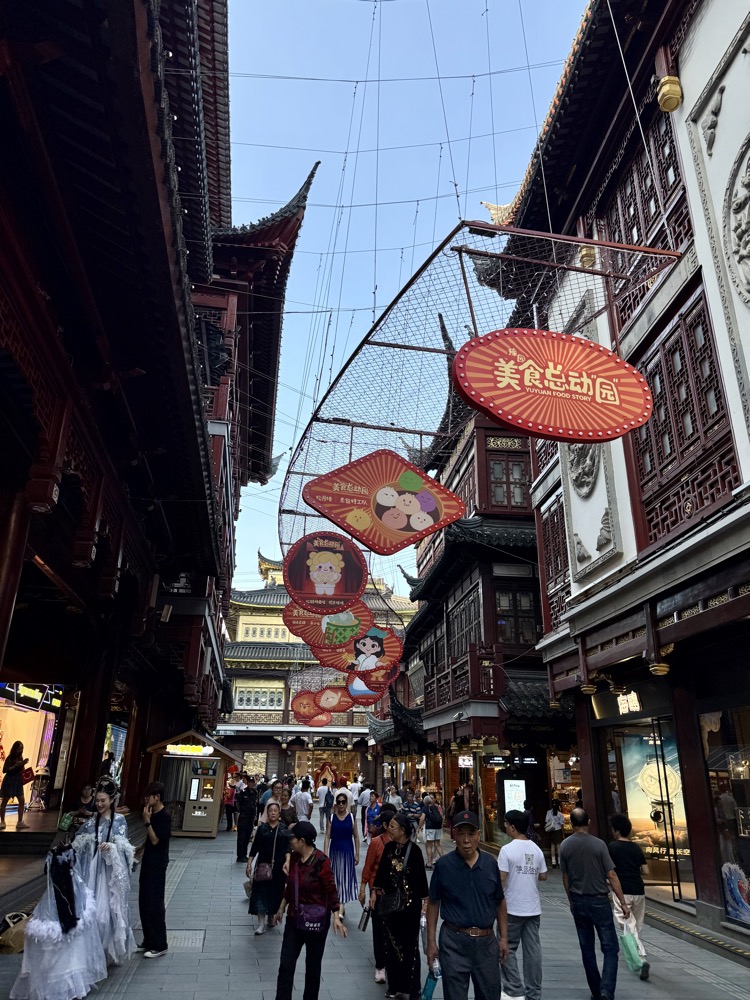
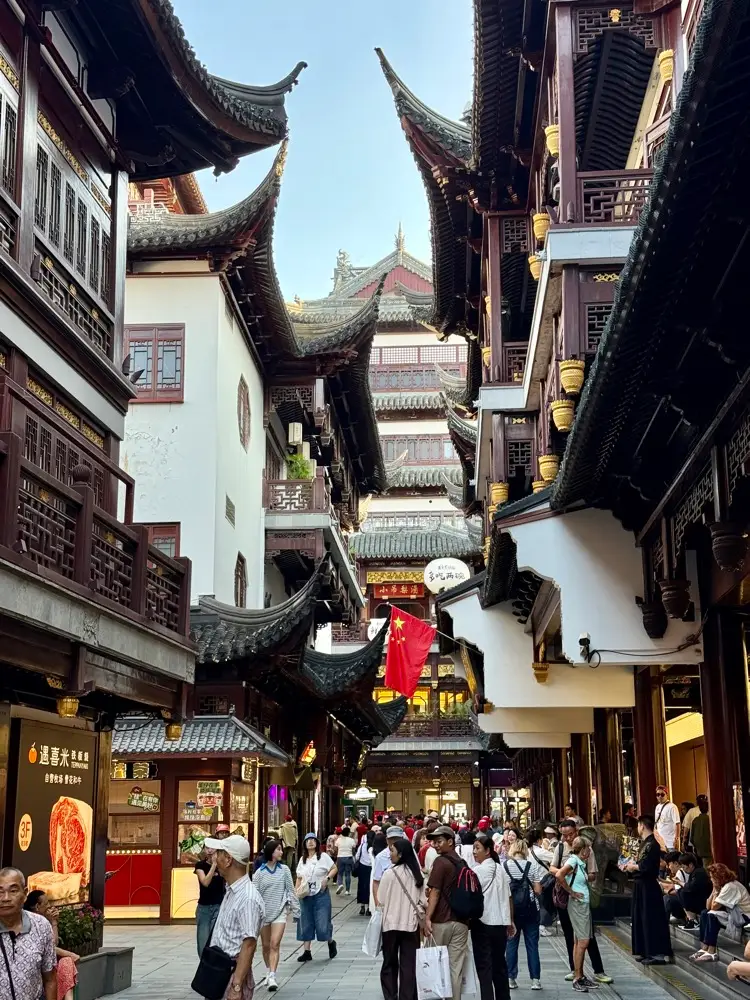
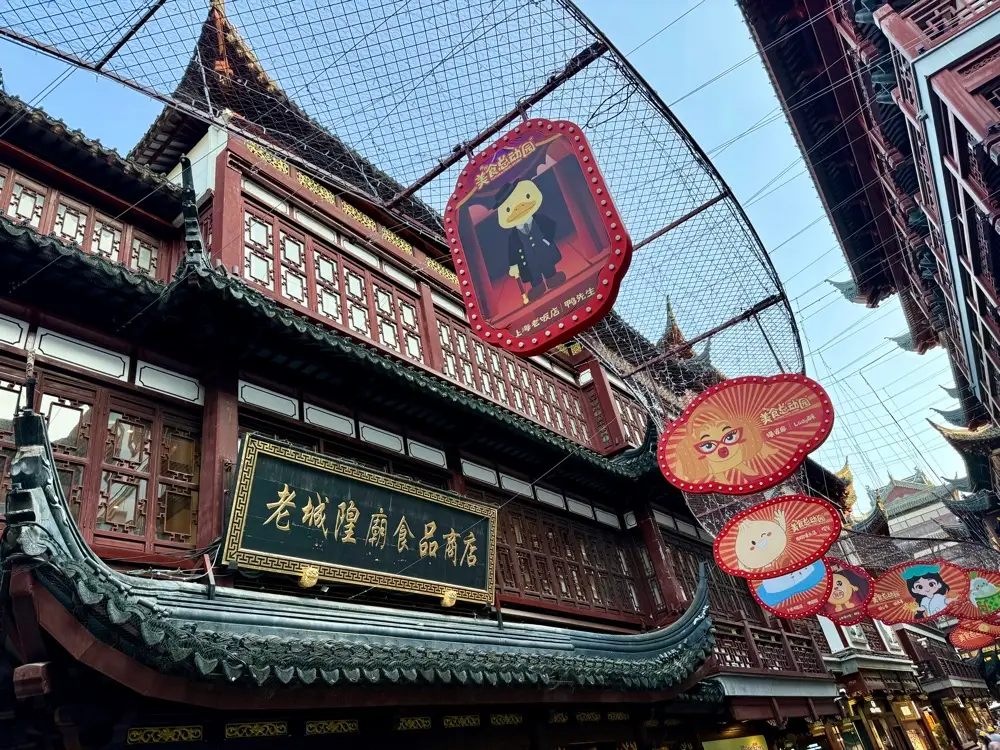
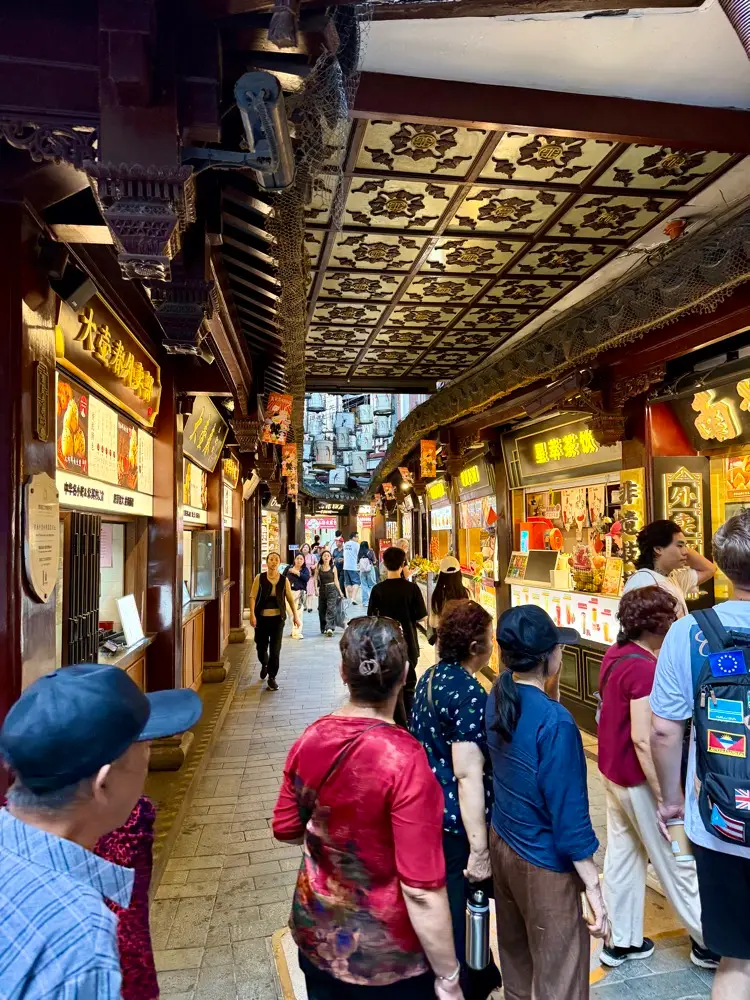
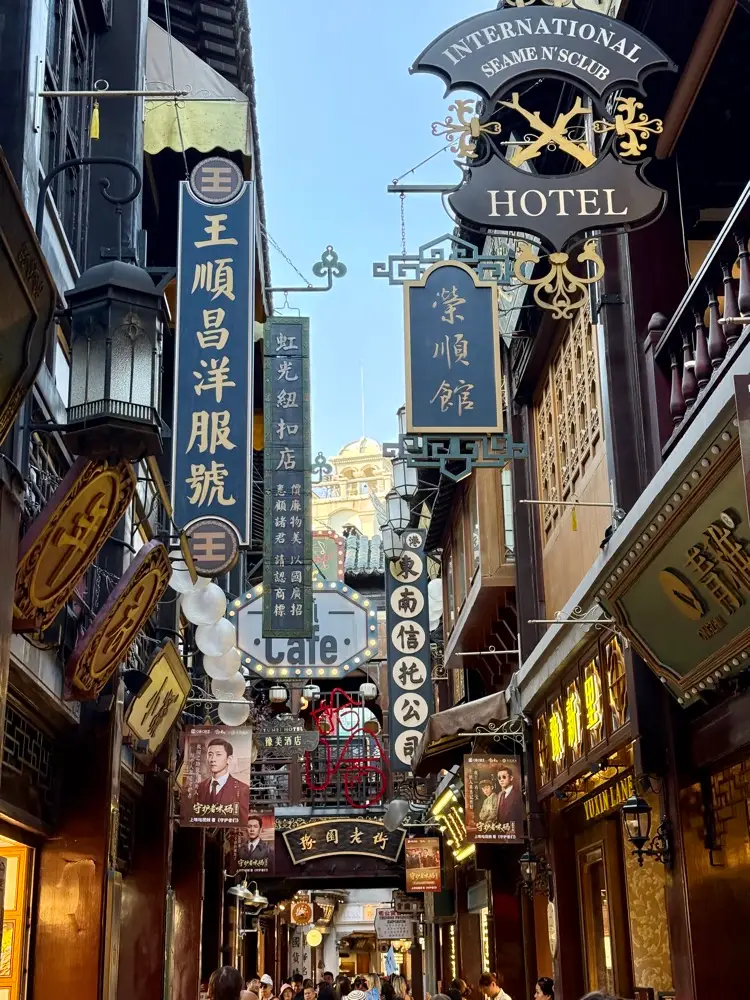
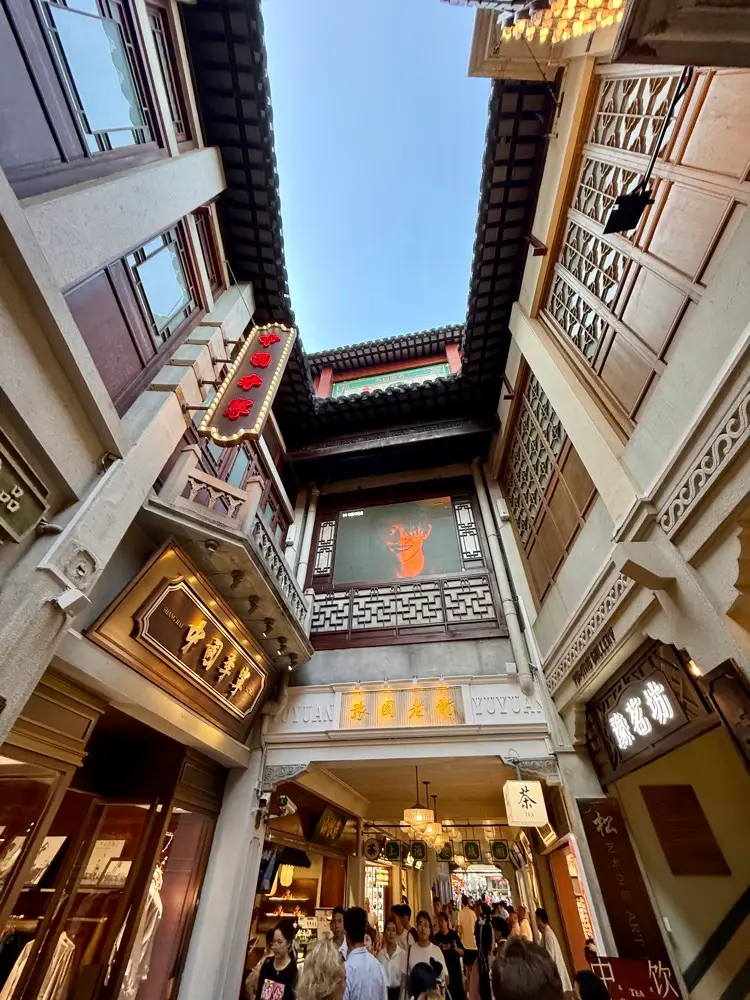
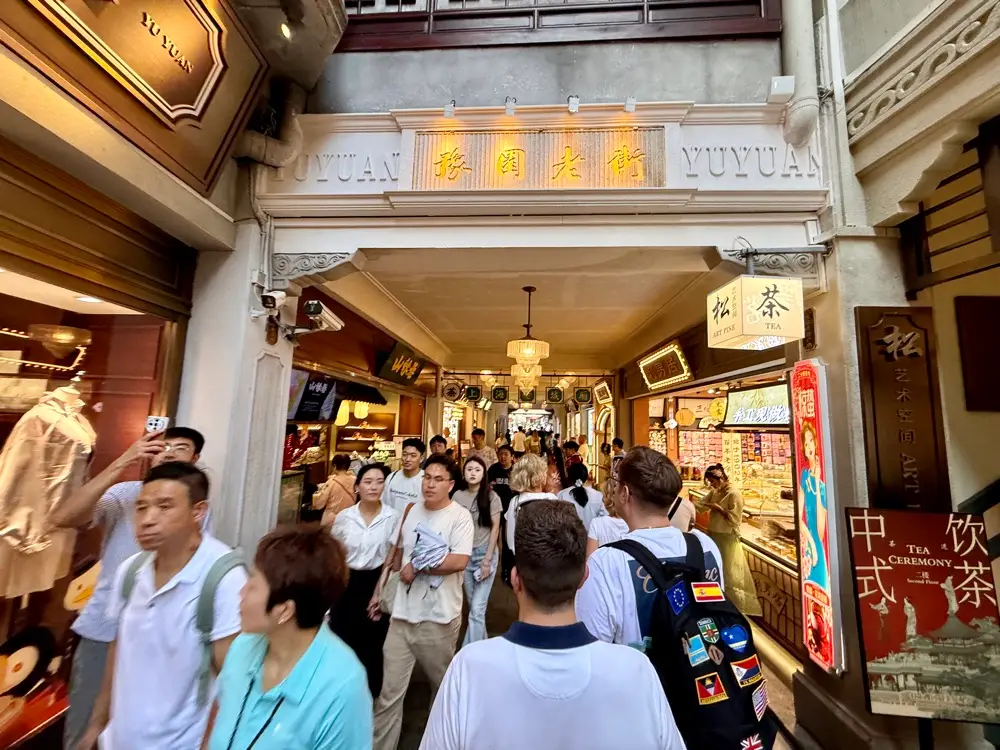
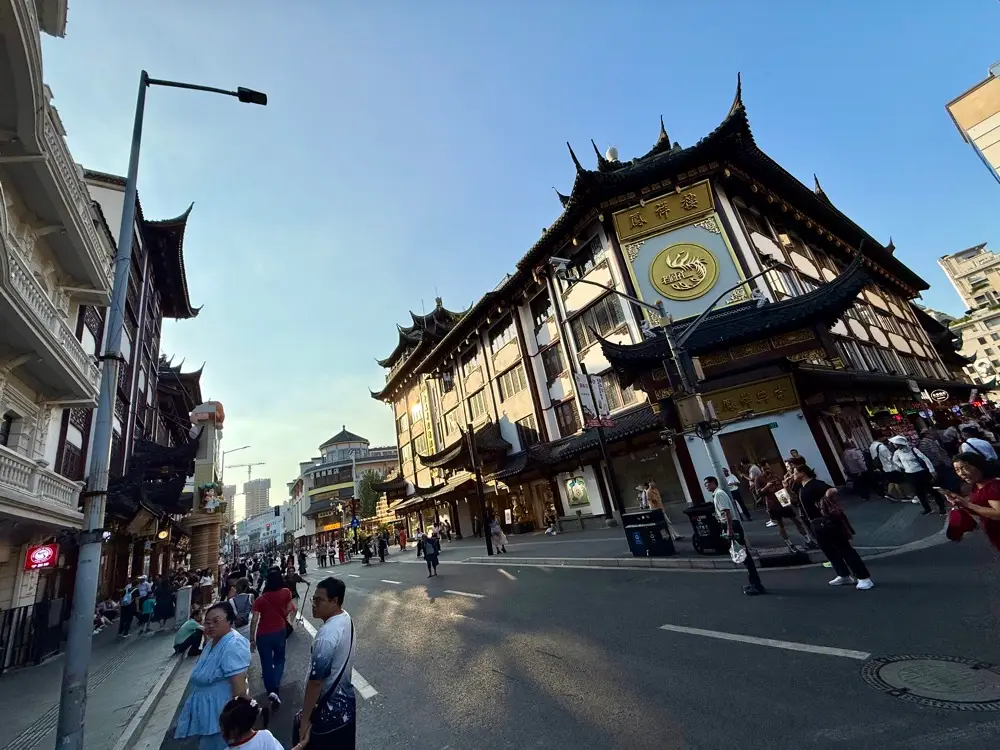
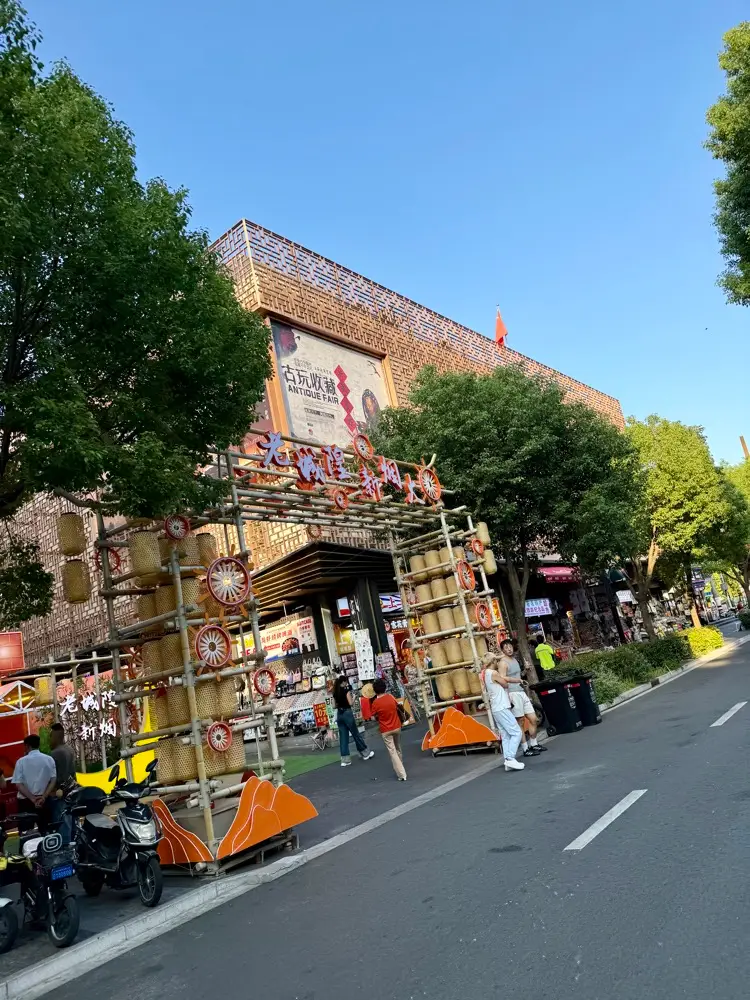
🌆 Sunset at The Stage Observation Deck
Our guides saved the best for last, taking us to The Stage, a new open-air observation deck at the top of the Magnolia Tower.
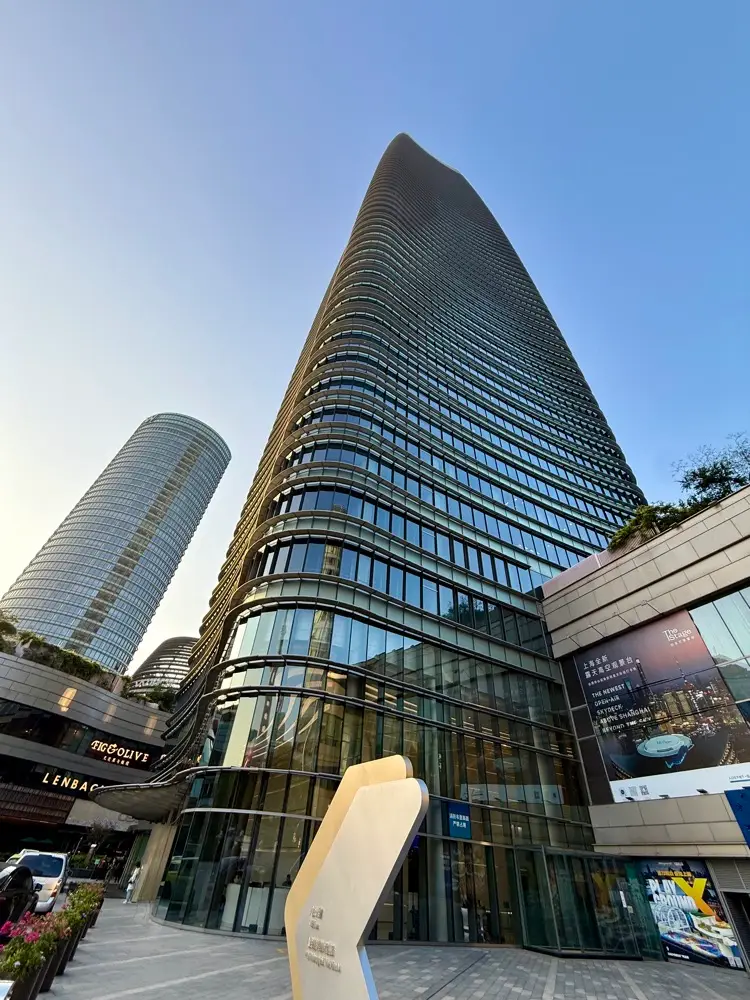
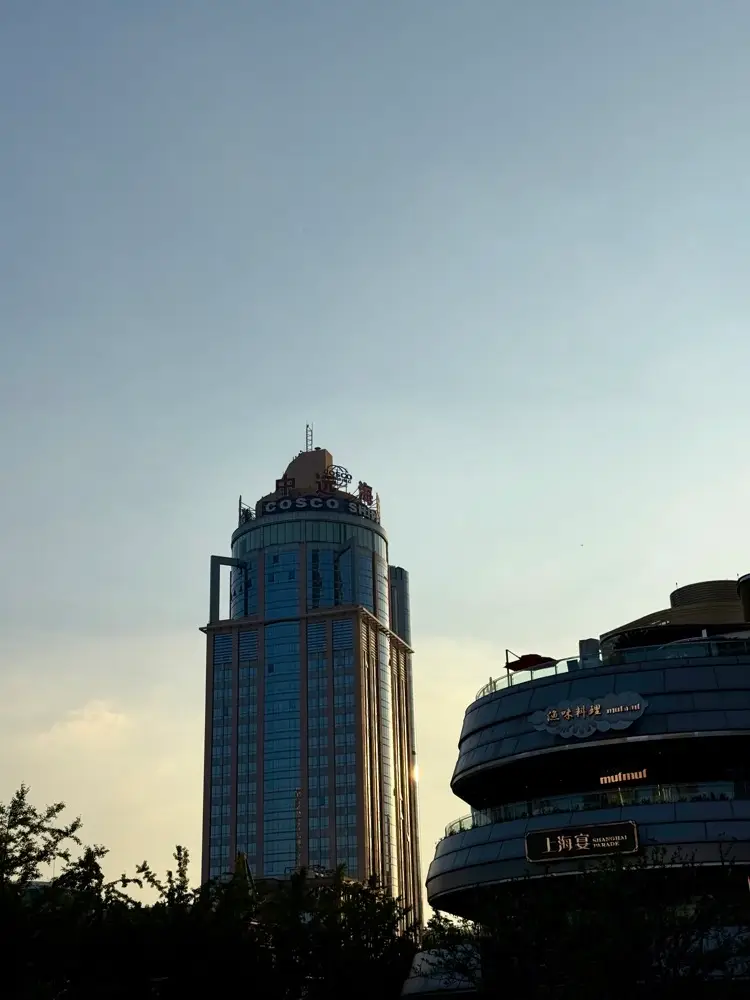
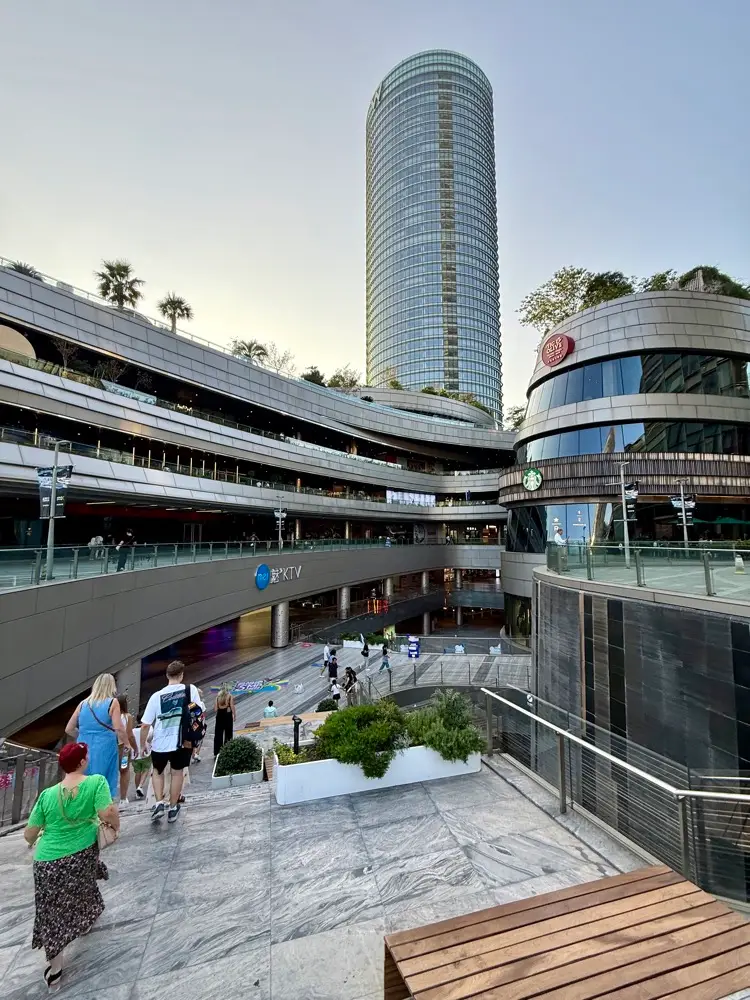
The Stage takes its name from Shakespeare’s Globe Theatre, and that influence is woven into its design and purpose. It’s not only a 360-degree viewing platform but also a cultural venue, hosting live performances, art exhibitions, and even traditional Chinese opera on select nights. It perfectly captures Shanghai’s love of art, innovation, and storytelling.
At more than 300 metres high, The Stage is the highest open-air viewing deck in China, and stepping out onto it is nothing short of breathtaking. The moment you step through the glass doors, the wind hits you, and the full sweep of Shanghai around you, the glowing spheres of the Oriental Pearl Tower, the twisting Shanghai Tower, and the endless shimmer of lights stretching across the Huangpu River.
When we visited, the city was still celebrating the Mid-Autumn Festival, also known as the Autumn Lunar Festival, which had taken place the week before. To mark the occasion, a stunning temporary art installation had been set up on the deck, featuring dozens of illuminated white rabbits, all facing a glowing full moon above the skyline. It was whimsical, calming, and oddly moving, a creative nod to the festival’s themes of reunion, reflection, and light.
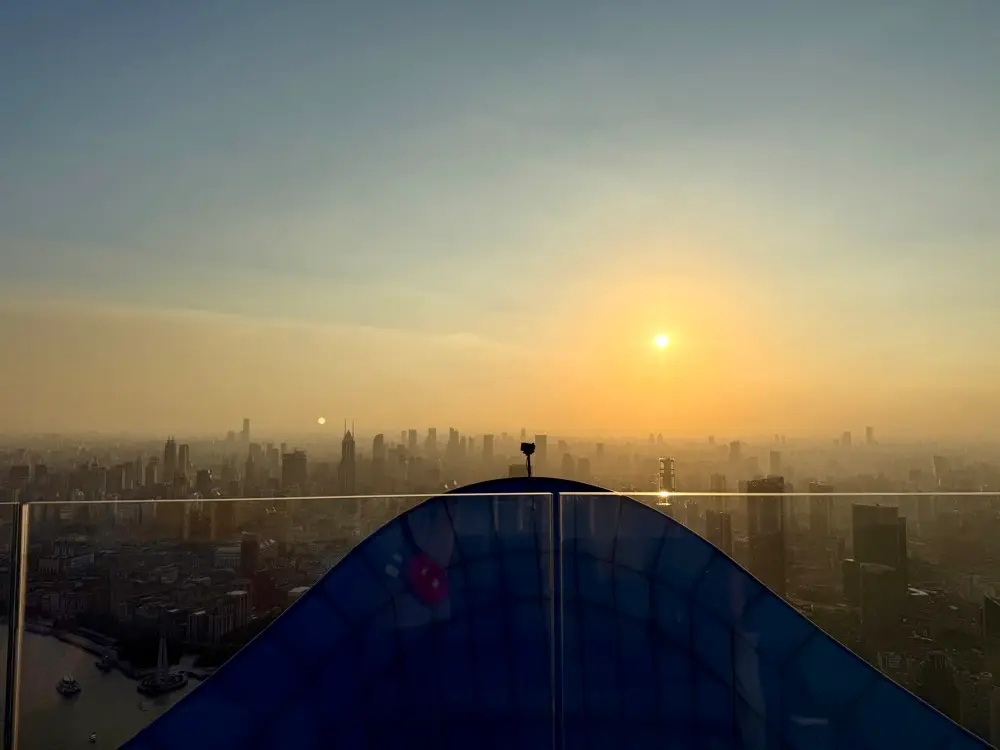
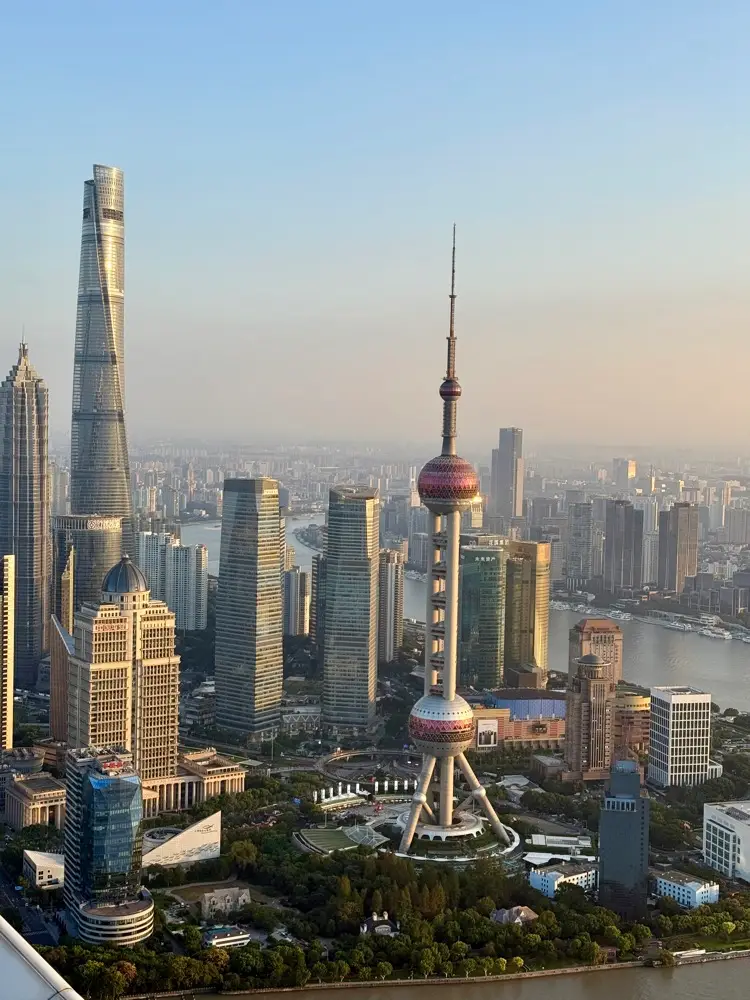
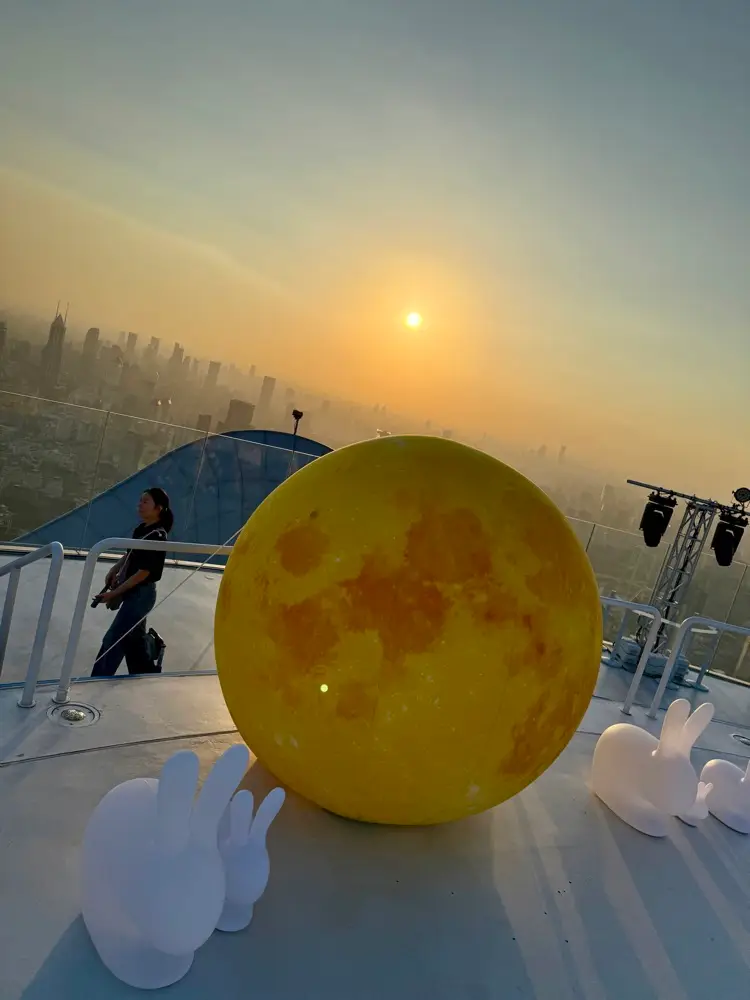
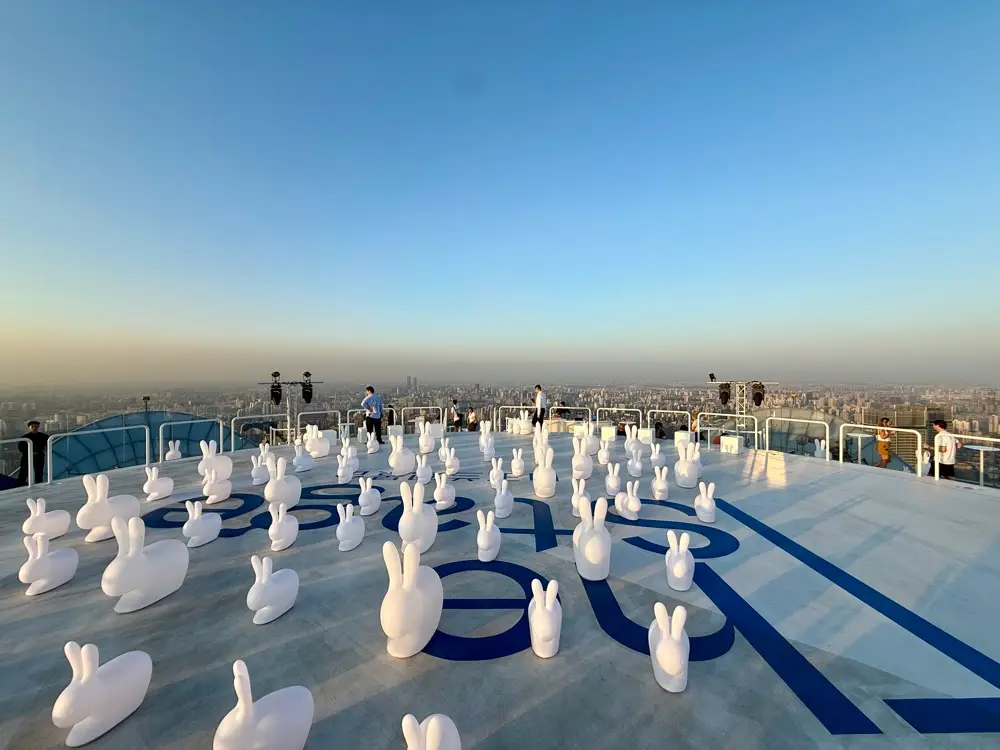
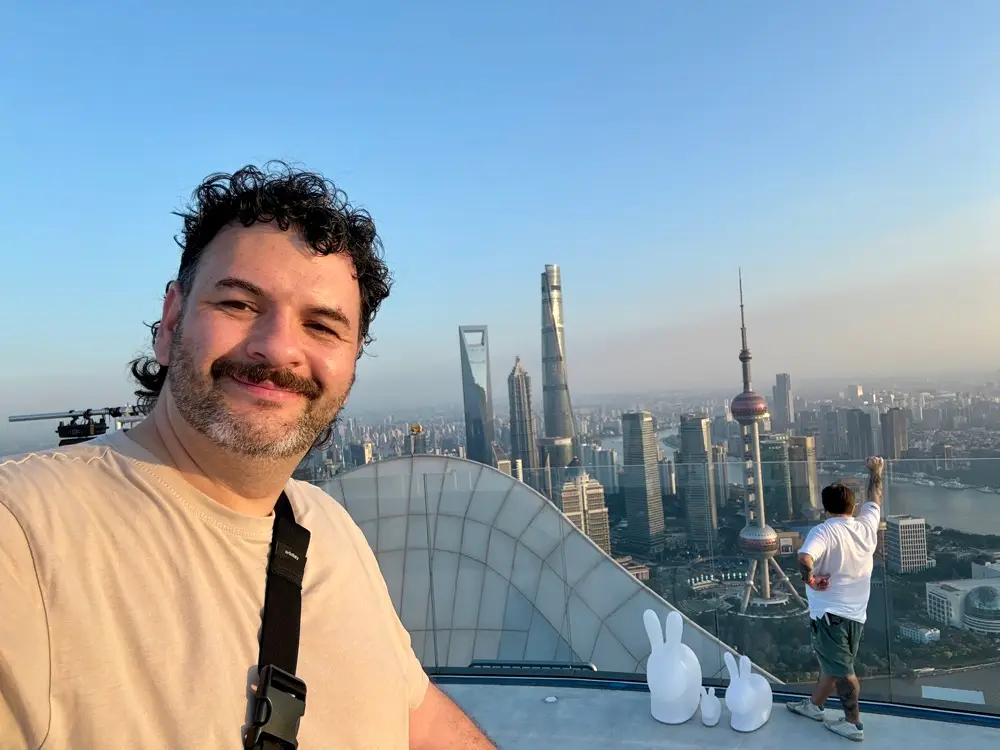
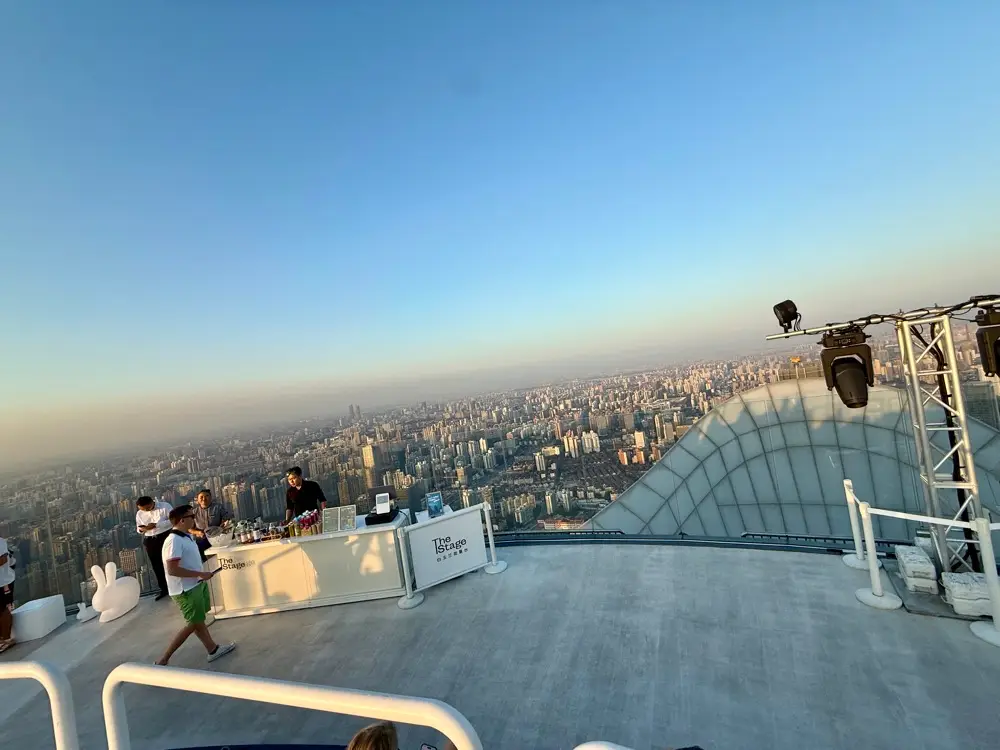
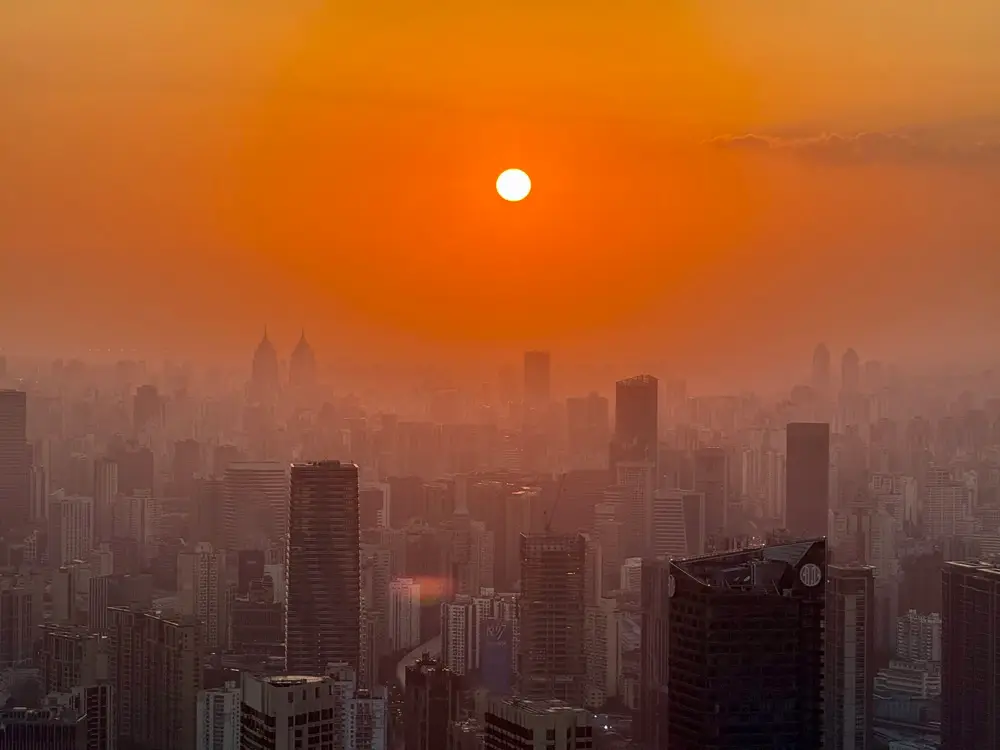
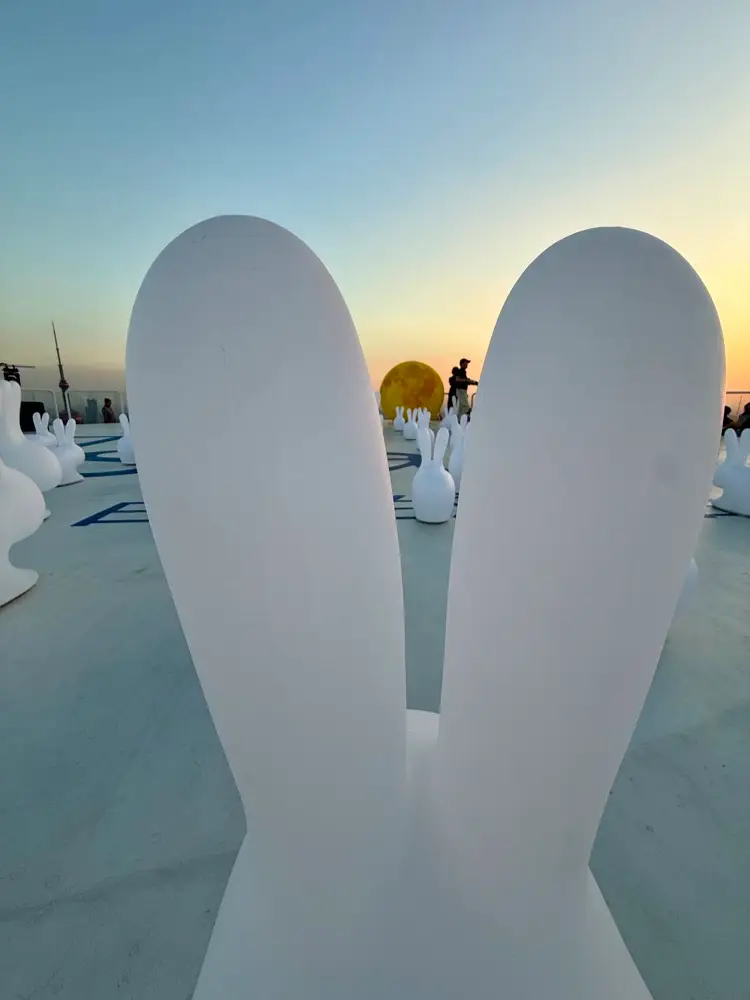
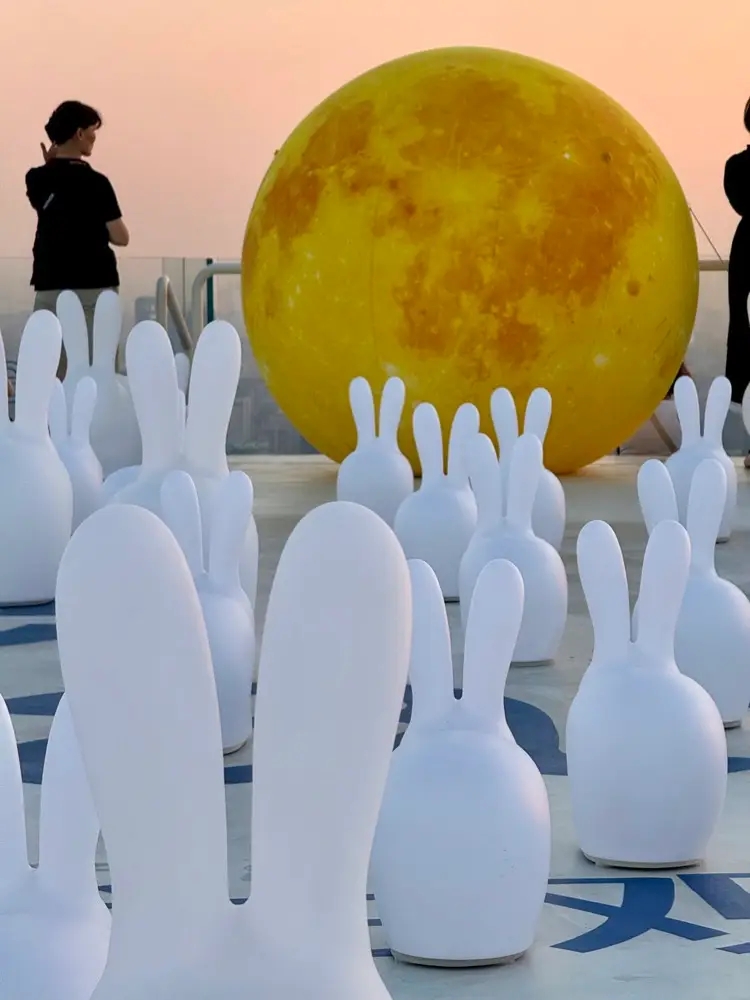
As the sun dipped below the horizon, the city came alive. A DJ played smooth, ambient house music, the bar served cocktails, and people gathered quietly to watch the skyline transform from gold to neon.
It was the perfect way to end our first full day in China, standing high above Shanghai, looking out over the river, surrounded by lights, music, and the hum of one of the world’s most dynamic cities.
🍷 Dinner in the French Concession
That evening, we joined the President of Royal Caribbean China for dinner in the French Concession, one of Shanghai’s most stylish and historic districts.
We ate at Chez Jojo, a chic French bistro with a relaxed, European feel. The moment we stepped inside, it was easy to forget we were in the heart of China. The restaurant had that classic French charm, soft lighting, elegant plating, and a warm, unhurried atmosphere.
At first, it might sound unusual to be eating French food in Shanghai, but in many ways, that’s what makes this city so remarkable. Shanghai has always been an international hub, and that global spirit is reflected in its dining scene. Alongside traditional dumpling houses and street food stalls, you’ll find Michelin-starred restaurants, experimental fusion concepts, and world-class chefs representing cuisines from every corner of the globe.
The French Concession itself is a perfect example of Shanghai’s cosmopolitan identity. The tree-lined streets are filled with art deco architecture, boutique shops, and cafés that wouldn’t look out of place in Paris. It’s calm and elegant, yet unmistakably part of this vibrant, modern city.
Dining here felt like the perfect way to end the evening, a moment to slow down, reflect on the day, and appreciate how Shanghai effortlessly blends cultures, flavours, and histories into something completely its own.
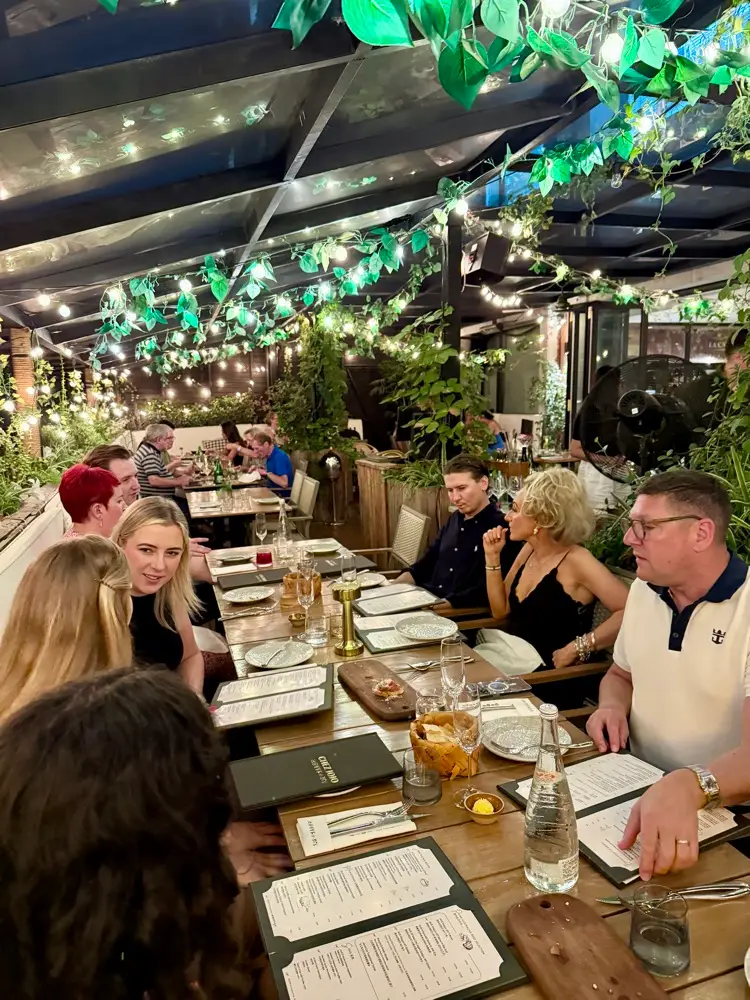
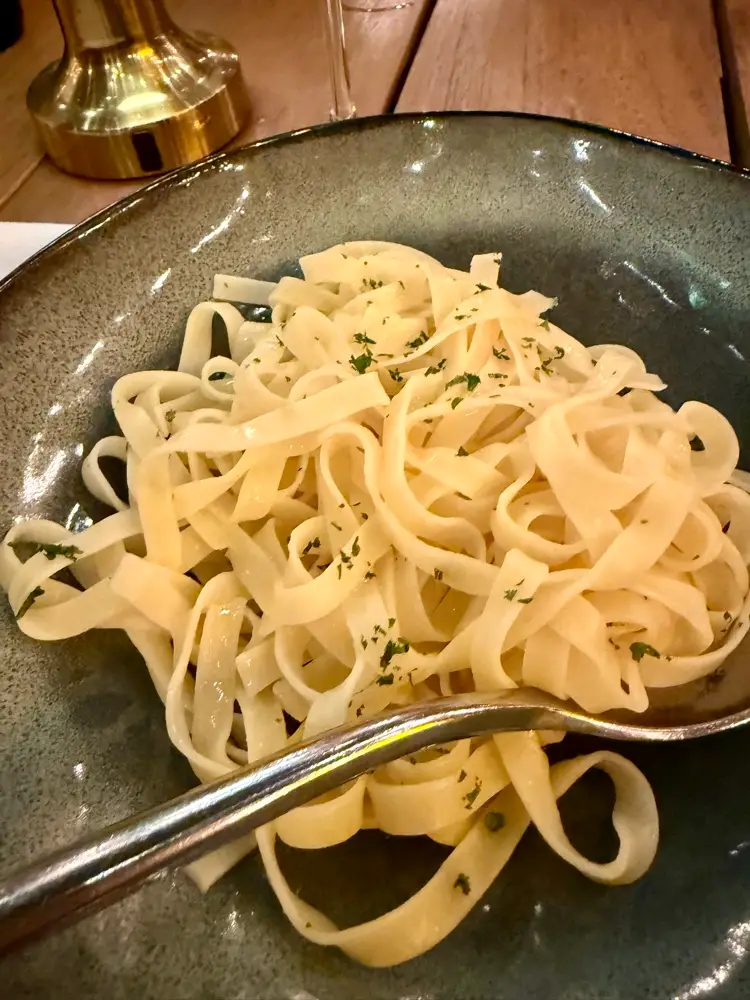
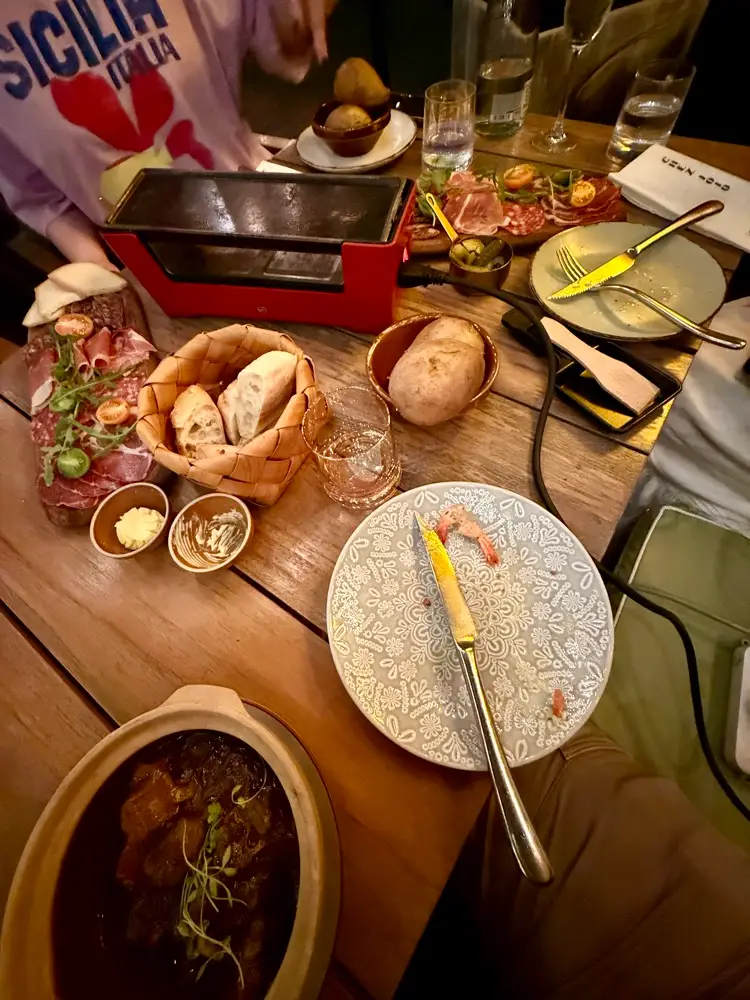
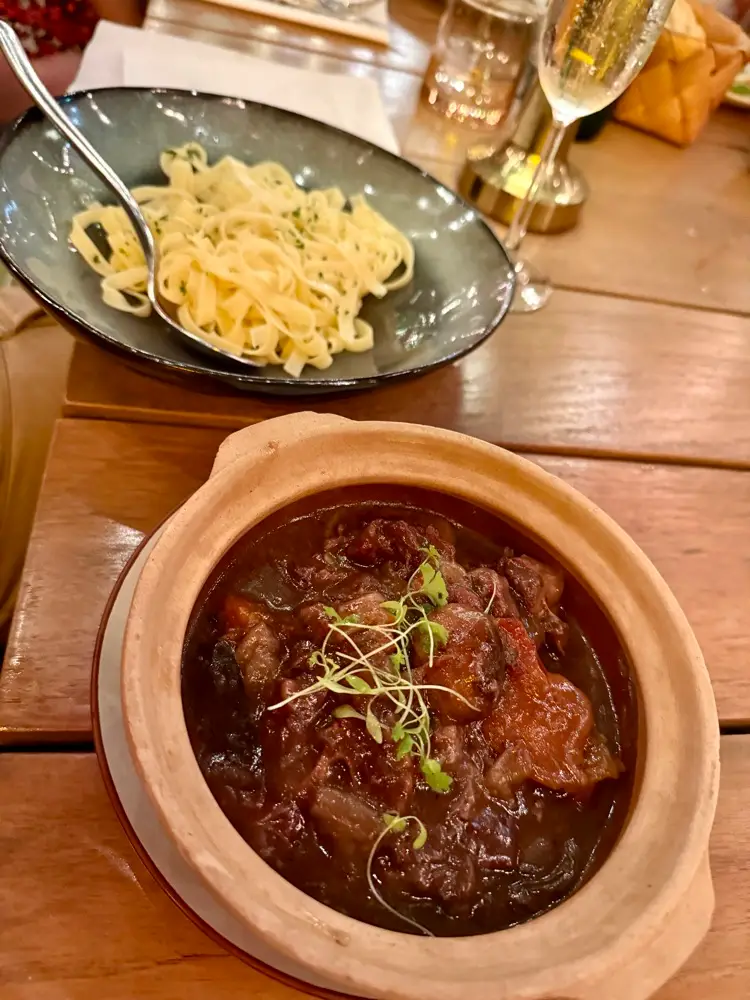
💳 Learning to Live Like a Local
Before visiting, I’d read that China can be difficult to navigate for Western travellers. It’s true that the systems are different, but once you understand them, everything becomes easy.
Most daily life revolves around Alipay and WeChat, which handle payments, taxis, translations, and more. You can link your UK bank card and pay for almost anything by scanning a QR code. The taxi app Didi (similar to Uber) also works perfectly with built-in translation tools.
Once you stop comparing it to the UK and start embracing how things work here, you realise how convenient it actually is. So you do need to prepared with the right apps and a good e-sim/VPN, but its alot easier than you may think.
COMING SOON – Guide on the best apps to use in China and our top tips
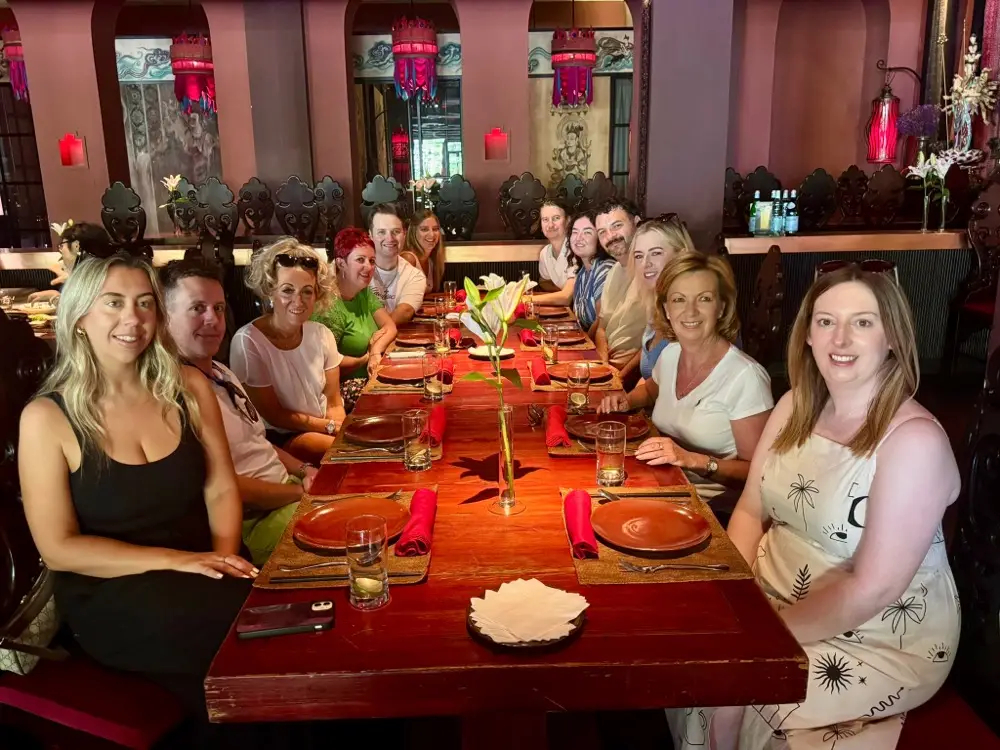
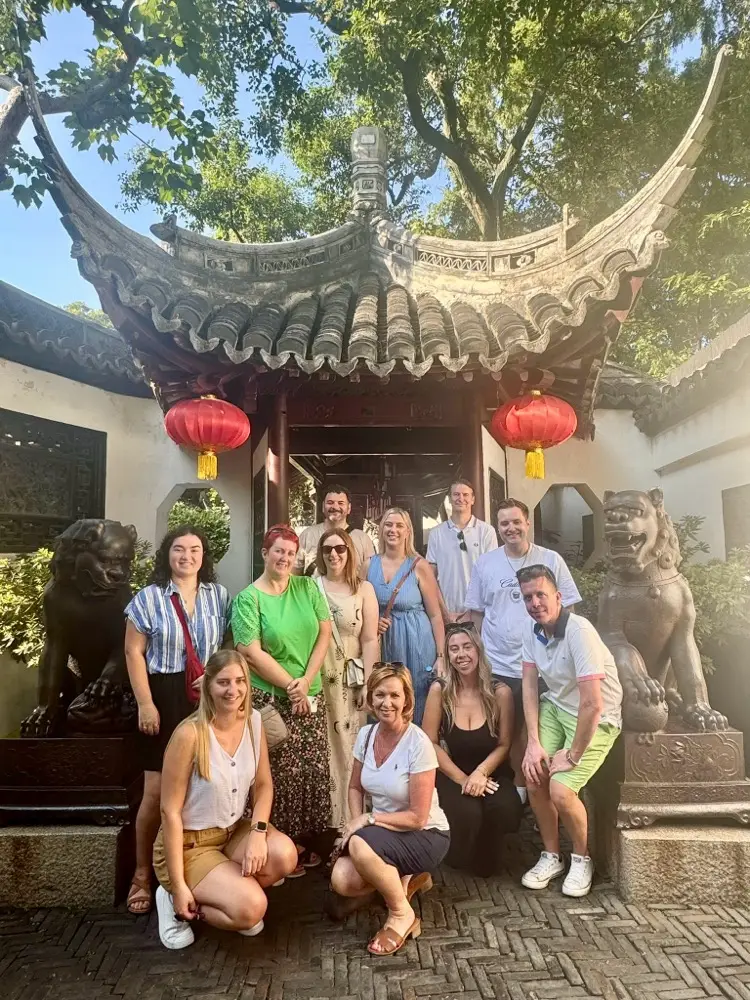
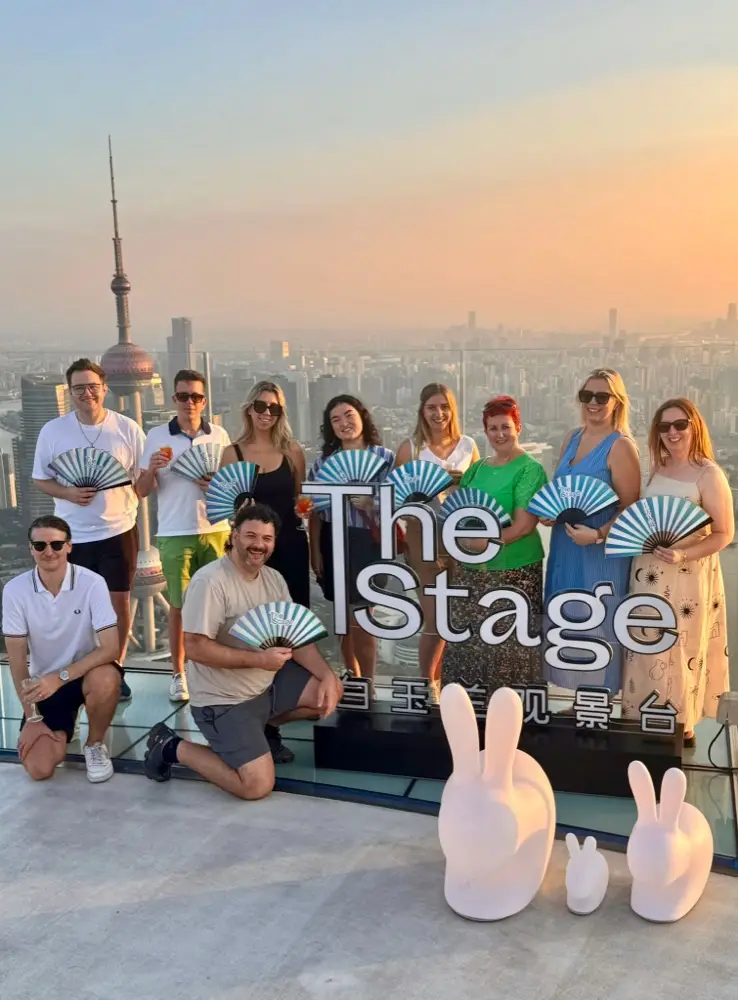
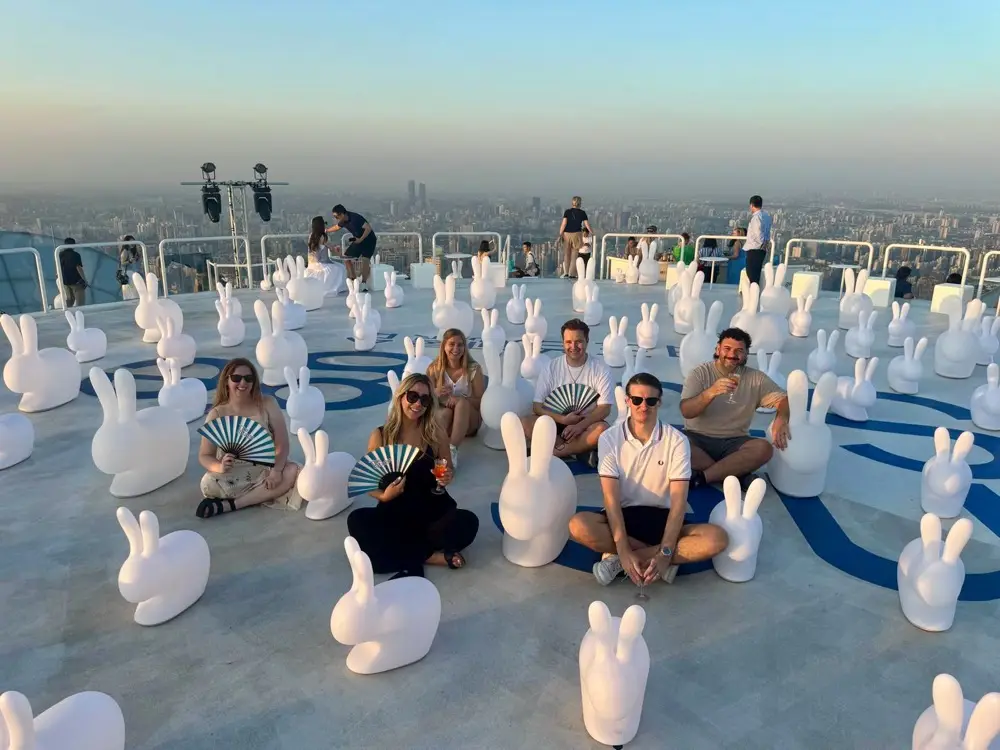
🛂 Visa-Free Transit in China
A common question is whether you need a visa to visit China if you’re joining a cruise. For many UK travellers, the answer is no.
If you’re flying into Shanghai and spending less than ten days in China before boarding a cruise that visits another country, you can usually take advantage of the Transit Visa-Free Policy.
There are different options depending on your route (24, 72, 120, or 144 hours), but as long as your trip follows the “third country rule” – arriving from one country and leaving for another – you don’t need a full visa.
Disclaimer: This information is based on my personal experience using the 240-hour visa-free system. Always check current entry requirements with the Chinese Embassy or FCDO before travelling. FCDO China Page
Read our full Guide to Cruising from Shanghai Visa-Free.
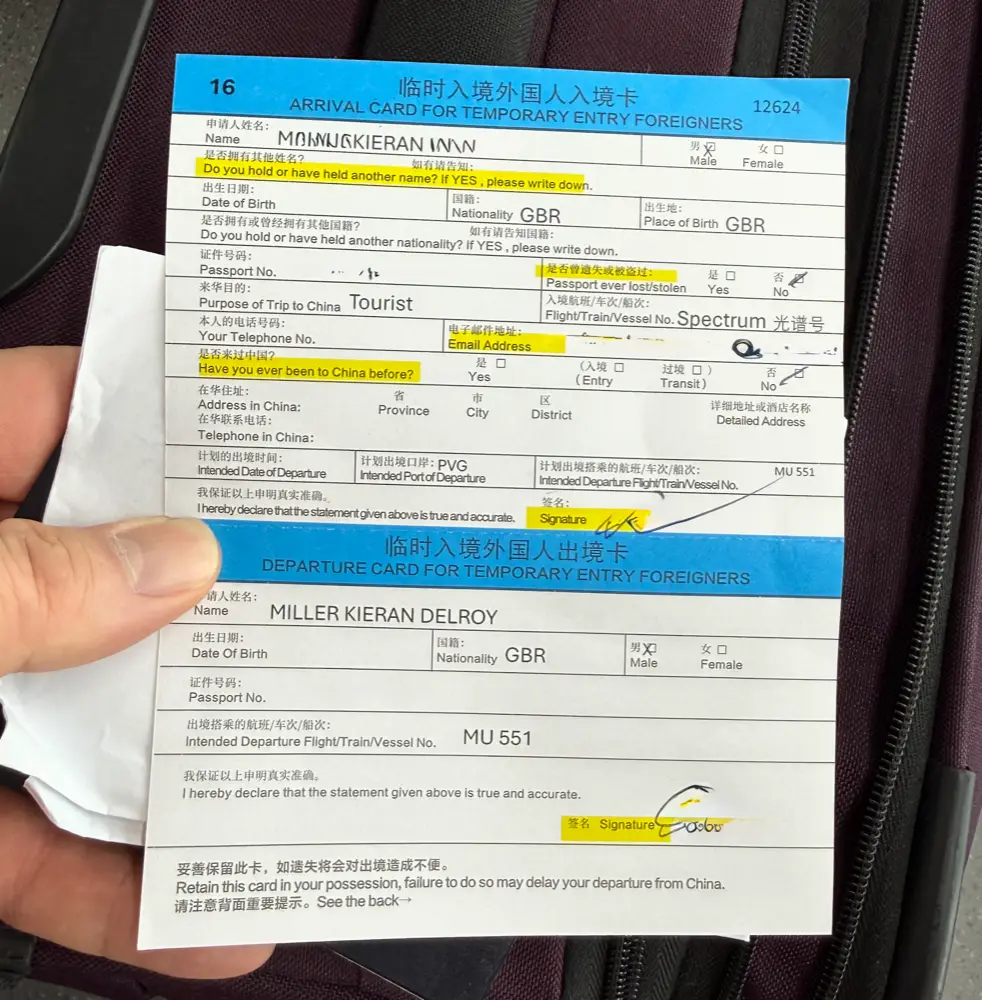
🌙 Reflections on Our First Day – Pre-Cruise in Shanghai Before Royal Caribbean Sprectrum of the Seas
That first 24 hours in Shanghai completely changed how I see travelling to China.
I expected challenges and cultural hurdles, but instead found a city that was friendly, clean, and incredibly efficient. Shanghai is proud of its history yet boldly modern, deeply traditional yet creative and forward-thinking.
Whether you’re here to embark on a Royal Caribbean cruise, explore its heritage, or simply enjoy the skyline at night, it’s a city that instantly captures your heart.
After just one day, I was completely hooked.
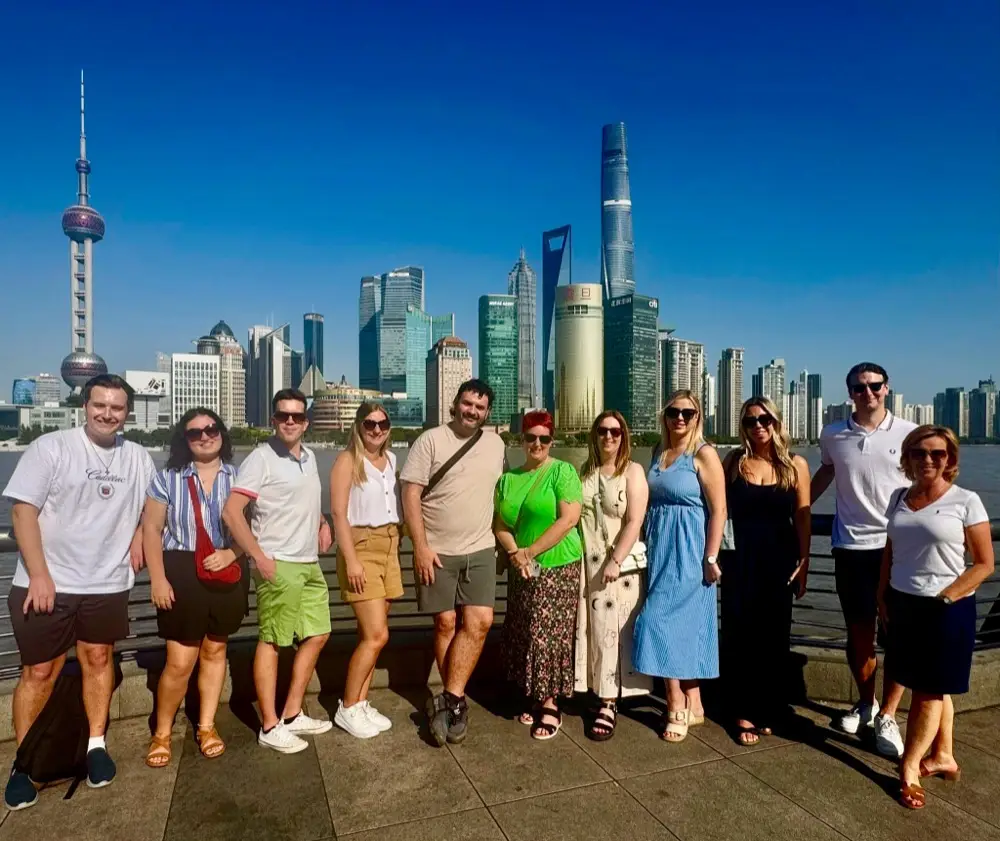
🚢 Coming Next:
👍 Join the Facebook Group Now
Use this link to Join Our Royal Caribbean Facebook Group
Or sign up below to get our latest cruise offers and news straight to your inbox.
